Sustainable Tourism vs. Ecotourism: What's the Difference?
If you're starting to research more ways to become a more responsible traveler, you're bound to run across terms like "sustainable tourism,” "ecotourism," and "voluntourism,” sometimes even used interchangeably. But what do they all mean? In reality, ecotourism refers to the sector of low-impact tourism that includes natural areas, whereas sustainable tourism is a broader term describing sustainable practices within and performed by the tourism industry.
The environmental damages that can stem from irresponsible tourism have continued to come to light through complications from overtourism (when a destination or attraction suffers from overcrowding or an excess of tourists it isn’t designed to handle) and land degradation (when increased construction of tourism infrastructure negatively affects land resources and biodiversity). These terms are more than just travel industry buzzwords; sustainable travel is—hopefully—here to stay.

What Is Sustainable Tourism?
Sustainable tourism encompasses all forms of tourism that consider the long-term economic, social, and environmental impacts of tourism while addressing the needs of visitors, the environment, host communities, and the tourism industry itself. According to the Global Sustainable Tourism Council (GSTC)—an organization that sets global standards for sustainable travel and tourism—sustainable tourism doesn’t refer to a specific type of tourism but is rather an aspiration for the impacts of all forms of tourism.
Specifically, "sustainable tourism takes full account of its current and future economic, social and environmental impacts, addressing the needs of visitors, the industry, the environment, and host communities." This includes conservation efforts, preserving cultural heritage and traditional values, and providing equitably distributed socio-economic benefits.
Destinations and industries may practice sustainable tourism by prioritizing the natural environment when developing activities and infrastructure, respecting the cultural practices of host communities, and ensuring long-term economic operations to support the destination, to name a few.
Adopting a few sustainable practices into your travel routine isn’t just a win for the people, environments, and wildlife of your destination, it can often create more educational, meaningful, and authentic tourism experiences at the same time. Individual travelers can do things like buy locally made souvenirs, opt for public transportation instead of rental cars, buy an admission ticket to a protected conservation area (like a national park), or go low-impact camping to show their support for sustainable tourism.
What Is Ecotourism?
Sustainable tourism as a whole considers the economic, social, and environmental impacts of the travel industry, ecotourism tends to lean deeper into the environmental. The most cited definition of ecological tourism (or “ecotourism”) comes straight from the International Ecotourism Society (TIES), a nonprofit organization that’s been dedicated to promoting ecotourism since 1990. TIES defines ecotourism as “responsible travel to natural areas that conserves the environment, sustains the well-being of the local people, and involves interpretation and education.”
According to the United Nations World Tourism Organization (UNWTO), ecotourism refers to nature-based forms of tourism where the observation and appreciation of nature and traditional culture in natural areas is the main motivation behind traveling. Specifically, ecotourism has the following characteristics:
- Contains educational and interpretation features.
- Generally speaking, tours are organized by specialized, small-group tour operators.
- Destination partners are usually small, locally-owned businesses.
- Minimizes negative impacts on the natural and cultural environment.
- Supports the maintenance of areas used as ecotourism attractions.
This maintenance support is provided by the generation of income for communities, local organizations, and conservation management authorities as well as the availability of alternative employment opportunities and increased awareness of natural and culturally significant areas.
While ecotourism is just one of several different subsets of sustainable tourism, it tends to be the most widely recognized. Since it focuses primarily on experiencing and learning about nature, ecotourism should be managed in such a way that helps contribute to the conservation and preservation of those very areas. It goes farther than wildlife, and focuses on both environmental and cultural understanding of the natural places visited. For this reason, there are some communities and even entire habitats that completely rely on ecotourism as a means for survival.
For example, Palau in the South Pacific requires all visitors to sign an eco pledge before entering the country saying that they will act in a way that is both ecologically and culturally responsible for the sake of future generations of Palauans. Tourists can also look out for Palau Pledge Certified businesses to support companies that have made a commitment to sustainability. In Africa, many governments have safeguarded national parks and natural reserves that generate revenue for the local communities while keeping some of the world’s most iconic wildlife and ecosystems protected from extinction. In turn, nature-based tourism creates countless jobs and contributes funds to help manage these protected areas.
Other Types of Sustainable Tourism
Although ecotourism is a popular niche segment of sustainable tourism in natural areas, it's not the only one. Other forms of sustainable tourism highlight different priorities such as volunteer work, small businesses, and unique local experiences.
Voluntourism
Voluntourism involves tourists who travel for the specific purpose of volunteering, such as teaching English in a foreign country, working with a wildlife rescue center, or offering medical services to underdeveloped areas. Voluntourists can travel internationally or domestically, typically for a charity or non profit, participating in voluntourism programs that positively impact local communities and benefits destinations long-term.
Soft Tourism
Soft tourism (as opposed to hard tourism) is characterized by small-scale, locally owned and operated businesses that employ local community members, respect the local way of life and local traditions, and allow tourists to experience the truly unique aspects of a destination.
Hard tourism conversely focuses on large-scale mass tourism development, which often leads to negative impacts on the environment or keeps money out of the local economies. Soft tourism typically values experiences over checking off the most popular tourist attractions, taking a class over traveling without gaining any in-depth knowledge about the destination, and spending more time in one spot over hitting a new city every couple of days.
Community Tourism
Community-based tourism puts a region's tourism industry into the hands of its local residents, and it is often sponsored by its governments or non profits with expertise in tourism development. Community members will manage homestays where tourists can get an authentic experience of local culture, become tour guides, or provide other tourism services themselves rather than sourcing out to multinational or commercialized companies. This type of tourism is important because economic benefits usually go straight towards local families and stay within the community.
Global Sustainable Tourism Council. " GSTC Sustainable Tourism Glossary: Definitions of Important Terms ." 2021.
The International Ecotourism Society. " What Is Ecotourism ." 2019.
Is Thailand Ready to Reopen Its Borders to Tourists?
Regenerative Travel Brings Hotels Together for Environmental and Social Impact
Destinations Dependent on Ecotourism Are Facing a Silent Crisis
How to Travel Sustainably on a Budget
The Ongoing Debate of “Last Chance Tourism”
How to Choose an Ethical Wildlife Experience
How Tourism Boards in Southeast Asia Have Been Turning to Sustainable Travel
Responsible Travel in Africa: The Complete Guide
What Is Overtourism—And Why We Should Be Talking About It
Top Caribbean Ecotourism Destinations
This Spanish Island Is Betting on the Environment Instead of Tourism
How to Find an Ethical, Authentic Food Tour
The 14 Best Backpack Brands of 2024
The Rise of Wellness Tourism
The 8 Best Luggage Sets of 2024, Tested and Reviewed
Slum Tourism: What Is It, and Is It Okay?
Ecotourism vs. Sustainable Tourism
What's the difference.
Ecotourism and sustainable tourism are two closely related concepts that aim to minimize the negative impacts of tourism on the environment and local communities. However, there are some key differences between the two. Ecotourism specifically focuses on nature-based tourism activities that promote conservation and preservation of natural resources. It emphasizes the importance of educating tourists about the environment and supporting local communities. On the other hand, sustainable tourism encompasses a broader approach that includes not only nature-based activities but also cultural and heritage tourism. It aims to ensure the long-term viability of tourism by considering economic, social, and environmental aspects. Both ecotourism and sustainable tourism play crucial roles in promoting responsible travel and fostering a more sustainable future for the tourism industry.
Further Detail
Introduction.
Ecotourism and sustainable tourism are two concepts that have gained significant attention in recent years due to the growing concern for environmental conservation and responsible travel practices. While both approaches aim to minimize the negative impacts of tourism on the environment and local communities, they differ in their specific focus and strategies. This article will explore the attributes of ecotourism and sustainable tourism, highlighting their similarities and differences.
Definition and Principles
Ecotourism is defined as responsible travel to natural areas that conserves the environment, sustains the well-being of local people, and involves interpretation and education. It emphasizes the protection of biodiversity, the promotion of sustainable practices, and the empowerment of local communities. On the other hand, sustainable tourism refers to tourism that takes into account its current and future economic, social, and environmental impacts, addressing the needs of visitors, the industry, the environment, and host communities. It aims to achieve a balance between these elements to ensure long-term sustainability.
Environmental Conservation
Both ecotourism and sustainable tourism share a common goal of environmental conservation. Ecotourism focuses on promoting nature-based experiences and protecting fragile ecosystems. It encourages tourists to engage in activities that have minimal impact on the environment, such as wildlife observation, hiking, and snorkeling. Sustainable tourism, on the other hand, aims to reduce the overall environmental footprint of the tourism industry. It promotes energy and water conservation, waste management, and the use of renewable resources in accommodation and transportation. Both approaches recognize the importance of preserving natural resources for future generations.
Socio-cultural Impacts
Ecotourism and sustainable tourism also consider the socio-cultural impacts of tourism on local communities. Ecotourism places a strong emphasis on community involvement and empowerment. It seeks to provide economic benefits to local people through employment opportunities, capacity building, and the promotion of local products and services. Additionally, ecotourism encourages tourists to respect and learn about the local culture, traditions, and customs. Sustainable tourism, similarly, recognizes the importance of community engagement and aims to minimize negative social impacts. It supports the preservation of cultural heritage, promotes fair trade practices, and encourages tourists to interact respectfully with local communities.
Economic Benefits
Both ecotourism and sustainable tourism contribute to the economic development of host communities. Ecotourism generates revenue through entrance fees, guided tours, and the sale of local products. It often involves partnerships with local communities, ensuring that a significant portion of the income remains within the destination. This economic benefit can help support conservation efforts and improve the quality of life for local residents. Sustainable tourism, too, recognizes the importance of economic viability. It promotes responsible business practices, encourages the use of local suppliers, and supports small-scale enterprises. By creating sustainable livelihoods, both approaches contribute to poverty alleviation and economic stability.
Educational and Interpretive Experiences
Another shared attribute of ecotourism and sustainable tourism is their focus on educational and interpretive experiences. Ecotourism aims to raise awareness about environmental issues and promote a sense of stewardship among tourists. It often includes guided tours, nature interpretation programs, and educational activities that highlight the importance of conservation. Sustainable tourism, too, recognizes the value of education in fostering responsible travel behavior. It encourages tourists to learn about the local environment, culture, and history, fostering a deeper understanding and appreciation for the destination. By providing educational opportunities, both approaches contribute to the long-term sustainability of tourism.
Ecotourism and sustainable tourism are two approaches that share a common goal of minimizing the negative impacts of tourism on the environment and local communities. While ecotourism focuses on nature-based experiences and biodiversity conservation, sustainable tourism takes a broader perspective, considering economic, social, and environmental aspects. Both approaches emphasize the importance of community involvement, education, and economic benefits. By adopting responsible travel practices and supporting these approaches, tourists can contribute to the preservation of natural and cultural heritage, ensuring a sustainable future for the tourism industry.
Comparisons may contain inaccurate information about people, places, or facts. Please report any issues.

Home » Travel & Tourism » What is the Difference Between Ecotourism and Sustainable Tourism
What is the Difference Between Ecotourism and Sustainable Tourism
The key difference between ecotourism and sustainable tourism is that sustainable tourism encompasses social, cultural, and economic sustainability, while ecotourism is a subset of sustainable tourism, specifically focusing on environmental conservation.
Ecotourism and sustainable tourism are two popular forms of tourism in the modern world. Both focus on responsible travel that has a minimal impact on the environment and local communities.
Key Areas Covered
1. What is Sustainable Tourism – Definition, Features, Focus 2. What is Ecotourism – Definition, Features, Focus 3. Difference Between Ecotourism and Sustainable Tourism – Comparison of Key Differences
Ecotourism, Sustainable Tourism

What is Sustainable Tourism
Sustainable tourism is a holistic approach to tourism that considers the social, economic, and environmental impacts of travel and seeks to balance them. It aims to minimize the negative impacts of travel on the environment, culture , and local communities while maximizing the positive benefits.
Sustainable tourism can balance economic development and environmental conservation. It can also ensure that local communities benefit from tourism activities. By minimizing negative impacts and maximizing the positive benefits of tourism, it can help to protect natural and cultural resources, promote social and economic development in local communities, and foster a more responsible and respectful approach to travel.

Additionally, sustainable tourism can also help to mitigate the impacts of climate change and reduce tourism’s environmental footprint. It can also increase the sustainability of tourist destinations, which can lead to a longer lifespan for the tourist industry, and a more enjoyable travel experience for visitors.
What is Ecotourism
Ecotourism is a form of sustainable tourism that focuses on the conservation of natural areas and the promotion of sustainable practices. It typically involves traveling to natural or rural areas and participating in activities that promote environmental conservation, such as wildlife viewing, hiking , and educational tours.
The main goal of ecotourism is to minimize the impact of travel on the environment and local communities. It also educates travelers about the importance of conservation and promoting sustainable development. Ecotourism involves educating tourists about the natural and cultural history of the area they are visiting, as well as the environmental issues that affect it. It also involves supporting conservation and sustainable development projects in the local community. Moreover, it encourages environmentally responsible behavior among tourists and provides economic benefits to local communities through the development of sustainable tourism projects.

Ecotourism operations often use eco-friendly infrastructure and facilities and adopt sustainable practices such as recycling and using renewable energy . They also partner with local conservation organizations and research institutions and follow environmental regulations.
However, it’s important to note that if ecotourism in an area is not managed well, it could have negative impacts on the environment and local communities. Hence, careful planning and management are necessary to ensure that ecotourism is truly sustainable and has long-term benefits.
Difference Between Ecotourism and Sustainable Tourism
Sustainable tourism is a holistic approach to tourism that considers the social, economic, and environmental impacts of travel and seeks to balance them, while ecotourism is a form of sustainable tourism that focuses on the conservation of natural areas and the promotion of sustainable practices.
Sustainable tourism focuses on the social, economic, and environmental impacts of travel, while ecotourism mainly focuses on the environment.
Both ecotourism and sustainable tourism focus on responsible travel that has a minimal impact on the environment and local communities. The main difference between ecotourism and sustainable tourism is that sustainable tourism encompasses social, cultural, and economic sustainability, while ecotourism is a type of sustainable tourism that specifically focuses on environmental conservation.
1. “ What is sustainable tourism and why is it important? ” Future Learn. 2. “ Ecotourism .” Wikipedia. Wikipedia Foundation.
Image Courtesy:
1. “ Earth world hands global offer ” (CC0) via Pixabay 2. “ Jungle man nature ” (CC0) via Pixabay
About the Author: Hasa
Hasanthi is a seasoned content writer and editor with over 8 years of experience. Armed with a BA degree in English and a knack for digital marketing, she explores her passions for literature, history, culture, and food through her engaging and informative writing.
You May Also Like These
Leave a reply cancel reply.
Home » Everyday actions » What is the Difference Between Green, Eco-, and Sustainable Tourism?
What is the Difference Between Green, Eco-, and Sustainable Tourism?
Filed Under: Everyday actions Last updated September 8, 2020
Have you ever heard the term “green hotel”? How about “sustainable resort” or “eco-friendly tours”? The green travel market can be difficult to navigate with so many terms being thrown around. Businesses sometimes use these terms dishonestly in an effort to appeal to a growing movement of conscientious travelers without actually having any environmentally or socially responsible policies in place. Here, we hope to shed some light on what these terms really mean.
Green tourism was used by researchers in the 1980s in a study that described the hotel industry’s practice of placing green placards in each room that encouraged guests to reuse their towels. The study found that many hotels ultimately made little to no effort to actually conserve resources or reduce waste; they just wanted to appear to be environmentally friendly, or “green.” It’s important that travelers dig a little deeper into hotels’ green claims when researching before booking. Fortunately, most environmentally-friendly hotels have information on their websites about their green initiatives that make it easier to learn about the concrete measures they are taking to conserve natural resources, protect plants and wildlife, and contribute to the well-being of local communities.
Ecotourism is defined by the International Ecotourism Society as: “responsible travel to natural areas that conserves the environment and improves the welfare of local people.” The key principles of ecotourism include minimizing impact, protecting biodiversity, building environmental awareness, and respecting local culture. Typically, the primary attractions for ecotourists are flora, fauna, and cultural heritage.
Sustainable tourism businesses support environmental conservation, social development, and local economies. Examples of sustainable business practices include conserving water and energy, supporting community conservation projects, recycling and treating wastes, hiring staff from the local community, paying them just wages and providing training, and sourcing locally-produced products for restaurants and gift shops. Sustainable tourism businesses take concrete actions to enhance the well-being of local communities and make positive contributions to the conservation of natural and cultural heritage. In doing so, they often cut down on their own costs and preserve the longevity of their businesses in addition to attracting responsible travelers. In order for sustainable tourism to thrive, it has to be profitable for business owners.
Sustainable tourism and ecotourism are similar concepts and share many of the same principles, but sustainable tourism is broader; it covers all types of travel and destinations, from luxury to backpacking and bustling cities to remote rainforests.
Support Our Work

- Travel Updates
The Difference Between Ecotourism, Sustainable Tourism And Green Tourism
Let’s take a closer look at these three forms of tourism and understand what they really are, and what differentiates them.

Tourism, and the various associated practices involved in this industry, have been evolving over the years. Keeping up with global concerns as well as lifestyle trends, more tourists have become environmentally conscious, prompting the industry to adopt more eco-friendly practices. To many people, the terms Green Tourism, Ecotourism, and Sustainable Tourism may sound like the same thing, to be used interchangeably. However, each of these terms refers to different practices followed by the tourism industry, from the running of hotels to how tourists behave. It is important for tourists and the industry to be responsible, and learn the differences between these terms, so they can make informed decisions.
What We Will Cover In This Article
People have been growing more and more environmentally conscious with each passing day, and are looking for more eco-friendly alternatives in their daily life. This has extended to travel too and given rise to Ecotourism, Sustainable Tourism, and Green Tourism. Here, we will take a closer look at the three, to figure out the main differences between them.
Also read: Do we really care about sustainable tourism practices?
What Is Green Tourism, Ecotourism And Sustainable Tourism?
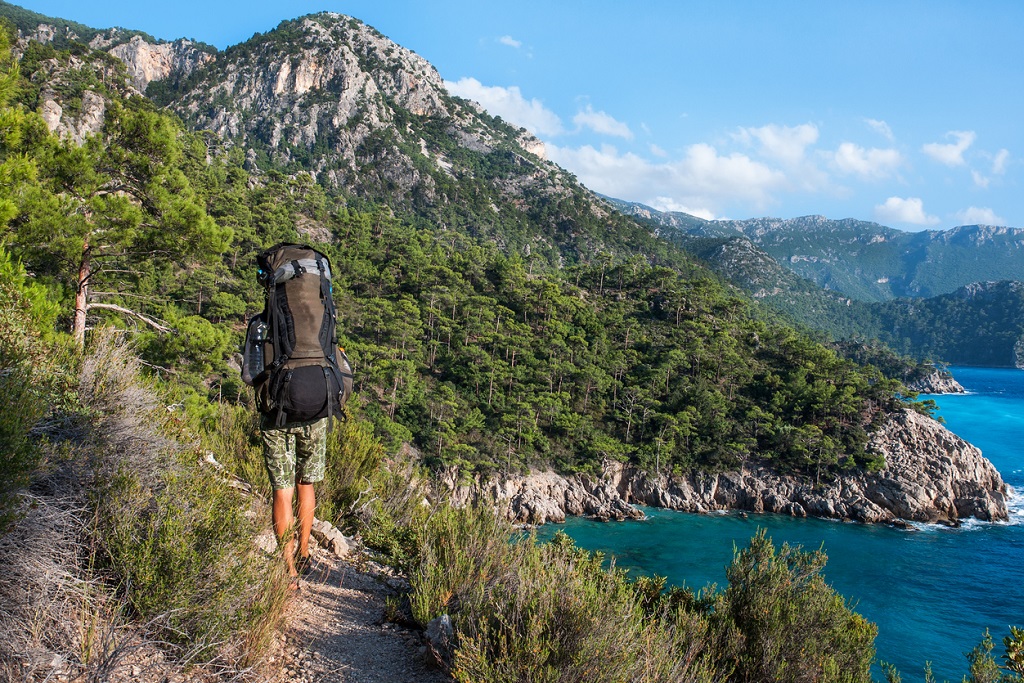
Back when it started in the 1980s, green tourism meant small-scale tourism that comprised visits to natural areas while minimising environmental impact. However, over time it adopted a broader meaning—tourism activity that is environment-friendly in nature. Although green tourism sounds eco-friendly, it is quite the opposite today. Over the years, the term has earned a bad reputation as many hotels and tours have been using it as a marketing tactic, while not actually doing anything to reduce the damage they have been causing the environment, a practice known as greenwashing. This term is a tag that hotels assign themselves to even though they haven’t adopted even the most basic sustainable practices like recycling and water conservation.
According to The International Ecotourism Society (TIES), ecotourism is “responsible travel to natural areas that conserves the environment, sustains the well-being of the local people, and involves interpretation and education.” Ecotourism is all about going out into the natural world as opposed to cities and is more about what you do in a place than where you stay.
Sustainable Tourism, according to the UN World Tourism Organisation (UNWTO), refers “to the environmental, economic and socio-cultural aspects of tourism development. A suitable balance must be established between these three dimensions to guarantee its long-term sustainability.” The concept behind sustainable tourism is to visit a certain place as a tourist and have a positive impact on its community, local economy, and the environment to guarantee sustainability. In simpler words, under sustainable tourism, the focus is on the environmental, financial, and socio-cultural aspects of the area that is being visited.
The main difference between ecotourism, green tourism, and sustainable tourism is that the latter has much wider scope. A key difference between sustainable tourism and ecotourism is that the former includes all kinds of travel from luxurious to even meagre or simple explorations, and covers everything from rainforests to cities.
Also read: A guide to zero waste travel and how to pack for it
What Is The Difference Between Them With Regard To Their Purpose?

Although green tourism has gained a bad rep over the decades, its primary purpose is to generate economic benefit, while minimising harmful effects on the environment. Ecotourism aims at connecting tourists with nature, building environmental and cultural awareness and respect, ensuring that both the tourist and the host have a positive experience, creating direct financial benefits for conservation, between locals and private industries, and minimise physical, social, behavioral, and psychological impacts. UNWTO lists the purpose of sustainable tourism as making optimal use of environmental resources that are key to the development of tourism, maintaining essential ecological processes, helping conserve the natural heritage and biodiversity, respecting host communities, and ensuring viable and long-term economic operations that will provide economic benefits to all the stakeholders (benefits that are distributed fairly).
Some Examples of green tourism, sustainable tourism, and ecotourism :
- Some green tourism initiatives are the use of environment-friendly cleaning supplies, room keys made out of sustainable materials, or a water-conservation programme.
- Those who participate in ecotourism usually ensure that the place they are travelling to is protected from external danger, and use locals as guides in order to get an authentic experience of the place. This way, they try to make a positive impact on the place and the locals. Primary attractions for the ecotourism industry are the flora, fauna, and cultural heritage of the specific area.
- Some practices that are typical of sustainable tourism are supporting community conservation projects, recycling and treating wastes, sourcing locally-produced products for restaurants and gift shops, conserving water and energy, hiring staff from the local community, training them, and paying them fair wages.
Businesses that practise sustainable tourism take concrete measures to enhance the well-being of the local communities. They also make positive contributions to the conservation of the area’s natural and cultural heritage. This way, they not only support and develop the area but also cut down their own costs. An additional benefit is that they attract more responsible travellers.
Also read: Can you travel eco-friendly even on a budget?
How To Tell If An Establishment Supports Green Tourism, Ecotourism, Or Sustainable Tourism?

Tourists must take the extra effort to dig deeper and do their research before booking a hotel or purchasing a tour package. Many tourism businesses that want to avoid looking that they indulge in greenwashing will specify what methods they adopt to reduce their environmental impact. They will also use terms like ecotourism and sustainable tourism on their websites while also explaining the various green initiatives they have undertaken. These make it easier for tourists to view the concrete steps these establishments have taken to protect and conserve natural resources, protect wildlife, and contribute towards the welfare of the locals. Additionally, organisations like the Global Sustainable Tourism Council (GSTC) and The Rainforest Alliance grant certifications to establishments that are making a noticeable effort in practicing sustainable tourism or ecotourism.
Leave A Happy Footprint, Not A Carbon Footprint
Living, let alone traveling or touring, responsibly is not an easy task. However, if we want our future generations to be able to enjoy the sights and sounds that we enjoy today, it is our responsibility to support a sustainable and environmentally friendly tourism business. By practicing ecotourism or sustainable tourism, we not only mitigate our impact on the environment, we also help develop local businesses and communities that have, so far, been side-lined by conventional forms of tourism.
Also read: 13 eco-friendly things to take when you travel
LEAVE A REPLY Cancel reply
Save my name, email, and website in this browser for the next time I comment.
Unveiling the wonders of culture and tradition!

Are you ready to embark on a journey filled with adventure, culture, tradition, and exciting attractions? Let your explorer's spirit soar and make unforgettable memories as you explore the beauty of our diverse world.
- North America
- What Is The Difference Between...
The Differences Between Green Tourism, Ecotourism and Sustainable Tourism

US Books Editor
Those looking to be more conscientious travelers have a lot of options, but what do all these sustainable-travel terms actually mean? Use Culture Trip’s guide to find the earth-friendly travel preference that’s right for you. Did you know – Culture Trip now does bookable, small-group trips? Pick from authentic, immersive Epic Trips , compact and action-packed Mini Trips and sparkling, expansive Sailing Trips .
As responsible travel becomes more and more popular, buzzy travel terms continue to pop up. But what does it all mean? And how can you know if the tour you booked or the hotel you’re staying at is actually environmentally friendly or sustainable? Information continues to come out about the damage tourism can do to local environments and economies, including how travel accounts for 8 percent of greenhouse gases and how the foot traffic through national parks damages the very wonders people go there to enjoy . So do your research and use this guide to do your best to leave no trace while exploring.

Beware of ‘green tourism’
The term “green tourism” may sound friendly, but it’s often used to try to brand a hotel as environmentally friendly without practicing many sustainability efforts, such as basic recycling or water-conservation programs. The term got a bad rap over the years because of rampant greenwashing, in which a hotel calls itself green solely because it places out the “please hang up your towels if you would like to reuse them” cards, which does help but is only the tip of the iceberg.
Most hotels and tours that actually practice some form of sustainability will list their practices on their website, so you can dig in and see exactly what they are taking part in. Initiatives can include having recycling programs in place, using environmentally friendly cleaning supplies, making room keys out of sustainable materials instead of plastic or having a water-conservation program. Look for “ ecotourism ” and “sustainable tourism”; both terms refer to practices that try to minimize the negative impact of visitors while preserving local biodiversity and respecting local culture. There is no legal regulation of these terms, but they are newer than “green tourism” and have more specific definitions, and most tourism organizations that use them will explain their specific methods of reducing environmental impact. “Ecotourism” and “sustainable tourism” are different, so it can be helpful to talk about some of their differences.

Ecotourism, as defined by the International Ecotourism Society (TIES), is “responsible travel to natural areas that conserves the environment, sustains the well-being of the local people, and involves interpretation and education.” This kind of travel is geared towards conservation and preservation of wildlife. This term will rarely be used to describe urban tourism because it is about getting out into the natural world.
There is less of an emphasis on where you stay and more on what you do while you’re there. Those participating in ecotourism make sure any sites visited are protected from outside or unnatural influence and use local guides to shape a travel experience. If you are looking to experience an African safari in Uganda or walk through a rainforest in Brazil , you might want to keep an eye out for ecotourism companies.
Those interested in ecotourism experiences in Thailand might check out the Gibbon Rehabilitation Project or a homestay on Ko Yo Island. Ecotourism experiences in New Zealand might include a hike in Mt. Cook National Park or a visit to the glowworm caves in Waitomo Caves.

Sustainable tourism
The UN World Tourism Organization (UNWTO) defines sustainable tourism as “refer[ring] to the environmental, economic and socio-cultural aspects of tourism development. A suitable balance must be established between these three dimensions to guarantee its long term sustainability.” With a slightly wider focus than ecotourism, sustainable tourism includes making sure that communities are being paid fairly and would include urban destinations such as Mexico City , Singapore or Thessaloniki , where one might not automatically think of the need for environmental sustainability.
The Rainforest Alliance offers certifications to show that hotels and tours are sustainable and doing their part to protect the natural wildlife of Latin America and the Caribbean, popular destinations for tourists who want to experience the magic of the rainforest. To assist merchants seeking to earn this certification, the Global Sustainable Tourism Council offers training modules and technical assistance to address the specific needs of each company; it also audits companies to make sure they are up to standard.
Do your own research as well and look up what sustainable initiatives tours and hotels are taking part in before you book. Most hotels and tour companies do not participate in any sustainability efforts, although this is changing as consumer demand shifts. If a company mentions anything at all on its site, it is a good start.

Take action
Beyond booking your stay at a sustainable hotel, there’s a lot more you can do to be a traveler who’s kind to the planet. Here are five tips:
1. If you’re flying, purchase carbon offsets . Flying is a major source of pollution, but passengers have the choice to pay a few dollars extra to offset their carbon emissions. Carbon offsets are sometimes offered by the airline when you purchase your ticket – for example, by Delta Airlines, Air New Zealand or Jetstar – as a fee you can add to your purchase; but if your airline doesn’t give you the option, you can also reach out to a number of organizations like ClimateCare in the UK or TerraPass in the US.
2. Take ground transportation to get to your location. Spending a bit more time traveling by bus or car can greatly reduce your carbon footprint, as can taking public transportation once you’ve arrived.
3. Carry reusable bags and your own silverware (just like you might at home) in case you choose to buy some souvenirs or purchase food.
4. Eat local food. It can be expensive and wasteful to produce food in climates where it is not usually grown. Plus, this gives you the perfect excuse to indulge in some food tourism, delighting in the local cuisine.
5. Avoid littering. This especially includes food, as it can damage local ecosystems if local wildlife starts feeding off “people food” instead of its usual diet.
Since you are here, we would like to share our vision for the future of travel - and the direction Culture Trip is moving in.
Culture Trip launched in 2011 with a simple yet passionate mission: to inspire people to go beyond their boundaries and experience what makes a place, its people and its culture special and meaningful — and this is still in our DNA today. We are proud that, for more than a decade, millions like you have trusted our award-winning recommendations by people who deeply understand what makes certain places and communities so special.
Increasingly we believe the world needs more meaningful, real-life connections between curious travellers keen to explore the world in a more responsible way. That is why we have intensively curated a collection of premium small-group trips as an invitation to meet and connect with new, like-minded people for once-in-a-lifetime experiences in three categories: Culture Trips, Rail Trips and Private Trips. Our Trips are suitable for both solo travelers, couples and friends who want to explore the world together.
Culture Trips are deeply immersive 5 to 16 days itineraries, that combine authentic local experiences, exciting activities and 4-5* accommodation to look forward to at the end of each day. Our Rail Trips are our most planet-friendly itineraries that invite you to take the scenic route, relax whilst getting under the skin of a destination. Our Private Trips are fully tailored itineraries, curated by our Travel Experts specifically for you, your friends or your family.
We know that many of you worry about the environmental impact of travel and are looking for ways of expanding horizons in ways that do minimal harm - and may even bring benefits. We are committed to go as far as possible in curating our trips with care for the planet. That is why all of our trips are flightless in destination, fully carbon offset - and we have ambitious plans to be net zero in the very near future.

Guides & Tips
Travel with culture trip: who are our local insiders.

How to Make the Most of Your Holiday Time if You're in the US

How to Book a Private Tour with Culture Trip

Top Trips for Embracing Your Own Backyard

The Best Couples Retreats in the USA

See & Do
5 ski resort scenes you can't miss this year.

The Best Solo Travel Tours in the US

Travel in America: Top 5 Trip Ideas

The Benefits of Booking a Private Tour with Culture Trip

Everything You Need to Know About Booking a Private Culture Trip

Gift the Joy of Travel this Christmas with Culture Trip Gift Cards

Top TRIPS by Culture Trip for Ticking Off Your Bucket List
Culture trip spring sale, save up to $1,100 on our unique small-group trips limited spots..

- Post ID: 1000835837
- Sponsored? No
- View Payload

- GSTC Mission & Impacts
- GSTC History
- Market Access Program
- GSTC Board of Directors
- Assurance Panel
- Working Groups
- GSTC Sponsors
- GSTC Members
- Recruitment
- Contact GSTC
- GSTC For the Press
- Criteria Development, Feedback & Revisions
- Sustainable Tourism Glossary
- SDGs and GSTC Criteria
- GSTC Industry Criteria
- GSTC Destination Criteria
- GSTC MICE Criteria
- Criteria Translations
- GSTC-Recognized Standards for Hotels
- GSTC-Recognized Standards for Tour Operators
- GSTC-Recognized Standards for Destinations
- Recognition of Standards (for Standard Owners)
- GSTC-Committed
- Certification for Hotels
- Certification for Tour Operator
- Certification for Destination
- Accreditation for Certification Bodies
- Accredited Certification Bodies
- Stakeholder Consultations
- What is Certification? Accreditation? Recognition?
- Sustainable Tourism Training Program (STTP)
- Upcoming Courses
- Professional Certificate in Sustainable Tourism
- Professional Certificate in Sustainable Business Travel
- GSTC Trainers and Partners
- FAQs: GSTC Training Program
- Organization Membership Application
- Destination Membership Application
- Membership Policy
- Membership Categories & Fees
- Membership Payment Options
- Webinars for GSTC Members
- Members Log In
- Upcoming Webinars
- GSTC2024 Sweden, Apr 23-26
- GSTC2024 Singapore, Nov 13-16
- Past Conferences
- Destination Stewardship Report
GSTC2024 Global Conference
Royal djurgården, stockholm, sweden - april 23-26, gstc criteria, the global sustainability standards in travel and tourism, the difference between ecotourism and sustainable tourism, many confuse between the terms “ecotourism”, “sustainable tourism”, and “responsible travel”, so here’s a simple explanation on the differences..
Ecotourism is a niche segment of tourism in natural areas. Sustainable Tourism does not refer to a specific type of tourism, it is an aspiration for the impacts of all forms of tourism. All forms of tourism should be sustainable. The GSTC Criteria serve as the global standards for sustainability in travel and tourism. Responsible Travel is a term referring to the behavior and style of individual travelers.
What is Ecotourism? Ecotourism Definitions
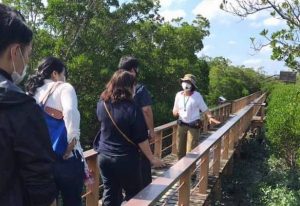
According to Fennell, “Ecotourism is a sustainable form of natural resource-based tourism that focuses primarily on experiencing and learning about nature, and which is ethically managed to be low-impact, non-consumptive, and locally-oriented (control, benefits, and scale). It typically occurs in natural areas, and should contribute to the conservation or preservation of such areas” (Fennell, 1999: 43. Ecotourism: An Introduction ).
The Mohonk Agreement (2000), a proposal for international certification of Sustainable Tourism and Ecotourism, saw ecotourism as “sustainable tourism with a natural area focus, which benefits the environment and communities visited, and fosters environmental and cultural understanding, appreciation, and awareness.”
According to the UNWTO’s definition , “ecotourism refers to forms of tourism which have the following characteristics: (1) All nature-based forms of tourism in which the main motivation of the tourists is the observation and appreciation of nature as well as the traditional cultures prevailing in natural areas; (2) It contains educational and interpretation features; (3) It is generally, but not exclusively organised by specialised tour operators for small groups. Service provider partners at the destinations tend to be small, locally owned businesses; (4) It minimises negative impacts upon the natural and socio-cultural environment; (5) It supports the maintenance of natural areas which are used as ecotourism attractions by: Generating economic benefits for host communities, organisations and authorities managing natural areas with conservation purposes; Providing alternative employment and income opportunities for local communities; Increasing awareness towards the conservation of natural and cultural assets, both among locals and tourists.” These characteristics are sometimes referred to as principles of ecotourism.
The ecotourism definition by the Global Ecotourism Network (GEN): “Ecotourism is responsible travel to natural areas that conserves the environment, sustains the well-being of the local people, and creates knowledge and understanding through interpretation and education of all involved (visitors, staff and the visited)” ( Global Ecotourism Network, 2016 ).
There are similar definitions along these lines by other organizations (such as Ecotourism Australia ).
What is Sustainable Tourism? Sustainable Tourism Definition

Sustainable tourism is “Tourism that takes full account of its current and future economic, social and environmental impacts, addressing the needs of visitors, the industry, the environment and host communities.” “Sustainability principles refer to the environmental, economic, and socio-cultural aspects of tourism development, and a suitable balance must be established between these three dimensions to guarantee its long-term sustainability” (UNEP & UNWTO, 2005: 11-12. Making Tourism More Sustainable – A Guide for Policy Makers ).
The GSTC Criteria serve as the global baseline standards for sustainability in travel and tourism. The Criteria are used for education and awareness-raising, policy-making for businesses and government agencies and other organization types, measurement and evaluation, and as a basis for certification.
They are the result of a worldwide effort to develop a common language about sustainability in tourism. They are arranged in four pillars: (1) Sustainable management; (2) Socioeconomic impacts; (3) Cultural impacts; (4) Environmental impacts (including consumption of resources, reducing pollution, and conserving biodiversity and landscapes).
The GSTC Criteria have been built on decades of prior work and experience around the world, and they take into account the numerous guidelines and standards for sustainable tourism from every continent. During the process of development, they were widely consulted throughout the globe, in both developed and developing countries, in several languages. They reflect our goal in attaining a global consensus on sustainable tourism. The process of developing the Criteria was designed to adhere to the standards-setting code of the ISEAL Alliance, the international body providing guidance for the development and management of sustainability standards for all sectors. That code is informed by relevant ISO standards.
The Criteria are the minimum, not the maximum, which businesses, governments, and destinations should achieve to approach social, environmental, cultural, and economic sustainability. Since tourism destinations each have their own culture, environment, customs, and laws, the Criteria are designed to be adapted to local conditions and supplemented by additional criteria for the specific location and activity.
Are you a tourism professional? GSTC offers regular courses for professionals about sustainable tourism and the GSTC Criteria , sustainable business travel , and sustainable hotels .
What is Responsible Travel? Responsible Tourism Definition
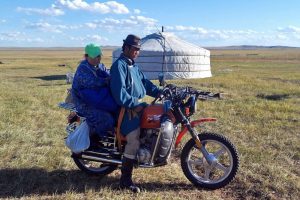
Tourists and travelers can also influence businesses to follow sustainability practices and offer more sustainable products and services.
As a traveler, you can learn more about how to be a responsible traveler by visiting this page: GSTC for Travelers .
Want to Learn More?
The GSTC website is full of resources. Make sure you visit the relevant pages for you. Also, videos are available on the GSTC YouTube channel .
GSTC offers regular courses about sustainable tourism and the GSTC Criteria , as well as sustainable business travel , and sustainable hotels .
Share This Story, Choose Your Platform!
Related posts.

Preferred by Nature Standard gains GSTC-Recognized Standard Status

Bioscore Standard gains GSTC-Recognized Standard Status

Tokyo Convention & Visitors Bureau Joins GSTC
Destinations
Popular destinations, discover lapland.

From husky rides through pristine frozen forests to excursions into the Polar night to view the Northern Lights, discover unforgettable Lapland holidays.
Take Me There
Discover Europe

Whether it’s the bustling streets of Naples or the lush vineyards of Tuscany, prepare to be enchanted by Italy’s culture, cuisine, and magical scenery.
Central & Latin America
Discover costa rica.

Discover volcanos, jungle, beaches, world class wildlife and the concept of Pura Vida on adventures in the tropical land of Costa Rica.
Discover Kenya
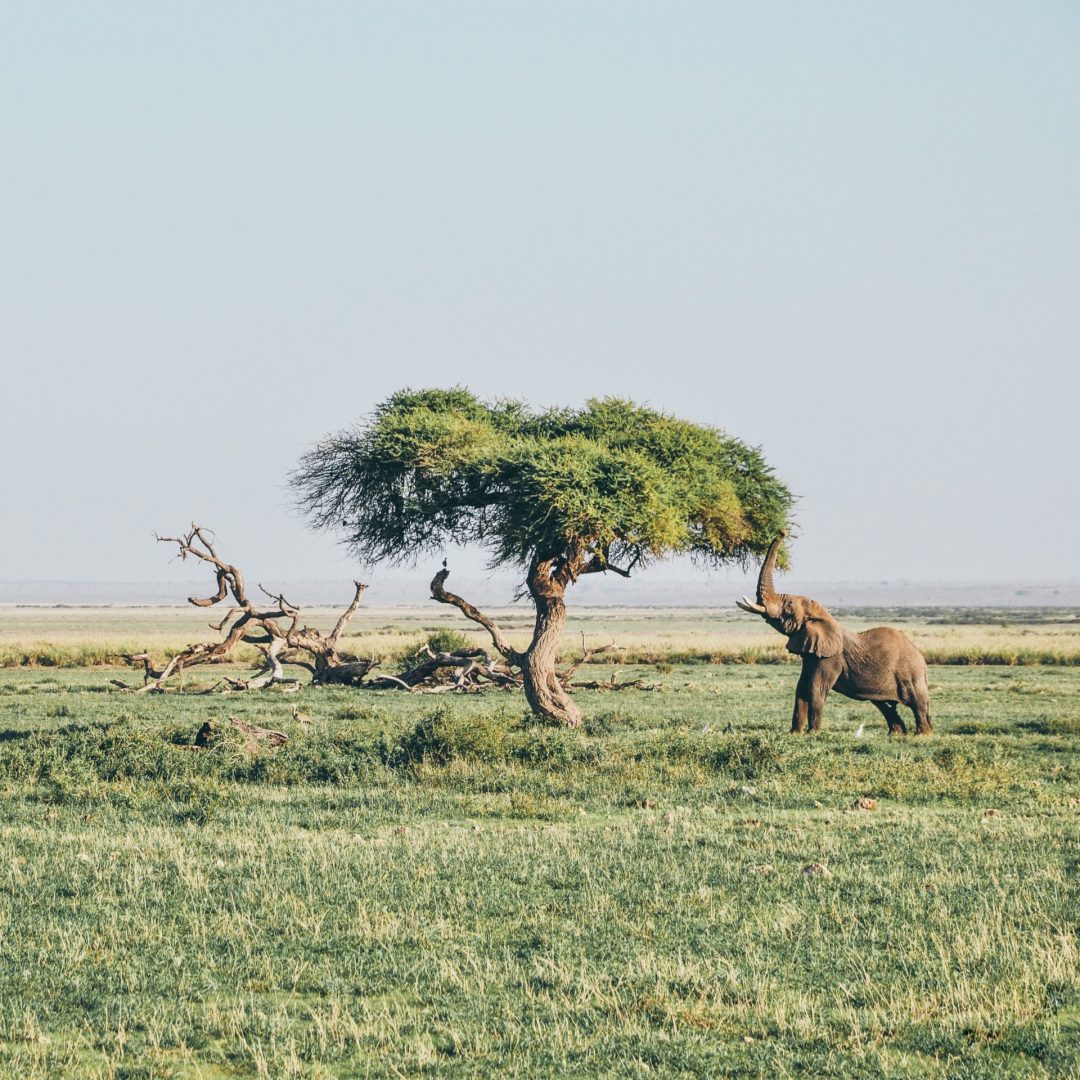
As well as one of the top destinations on earth for safari, Kenya also hosts incredible mountain ranges and beautiful Indian Ocean beaches.
Discover Cambodia

Ancient temple complexes, magical white-sand beaches and jungles dotted with cool waterfalls, Cambodia is not one to miss.
Experiences
Experience collections.
Drive Iceland's Ring Road
Island Hopping in Greece
4 Night Family Lapland Adventure
Snowshoeing Adventure in the Pyrenees
Discover The Best Of Costa Rica
Thailand Off The Beaten Track Adventure
Discover our experiences
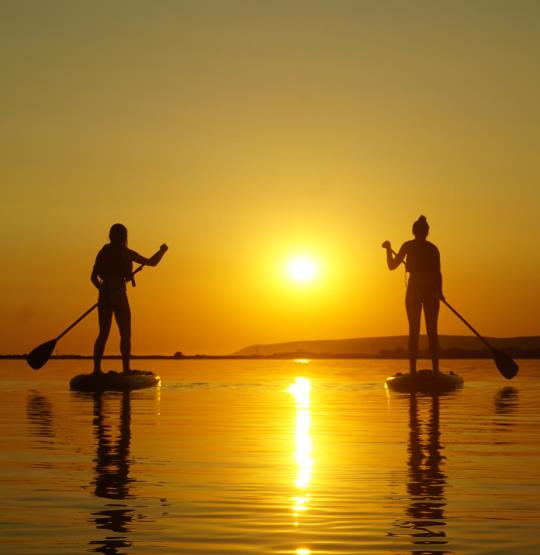
From winter sun escapes in the Maldives to bucket list adventures in Peru, explore our experience collections of local authentic experiences.
Take me there
Off the Beaten Track Holidays
Costa Rica East to West
Highlights Of Southern Peru
Experience The Real Maldives
The Best Of Uganda: Wildlife Safari
The Ultimate Cultural Morocco Tour
Bangkok To Beaches: Thailand Off The Beaten Track
Hanoi To Ho Chi Minh: Ultimate Vietnam In 14 Days
Sri Lanka: Immersive Adventure Country And Coast
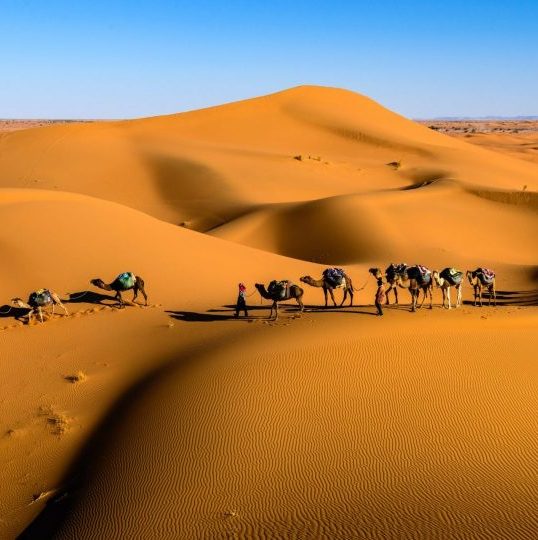
Not In The Guidebooks adventures take you to the places other tourists miss – explore our offbeat, authentic and local itineraries here.
Foodie Holidays
Cooking in Italy
Cooking in France
Cooking in Spain
Food Adventures in England
Food Adventures in France
Food Adventures in Italy
Wine in France
Wine in Italy
Wine in Spain

We find that the fastest route to the heart of a culture is through its cuisine. Whether that’s cooking in Italy or exploring markets in Vietnam.
Creative Holidays
Painting in France
Painting in Spain
Painting in Italy
Arts and Crafts in France
Arts and Crafts in Italy
A Creative Week in Spain
Photography in France
Photography in Italy
Photography in Spain

For a holiday that creates more than memories, explore our range of painting, photography, and art & crafts holidays.
Active Holidays
Walking in Ireland
Walking in Spain
Walking in Portugal
Horse Riding in Italy
Horse Riding in Morocco
Horse Riding in Spain
Surfing in Costa Rica
Surfing in England
Surfing in Portugal
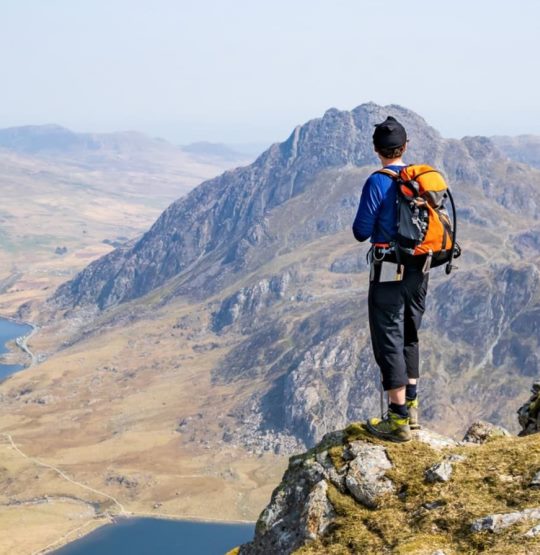
The best way to explore a landscape is to immerse yourself in it on an adventure, whether hiking the Spanish Pyrenees or kayaking in Montenegro.
Singles Activity Holidays
Cookery Holidays in France
Cookery Holidays in Italy
Cookery Holidays in Spain
Wellness Holidays in Costa Rica
Wellness Holidays in Italy
Wellness Holidays in Portugal
Creative Holidays in England
Creative Holidays in France
Creative Holidays in Spain
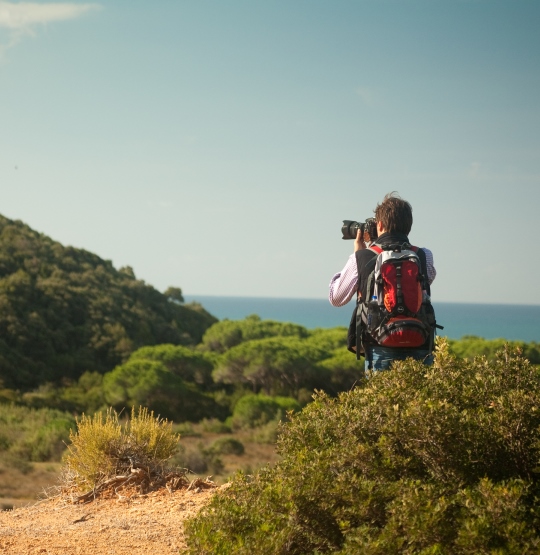
Explore the world on your terms by meeting like-minded travellers who share your passion for discovering new places and experiencing new cultures.
Wellness Holidays
Wellness Holidays in Wales
Wellness Holidays in Spain
Yoga Holidays in Costa Rica
Yoga Holidays in Italy
Yoga Holidays in Portugal

Take the opportunity to refresh, recharge and revatilise on a wellness holiday that also takes you to experience a new culture.
Wildlife Holidays
Wildlife Holidays in Costa Rica
Wildlife Holidays in Cambodia
Wildlife Holidays in Uganda
Wildlife Holidays in Kenya
Wildlife Holidays in Namibia
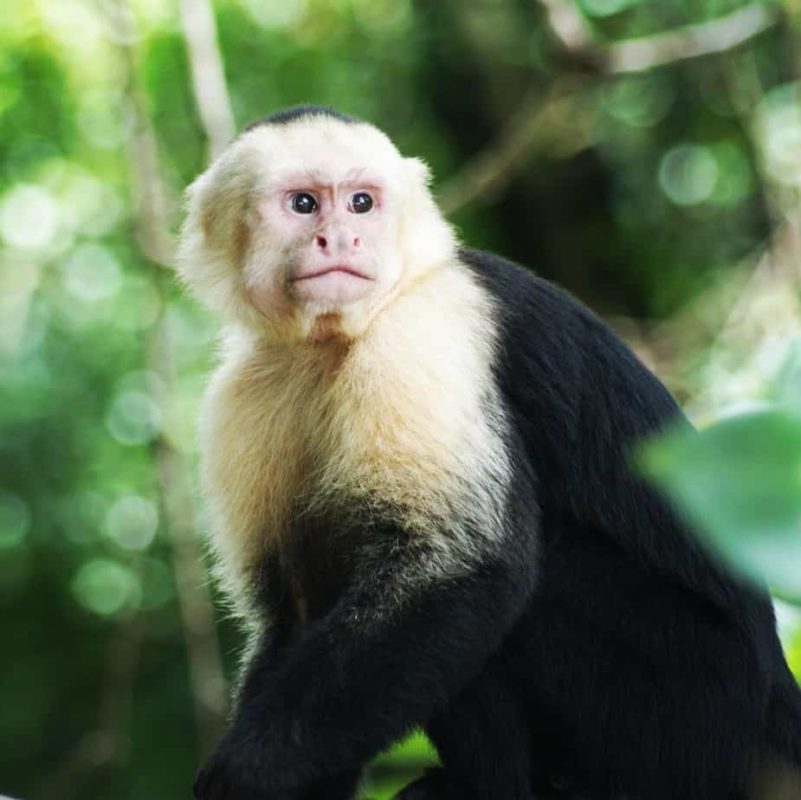
From the Masai Mara to Corcovado National Park, with NITGB you can witness some of the most spectacular wildlife on earth in a responsible manner.
Unique Accommodation
Glamping Accommodation in England
Glamping Accommodation in Wales
Hot Tub Accommodation in England
Hot Tub Accommodation in Wales
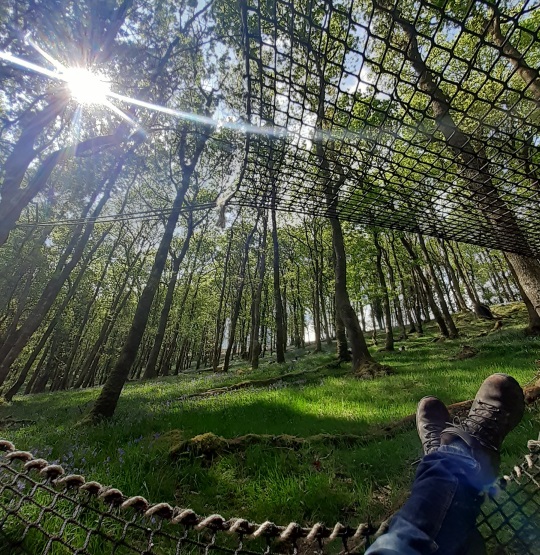
Discover unique accommodation that turns an ordinary weekend escape into a memorable, offbeat experience, whether in the UK or further afield.
- Call +44-203-048-3044 Agent login
Ecotourism vs Sustainable Tourism – what is the difference?
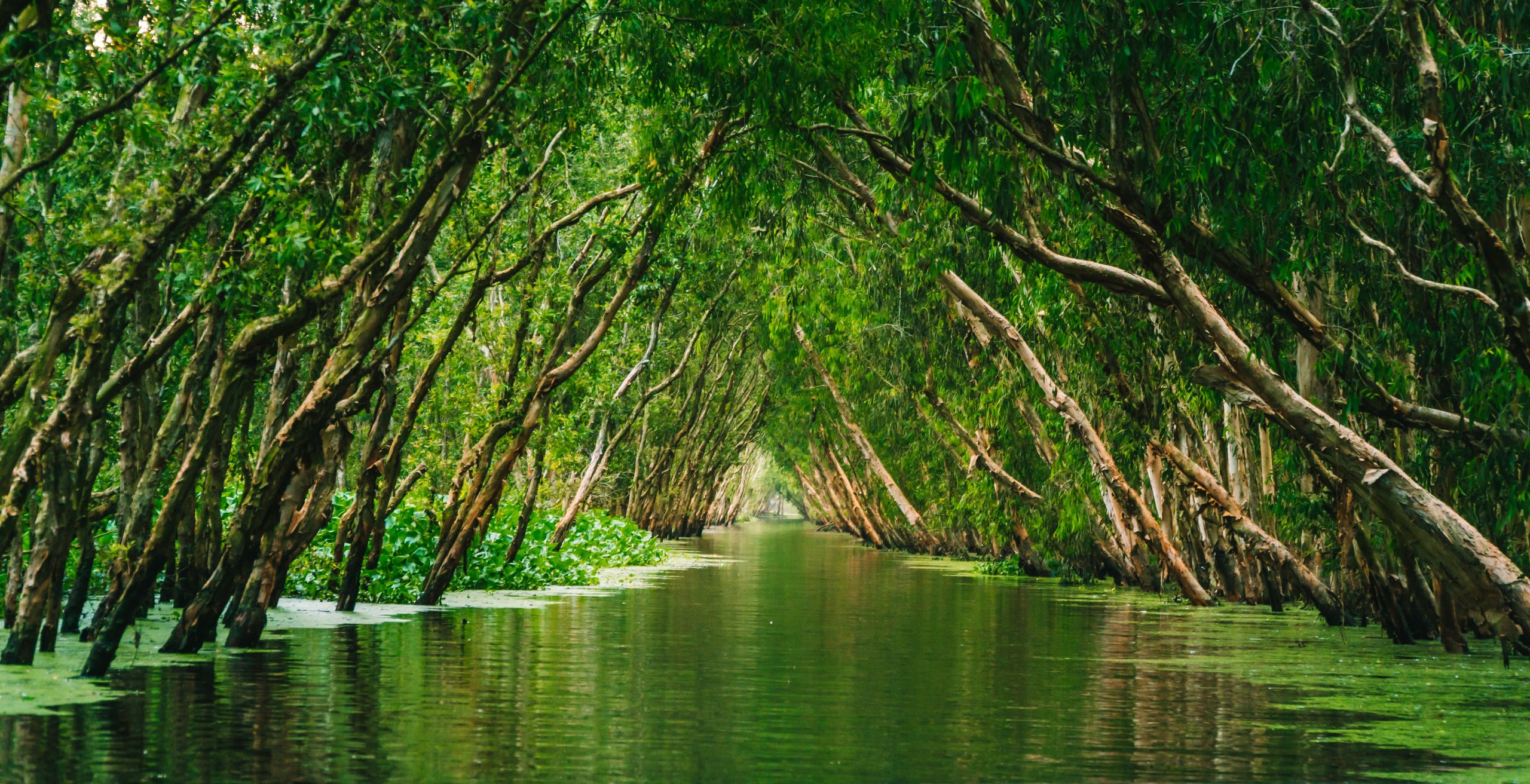
Sustainable tourism and ecotourism are two of the fastest growing trends in the travel industry, but often we find the two terms lumped in together to mean exactly the same thing. So what exactly is the difference between ecotourism and sustainable tourism ?
In this article, we’ll outline the key differences between the two concepts, and provide examples of how they are being used on the front line of the travel industry’s fight against climate change.
What is Ecotourism?
The key thing to remember about ecotourism is that as a concept, it relates to a specific type of tourism that takes visitors to see areas of natural beauty, whilst having an emphasis on the preservation of the wildlife and nature in the area being visited.
Examples might include safaris, bird-watching, hiking in national parks or protected ecological areas, or any type of holiday that gets tourists closer to nature in a way that leaves no mark on the environment, and has no negative impact on the wildlife that lives within it.
In general, these holidays and tours are run by small-scale operators that work to minimise their physical impact on the environment, whether that’s by minimising plastic usage , or implementing tour policies that encourage visitors to stick to marked footpaths and leave no trace of their visit.

There is also a large educational aspect to ecotourism. For many of us, the plight of, say, the cloud forest in Costa Rica is an issue that is so far removed from our normal lives that it’s easy to ignore.
By immersing tourists in these environments, and by getting them up close to the tropical birds, sloths, and other animals that rely on this beautiful but delicately balanced ecosystem, operators can press home the importance of ecotourism and show visitors how they can travel more sustainably in the future .
Alongside all this, money made through ecotourism often goes back into projects that are aimed at protecting and rewilding areas of natural beauty. Whether that’s a tree planting scheme, the protection of endangered species or green energy programmes, the idea is that ecotourism aims to pump money back into protecting the environment that it is promoting.
Ecotourism Definition
The International Ecotourism Society describes defines as ecotourism as
“responsible travel to natural areas that conserves the environment, sustains the well-being of the local people, and involves interpretation and education”
Examples of Ecotourism
From wildlife holidays in Costa Rica to elephant sanctuaries in Cambodia, there are so many examples of countries that strive towards the ecotourism ideal. Here are a few examples of places where ecotourism makes up most of the tourism in a location, some of which we promote experiences in, some of which we hope to promote experiences in at some point in the near future…
Costa Rica: Costa Rica is widely recognized as a leader in ecotourism. The country is home to numerous national parks and protected areas, and offers visitors opportunities to explore rainforests, beaches, and wildlife. Eco-lodges and sustainable tourism practices are common in Costa Rica.

Galapagos Islands, Ecuador: The Galapagos Islands are a popular ecotourism destination due to their unique wildlife and plant species. The islands are home to numerous endangered species, including the Galapagos tortoise, and are heavily protected by the Ecuadorian government.
Bhutan: Bhutan is a small Himalayan country that is known for its commitment to sustainable development and cultural preservation. Ecotourism is an important part of Bhutan’s economy, and visitors can explore the country’s many natural and cultural attractions.
Cape Town, South Africa: Cape Town is a city that is committed to sustainable tourism practices. Visitors can take part in eco-friendly tours and activities, such as hiking, whale watching, and conservation programs.
Cambodia: A country that boasts stunning rainforest areas, pristine coastline and magical wildlife, it is now championing ecotourism as the best way to travel within its borders. From working with elephant sanctuaries to discovering marine life in the Gulf of Thailand, ecotourism in Cambodia is alive and well.
Popular Responsible Experiences

6 Days in Temple Town – Angkor, Elephants and Tonle Sap
Sed ut perspiciatis unde omnis iste natus error sit voluptatem...

Discover Costa Rica South and Central Pacific
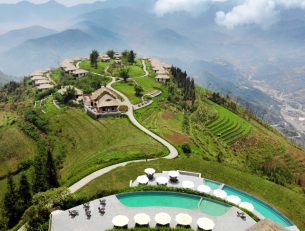
Local Trail Walking and Eco Retreat – North Vietnam

Luxury Icelandic Eco Retreat
What is sustainable tourism.
Where ecotourism focuses on travel that specifically takes you to wild, natural places, sustainable tourism is a more overarching concept that doesn’t only aim to promote travelling in a certain way, but aims to change the entire perception of an industry and its customers .
The concept of sustainable travel is to make all aspects of travel more sustainable, balancing people, planet and profit to ensure every party benefits from travel. From establishing more sustainable supply chains to ensuring the money made from tourism stays within the local community, sustainable tourism goes beyond simply the protection of wildlife and ecosystems.
The benefits of sustainable tourism are cyclical in nature. Tourism, as an industry, benefits from the fact that the world has so many unspoilt landscapes and varied cultures and communities, as these draw curious travellers who spend money as tourists.

By ensuring that the local community benefits from tourism through restricting tourism leakage , retaining the cultural identity of a location and protecting the environment, the industry can improve the standard of living for the locals.
In maintaining the quality of a destination, more tourists are drawn to a region and will continue to spend money there, boosting the local economy further still. The absolute key is in ensuring any influx in tourism is managed carefully, to maintain a balance between people, planet and profit.
Sustainable Tourism Definition
The World Tourism Organization defines sustainable tourism as
“Tourism that takes full account of its current and future economic, social and environmental impacts, addressing the needs of visitors, the industry, the environment and host communities”
Sustainable Tourism Examples
With all this in mind, it is important to look at how sustainable tourism an be broken down into different subsections, including ecotourism. Here are some examples of sustainable tourism, all of which fall under the overall umbrella term.
Ecotourism: As we have already discussed, this type of tourism involves visiting natural areas while minimizing the environmental impact and supporting conservation efforts. Examples include bird watching, hiking, and wildlife safaris.
Cultural tourism: This type of tourism focuses on learning about the history and culture of a place while promoting local traditions and customs. Examples include visiting museums, historical sites, and attending cultural events.
Community-based tourism: This type of tourism involves staying in local communities and supporting local businesses and initiatives. It helps to empower local communities, preserve their culture, and generate income.
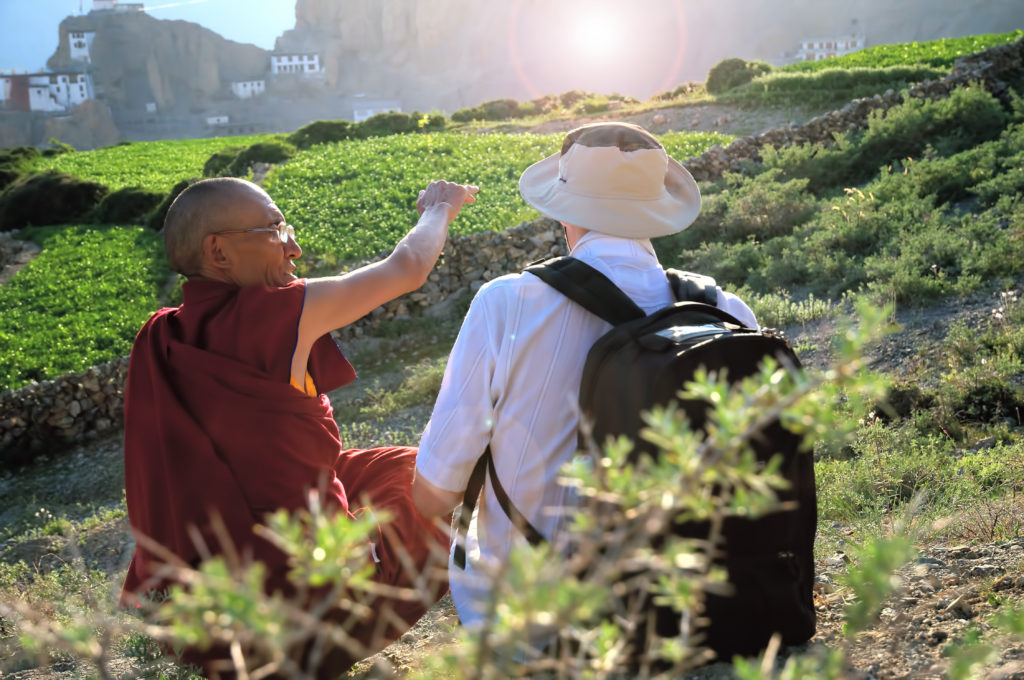
Sustainable accommodation: Staying in eco-friendly hotels, lodges, or guesthouses that minimize their environmental impact through practices like energy and water conservation, waste reduction, and use of renewable resources.
Responsible wildlife tourism: This involves visiting wildlife sanctuaries or reserves that are committed to animal welfare and conservation efforts, and avoiding activities that exploit or harm animals.
Sustainable transportation: Using low-impact transportation methods such as walking, cycling, or public transport, rather than driving or flying.
Volunteer tourism: This involves volunteering in sustainable development projects or conservation efforts that help to improve the local community and environment. However, this type of tourism doesn’t come without its controversies. In many cases, ‘voluntourism’ can actually be simply providing cheap labour that takes employment away from the local population. With these types of holidays, make the time to do some proper research to ensure you are genuinely helping a community.
Here at Not In The Guidebooks , we strive to ensure that all our offerings fall under the bracket of sustainable travel. To learn more about how we are aiming to make the world a better place through sustainable travel, read our sustainability commitments .
You might also be interested in...

Can Flying Ever be Sustainable?
As a travel company, we can’t ignore that flying is an integral part of what we promote and sell, and we can’t ignore that flying produces a huge amount of carbon. As a company that promotes sustainability however, we need to ask ourselves: can flying ever be sustainable? Can we,... Read More »
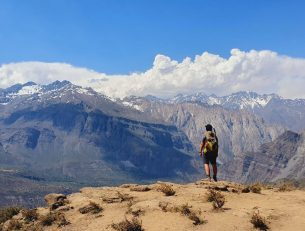
A Travellers’ Guide to Treading Lightly
Now more than ever, we’re made explicitly aware of our roles in the fight against climate change, whether that’s buying an electric car, ensuring we recycle our rubbish properly, going vegan, or simply turning the light off when we leave a room. But we find many travellers aren’t fully aware... Read More »

Top Wildlife Holidays around the World
If there’s one thing we’ve all missed out on in 2020 and the first half of 2021, it’s getting back in touch with nature and seeking out wildlife in the wilder corners of the planet. And what with it being World Wildlife Day today, the team here at Not In... Read More »
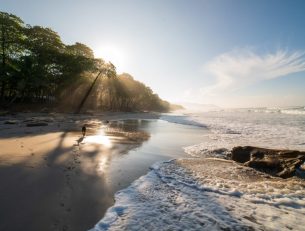
What is Ecotourism and Why is it So Important?
Ecotourism is finding itself more and more centre stage in the tourism industry, as companies and travellers alike start to realise its importance. It’s a concept that is absolutely essential in today’s world where tourism, if done poorly and irresponsibly, can have devastating effects on local and global environments. Here... Read More »

Join our community
Get off the beaten track and support local communities that you visit.
Sign up for inspiriation for your itinerary, new experiences and special offers.
Sustainable Travel vs Ecotourism: Differences and Tips for Responsible Tourism
More and more travelers are discovering the importance of sustainable tourism, but they often confuse it with ecotourism. Although they have many things in common, these two forms of travel have fundamental differences that are essential to understand in order to make informed and responsible choices.
What is sustainable tourism?
Sustainable tourism represents a responsible way of exploring the world, seeking to balance environmental, social and economic needs to ensure a positive impact on both the destinations visited and local communities. According to the World Tourism Organization, the sustainable tourism is that form of tourism that “meets the needs of travelers and host regions while protecting and enhancing opportunities for the future.”
To achieve this balance, sustainable tourism is structured around three basic pillars:
- Environment : This aspect focuses on reducing the environmental impact of travel. It includes using environmentally friendly means of transportation, conscientious waste management with an emphasis on reducing plastic, respecting and protecting local fauna and flora, and choosing accommodations that adopt sustainable practices.
- Social : Sustainable tourism aims to generate a positive impact on local communities by supporting the local economy, interacting authentically with local people, and valuing and respecting local cultural traditions and heritage.
- Economic : This pillar emphasizes the importance of actively contributing to the local economy. It means preferring services and products offered by local businesses, such as restaurants, stores and tour guides, rather than relying exclusively on international chains.

What is ecotourism?
Ecotourism is a form of travel that focuses on discovering the natural wonders and protected areas of our planet. Often associated with outdoor and green tourism, ecotourism differs from sustainable tourism in its specific focus on natural areas away from urban centers. The main goal of ecotourism is the conservation and protection of the environment visited.
Key differences between sustainable tourism and ecotourism
While sustainable tourism represents a holistic and flexible approach that can be adapted to different forms of tourism and contexts, ecotourism has a more focused focus. It focuses exclusively on natural areas and the promotion of a “green” tourism that values environmental conservation. Sustainable tourism takes into consideration the long-term impact of tourism activities on the local area. It strives to meet the needs of visitors, the tourism industry, the environment and, most importantly, local communities, while trying to balance the needs of all stakeholders.
The importance of using words correctly
It is crucial to be careful about the language used: talking about “environmentally sustainable tourism” may be limiting because it does not refer to local communities or the economic well-being generated by tourism. Sustainable tourism, on the contrary, embraces all these spheres holistically.

Practical tips for sustainable travel
If you would like practical advice on how to plan a sustainable trip, please read our blog article containing 10 practical steps to take at your destination.
We always prefer to talk about sustainable tourism because it represents a comprehensive approach that does not exclude any of its components. All of our trips are designed to minimize environmental impact and to leave a positive footprint in the destinations visited. It is essential to choose reliable partners to avoid greenwashing and ensure truly sustainable tourism.
Whatever your travel preference, you are guaranteed a responsible travel experience at our site.
Get inspired and discover our sustainable travel ideas!
Get inspired..., estimated co2 emissions.

Green City Trips
Inspiration for savvy travellers and urban explorers
What is the Difference Between Sustainable Tourism and Ecotourism?
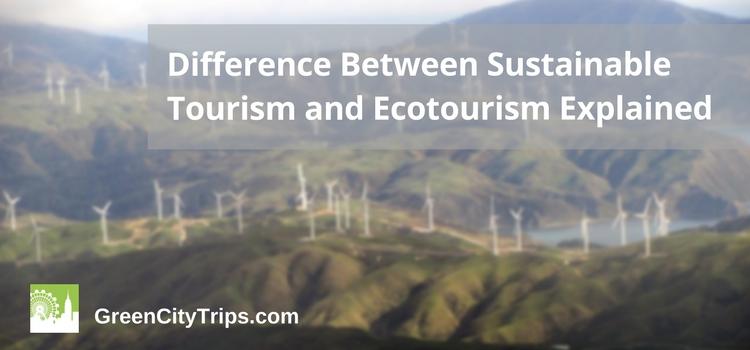
What is the difference between sustainable tourism and ecotourism? When you start planning your next eco-friendly holiday, chances are you might get overwhelmed with all the information now available for the modern, eco-smart, discerning city traveler. In particular, you might wonder what terms such as sustainable tourism and ecotourism – actually mean and how they differ from each other. Here a short overview.
Sustainable tourism
Sustainable tourism is a term which is used for many issues linked to economic viability, sociocultural sensitivity and environmental conservation of tourist destinations and businesses. The overall objective of initiatives aimed at making tourism more sustainable is to reduce the negative impacts of travel activities.
In our view, sustainable tourism is a term best suited to describe business strategies and management plans for businesses and destinations. Think of tourism sustainability as synonymous with authentic, quality travel experiences and healthy (work) environments.
As environmentally conscious, smart traveler, you can contribute to a more sustainable tourism by choosing hotels and activities that actively minimize the negative impact of their operations, reducing their environmental footprint. Or you can travel less and less far, trying to avoid flights where possible. At the destination you can skip imported souvenirs and instead buy from local craftsmen and sellers.
Sometimes hotels or destinations advertise their “sustainable tourism” credentials. Usually they refer to certification schemes they are involved in. Be careful with such messages, they are often marketing hype.
Being “sustainability certified” means that a hotel or destination has a plan, a strategy in place. While eco-labels and certifications guarantee minimum standards, they don’t necessarily mean that a business or destination has actually achieved sustainability (which is very difficult).
How does sustainable tourism differ from ecotourism ? Simply, ecotourism refers to tourism activities which are focused on wildlife and wilderness, rather than events or business trips, for instance.
Ecotourism businesses and destinations deal with often very knowledgeable, demanding travelers, and are located in delicate environments, which means that the pressure to follow best practice in sustainability is high.
Most ecotourism businesses are dedicated to wildlife conservation and many of them actively support local communities. A good example is Echidna Walkabout Tours in Melbourne, Australia.
Ironically, ecotourism as travel activity can be much less sustainable than a “normal” city trip, for example. Because eco-lodges and parks are often located in remote areas, getting there and back can leave a much larger environmental footprint. If this is the case, see if you can at least offset the greenhouse gas emissions caused by your flight, for example through programs like Atmosfair in Germany (their website is in English and German).
Tip : If interested in behind-the-scenes information on tourism sustainability and sustainable tourism strategies and examples, we recommend you to visit the Sustainability Leaders Project .
Enjoyed this article on the difference between sustainable tourism and ecotourism? Spread the word!
- ← Review of Hostal Grau, Eco-Boutique Hotel in Central Barcelona
- Review of Solscape Accommodation and Eco Retreat in Raglan, Auckland →
Privacy Overview
Winter is here! Check out the winter wonderlands at these 5 amazing winter destinations in Montana
- Travel Guide
- Sustainability
What Is Ecotourism And How Does It Differ From Traditional Tourism?
Published: November 14, 2023
Modified: December 28, 2023
by Gladi Hayward
- Plan Your Trip
Introduction
Welcome to the world of ecotourism, a unique approach to travel that combines adventure, education, and environmental conservation. In today’s rapidly changing world, where the need to protect our planet has never been more urgent, ecotourism has risen as a sustainable alternative to traditional tourism. It offers a way for travelers to explore natural and cultural wonders while minimizing their impact on the environment.
So, what exactly is ecotourism and how does it differ from traditional tourism? In this article, we will delve into the definition and key differences between these two forms of travel, exploring their environmental, economic, and cultural implications. We will also explore the benefits of ecotourism and the challenges it faces.
Ecotourism can be defined as responsible travel to natural areas that conserves the environment, sustains the well-being of local communities, and involves interpretation and education. Unlike traditional tourism, which often focuses solely on recreational and leisure activities, ecotourism places a strong emphasis on environmental conservation and community engagement.
Traditional tourism, on the other hand, is typically driven by mass consumption and commercialization. It often relies on large-scale infrastructure development, excessive resource consumption, and the exploitation of local communities and ecosystems.
The key differences between ecotourism and traditional tourism lie in their approach and impact. Ecotourism aims to minimize negative environmental, economic, and cultural impacts, while maximizing positive benefits for local communities and ecosystems.
Throughout this article, we will explore the various aspects of ecotourism and traditional tourism, highlighting the ways in which they differ and the impacts they have on the environment, economy, and local cultures. By gaining a clearer understanding of these distinctions, we can make more informed choices as travelers and support the growth of sustainable tourism practices.

Definition of Ecotourism
Ecotourism is a form of tourism that focuses on responsible travel to natural areas, with the primary goal of conserving the environment, supporting local communities, and promoting education and sustainable practices. It combines adventure, exploration, and learning, giving travelers the opportunity to connect with and appreciate the beauty and diversity of the natural world.
At its core, ecotourism seeks to minimize the negative impacts of tourism on the environment, while enhancing the well-being of local communities and fostering cultural understanding. It encourages travelers to be mindful of their actions and choices, promoting sustainable practices and conservation efforts.
One of the fundamental principles of ecotourism is the concept of sustainability. This means taking into account the long-term ecological, social, and economic consequences of travel activities. Sustainable ecotourism strives to maintain the integrity of natural ecosystems, preserve biodiversity, and protect the cultural heritage of local communities.
In order to be considered true ecotourism, certain criteria must be met. These criteria include:
- Providing unique and immersive experiences that focus on the natural environment and cultural heritage of the destination.
- Minimizing the negative impacts of tourism on the environment through sustainable practices, such as waste reduction, energy conservation, and responsible resource management.
- Supporting the well-being of local communities by creating economic opportunities, preserving cultural traditions, and involving local people in decision-making processes.
- Fostering environmental and cultural education by providing informative and interactive experiences that promote a deeper understanding of the natural world and local cultures.
- Contributing to the conservation and protection of biodiversity by supporting local environmental initiatives and participating in conservation activities, such as wildlife monitoring or habitat restoration.
By adhering to these principles and criteria, ecotourism aims to provide a more sustainable and meaningful travel experience, empowering both travelers and local communities to be stewards of the environment and advocates for conservation.
Definition of Traditional Tourism
Traditional tourism, also known as mainstream or mass tourism, refers to the conventional form of travel that is primarily focused on leisure, entertainment, and relaxation. It typically involves visiting popular tourist destinations, staying in large accommodations such as hotels and resorts, and engaging in recreational activities.
In traditional tourism, the main objective is often to escape from daily routines and seek entertainment and relaxation. Travelers may prioritize visiting famous landmarks, popular attractions, and participating in activities that are designed for leisure and enjoyment.
Unlike ecotourism, traditional tourism tends to place less emphasis on environmental conservation and sustainability. It often involves high levels of resource consumption, such as energy, water, and food, as well as generating waste and causing pollution. Large-scale infrastructure developments, such as hotels, airports, and resorts, are commonly associated with traditional tourism, leading to the ecological footprint of the destination.
Furthermore, traditional tourism can have both positive and negative impacts on local communities. On one hand, it can bring economic opportunities and employment to the destination by creating jobs in the tourism sector. It can also promote cultural exchange and raise awareness about different cultures and traditions.
On the other hand, traditional tourism can contribute to issues such as overcrowding, cultural erosion, and economic leakage. Overcrowding in popular tourist destinations can put strain on the local infrastructure, resources, and ecosystems. Cultural erosion occurs as local customs and traditions may be modified or commercialized to cater to the expectations and demands of tourists. Economic leakage happens when a significant portion of the tourism revenue does not stay within the local economy but flows back to external stakeholders.
Overall, traditional tourism is characterized by a focus on recreational activities and entertainment, often leading to environmental degradation and challenges for local communities. While it may provide economic benefits, it does not prioritize sustainability and conservation in the same way that ecotourism does.
Key Differences between Ecotourism and Traditional Tourism
While both ecotourism and traditional tourism involve travel and exploration, there are several key differences that set them apart. These differences encompass their approach to the environment, economic impact, and cultural interactions.
1. Environmental Impact: Ecotourism focuses on minimizing negative impacts on the environment by promoting sustainable practices such as waste reduction, energy conservation, and responsible resource management. Traditional tourism, on the other hand, often leads to environmental degradation through high resource consumption, pollution, and habitat disruption.
2. Economic Impact: Ecotourism aims to support local communities by creating economic opportunities through locally-owned accommodations, tours, and services. It emphasizes the importance of revenue staying within the destination, contributing to the sustainable development of the local economy. Traditional tourism, in contrast, may lead to economic leakage, where a significant portion of the income generated from tourism flows back to external stakeholders.
3. Cultural Impact: Ecotourism prioritizes cultural preservation and engagement. It encourages interaction with local communities, respect for their customs and traditions, and supports the preservation of cultural heritage. In contrast, traditional tourism can lead to cultural erosion as local traditions may be modified or commercialized, catering to the expectations and demands of mass tourism.
4. Travel Experience: Ecotourism offers unique and immersive experiences that focus on the natural environment and cultural heritage of the destination. Travelers have the opportunity to learn about local ecosystems, participate in conservation activities, and engage with indigenous communities. Traditional tourism, on the other hand, often prioritizes recreational activities, entertainment, and mainstream attractions.
5. Educational Component: Ecotourism puts a strong emphasis on environmental and cultural education. It aims to provide informative and interactive experiences that promote a deeper understanding of the natural world and cultural diversity. Traditional tourism, while it may offer general information about attractions, does not typically have the same educational focus.
6. Sustainability: Ecotourism has sustainability as a core principle, taking into account the long-term ecological, social, and economic consequences of travel activities. It aims to maintain the integrity of natural ecosystems, preserve biodiversity, and protect the cultural heritage of local communities. Traditional tourism, on the other hand, often lacks a strong focus on sustainability and may prioritize short-term economic gains.
By understanding these key differences, travelers can make more informed choices and support the growth of sustainable tourism practices. Both ecotourism and traditional tourism have their merits, but ecotourism offers a more responsible and mindful approach to travel, promoting conservation, community well-being, and cultural preservation.
Environmental Impact
The environmental impact is one of the most significant differences between ecotourism and traditional tourism. Ecotourism aims to minimize negative impacts on the environment and promote conservation efforts, while traditional tourism often leads to environmental degradation.
In ecotourism, responsible practices are emphasized to minimize the ecological footprint. This includes promoting sustainable transportation options such as walking or cycling, using eco-friendly accommodations, and supporting local food and products. Ecotourism operators also prioritize waste reduction, efficient energy and water use, and responsible resource management.
On the other hand, traditional tourism can have detrimental effects on the environment. Large-scale infrastructure development for resorts and hotels can lead to habitat destruction, deforestation, and the loss of natural ecosystems. Resource consumption, including water and energy usage, is often high in traditional tourism, leading to increased pollution and waste generation.
Ecotourism destinations often prioritize the preservation of biodiversity and ecosystems. Travelers engage in activities such as wildlife observation, nature hikes, and visits to protected areas, where they can experience the beauty of natural landscapes while contributing to their conservation. Ecotourism also supports initiatives such as reforestation, habitat restoration, and wildlife preservation.
In contrast, traditional tourism may lead to the degradation of natural habitats and ecosystems. Activities such as overcrowding, unregulated tourism infrastructure, and unrestricted access to sensitive areas can result in the destruction of fragile ecosystems, erosion of biodiversity, and disruption of wildlife habitats.
The carbon footprint is another significant environmental impact of tourism. Ecotourism endeavors to reduce carbon emissions by promoting sustainable transport options, minimizing the use of fossil fuels, and supporting local eco-friendly initiatives. In traditional tourism, carbon emissions are often higher due to extensive air travel, larger accommodations, and increased transportation demands.
By choosing ecotourism, travelers can have a more positive environmental impact. They support destinations that prioritize environmental conservation, reducing carbon emissions, preserving biodiversity, and protecting fragile ecosystems. Ecotourism promotes responsible practices that aim to leave a minimal footprint and contribute to the overall sustainability of the destination.
Ultimately, conscious choices in travel can help preserve the natural beauty of our planet for future generations and support the well-being of ecosystems that are essential for a healthy and balanced environment.
Economic Impact
The economic impact of ecotourism and traditional tourism differs significantly, with ecotourism aiming to support local communities and foster sustainable economic development, while traditional tourism can sometimes lead to economic leakage and inequalities.
In ecotourism, there is a focus on supporting local economies by creating economic opportunities for local communities. Locally-owned accommodations, tour operators, and services are prioritized, ensuring that the majority of the tourism income stays within the destination. This direct involvement of local communities in the tourism industry helps to empower them economically and promotes self-sufficiency.
Furthermore, ecotourism often works hand in hand with local communities to develop and implement sustainable projects. By involving community members in decision-making processes and sharing the benefits of tourism, ecotourism contributes to poverty reduction and promotes social inclusion.
Traditional tourism, on the other hand, may experience economic leakage, where a significant portion of the tourism revenue flows back to external stakeholders, such as multinational corporations or foreign investors. This can result in limited economic benefits for the local communities and a widening wealth gap between the tourism industry and the residents.
In traditional tourism, large-scale resorts and hotels are often developed by international chains, and many of the goods and services are sourced from external suppliers. This can limit the economic benefits to the local communities and lead to dependency on external sources for employment and goods.
Additionally, ecotourism focuses on promoting sustainable and responsible tourism practices that are less likely to negatively impact local resources and livelihoods. By putting the emphasis on low-impact activities, promoting local artisans and products, and involving local communities in tourism initiatives, ecotourism can contribute to the long-term economic sustainability of the destination.
Ecotourism also has the potential to stimulate alternative forms of income for local communities, such as ecotourism-related entrepreneurship, sustainable agriculture, or handicraft production. This diversification of income sources can provide resilience against economic shocks and reduce reliance on a single sector.
It is important to note that the economic impact of both ecotourism and traditional tourism can vary greatly depending on the specific context and practices in place. When ecotourism is implemented responsibly, it has the potential to bring significant economic benefits to local communities and contribute to sustainable economic development. However, careful planning, community involvement, and monitoring are essential to ensure that the economic benefits are equitably distributed and contribute to the overall well-being of the destination.
Cultural Impact
The cultural impact of ecotourism and traditional tourism differs in their approach to preserving cultural heritage, fostering cultural exchange, and supporting local communities.
Ecotourism places a strong emphasis on cultural preservation and respectful engagement with local communities. It recognizes the value of cultural diversity and the importance of preserving traditional customs, rituals, and ways of life. Ecotourism activities often include opportunities to learn from and interact with indigenous communities, allowing travelers to gain a deeper understanding of their traditions, beliefs, and practices.
Ecotourism strives to minimize cultural erosion, which occurs when local customs and traditions are modified or commercialized to cater to the expectations and demands of tourists. Instead, it promotes authentic cultural experiences that respect the integrity of local cultures and empower communities to preserve their heritage.
Traditional tourism, on the other hand, may contribute to the dilution or commodification of local cultures. In popular tourist destinations, the focus is often on providing mass entertainment and mainstream attractions, which can result in the distortion or commercialization of cultural practices. Traditional tourism tends to cater to mass consumption and may sometimes perpetuate stereotypes or create inauthentic representations of local cultures.
Ecotourism actively engages with local communities and encourages visitors to interact respectfully with the host cultures. This includes supporting local artisans and purchasing locally-made products, participating in community-based activities, and learning the appropriate cultural etiquette. These interactions can foster cross-cultural understanding and promote appreciation for the diverse cultural landscapes of a destination.
Another aspect of cultural impact relates to community empowerment and involvement in decision-making processes. Ecotourism emphasizes the importance of engaging and co-creating with local communities. This can involve initiatives such as community-run tourism enterprises or the development of participatory programs for cultural exchange. By involving local communities in the planning and management of tourism activities, ecotourism promotes local ownership and ensures that cultural preservation is a shared responsibility.
In contrast, traditional tourism may have limited engagement with local communities, with decision-making often being concentrated in the hands of external or corporate entities. This can result in the marginalization of local voices and a lack of community control over tourism development, leading to cultural homogenization and the loss of authenticity.
Overall, ecotourism aims to promote cultural preservation, authentic cultural experiences, and mutual respect between travelers and the host communities. By engaging in responsible cultural interactions, ecotourism can contribute to the preservation of cultural heritage, support local communities, and foster meaningful cultural exchange.
Benefits of Ecotourism
Ecotourism offers a myriad of benefits, both for the destinations and for travelers themselves. These benefits extend to environmental conservation, economic development, cultural preservation, and personal enrichment.
1. Environmental Conservation: Ecotourism plays a crucial role in conserving natural habitats and biodiversity. By promoting sustainable practices such as responsible wildlife viewing, supporting protected areas, and participating in conservation initiatives, ecotourism helps to preserve ecosystems for future generations. It raises awareness about the importance of environmental conservation and fosters a sense of responsibility for the natural world.
2. Economic Development: Ecotourism can be a powerful tool for sustainable economic development, particularly in areas with limited economic opportunities. It supports local communities by creating jobs, promoting entrepreneurship, and stimulating income diversification. Locally-owned accommodations, tour operators, and services benefit from ecotourism revenue, leading to the overall well-being and prosperity of the community.
3. Cultural Preservation: Ecotourism values and celebrates cultural diversity, fostering the preservation of indigenous knowledge, customs, and traditions. By engaging with local communities in a respectful and authentic manner, ecotourism encourages the transmission of cultural heritage from one generation to another. Visitors have the opportunity to learn from and interact with local communities, gaining a deeper understanding of different cultures and promoting cultural exchange.
4. Education and Awareness: Ecotourism promotes a deeper understanding of the natural world and the importance of environmental conservation. It provides educational opportunities for travelers to learn about ecosystems, wildlife, and sustainable practices. Through informative and interactive experiences, ecotourism fosters environmental literacy and raises awareness about environmental issues, inspiring travelers to become advocates for the planet.
5. Personal Enrichment and Well-being: Ecotourism offers unique and immersive experiences that connect travelers with nature and foster personal growth. It provides opportunities for adventure, exploration, and self-discovery in breathtaking natural environments. Time spent in nature has been shown to reduce stress, improve mental health, and enhance overall well-being. Ecotourism allows travelers to disconnect from busy routines and connect with the natural world, resulting in a sense of rejuvenation and connection to the earth.
6. Conservation Funding: Ecotourism revenue often directly supports conservation efforts. Entrance fees to protected areas, visitor contributions to conservation organizations, and donations to local conservation initiatives are often included in ecotourism experiences. These funds play a crucial role in supporting ongoing conservation projects, habitat restoration, wildlife monitoring, and environmental research.
By supporting ecotourism practices, travelers can contribute to the preservation of natural and cultural treasures while experiencing unique and enriching travel experiences. The benefits of ecotourism extend far beyond individual trips, making a positive impact on the planet, local communities, and personal well-being.
Challenges and Criticisms of Ecotourism
While ecotourism is often seen as a positive form of travel, it is not without its challenges and criticisms. It is important to acknowledge and address these concerns in order to ensure the long-term sustainability and effectiveness of ecotourism initiatives.
1. Greenwashing and Lack of Standards: One of the main challenges is the potential for greenwashing, where businesses or destinations falsely promote themselves as eco-friendly without implementing genuine sustainable practices. Lack of standardized regulations and certification systems can make it difficult for travelers to identify truly responsible and sustainable ecotourism options.
2. Overcrowding and Ecological Impacts: The popularity of ecotourism destinations can lead to issues of overcrowding, putting strain on fragile ecosystems and natural resources. Increased foot traffic in sensitive areas can disrupt wildlife habitats, cause soil erosion, and damage natural landscapes if not properly managed.
3. Damage to Cultural Integrity: Ecotourism can sometimes result in unintentional cultural commodification and loss of authenticity. When local traditions and practices are altered or modified purely for the entertainment of tourists, it can erode the cultural integrity of the community. It is essential to foster respectful cultural interactions and ensure that local communities retain control over their customs and traditions.
4. Socioeconomic Inequalities: In some cases, ecotourism development can exacerbate existing socioeconomic inequalities. Certain communities may benefit more from tourism revenue and economic opportunities, while others may be marginalized and left excluded. Ensuring equitable distribution of economic benefits and addressing social disparities are important considerations in ecotourism planning and implementation.
5. Wildlife Disturbance: Wildlife tourism, a popular component of ecotourism, can unintentionally disturb wildlife if proper guidelines and regulations are not in place. For example, irresponsible wildlife viewing practices or overcrowded wildlife areas can disrupt animal behavior and impact their natural habitats. It is crucial to adhere to responsible wildlife viewing guidelines to minimize these negative impacts.
6. Carbon Footprint: While ecotourism aims to promote sustainable practices, travel itself contributes to carbon emissions, primarily through transportation. The carbon footprint of ecotourism can vary depending on the distance traveled and the modes of transportation used. It is important to address the carbon footprint of ecotourism and explore ways to minimize emissions, such as supporting local and sustainable transportation options.
Addressing these challenges requires a multifaceted approach that involves collaboration between stakeholders, including government bodies, local communities, businesses, and travelers. Developing and implementing clear guidelines and standards, promoting education and awareness, and fostering community involvement are key strategies for mitigating these challenges and ensuring the long-term success and sustainability of ecotourism initiatives.
Ecotourism, with its focus on responsible travel, environmental conservation, community engagement, and cultural preservation, offers a sustainable alternative to traditional tourism. It promotes a deep connection with nature, fosters cross-cultural understanding, and supports local economies in a way that minimizes negative impacts and maximizes positive benefits.
Throughout this article, we have explored the key differences between ecotourism and traditional tourism, highlighting their environmental, economic, and cultural implications. Ecotourism strives to minimize environmental impact, support local communities, and preserve cultural heritage. It prioritizes sustainable practices, educational experiences, and responsible interactions with the natural world and local cultures.
While ecotourism brings forth numerous benefits, there are also challenges and criticisms that need to be addressed. These include issues of greenwashing, overcrowding, cultural commodification, socio-economic inequalities, wildlife disturbance, and carbon emissions. Recognizing and working to mitigate these challenges is essential for ensuring the long-term sustainability and effectiveness of ecotourism initiatives.
Ultimately, the power lies in the hands of travelers to make informed choices and support ecotourism practices that align with their values. By selecting responsible tour operators, engaging in sustainable activities, respecting local cultures, and being mindful of their environmental footprint, travelers can contribute to the positive impact of ecotourism and become advocates for sustainable travel.
Ecotourism has the potential to not only benefit the environment, local communities, and cultural preservation but also to enrich the lives of travelers. It offers unique and immersive experiences that foster personal growth, rejuvenation, and a deeper understanding of the natural world. Through responsible and mindful travel choices, we can support the growth of ecotourism and create a more sustainable future for the planet and the people who call it home.

- Privacy Overview
- Strictly Necessary Cookies
This website uses cookies so that we can provide you with the best user experience possible. Cookie information is stored in your browser and performs functions such as recognising you when you return to our website and helping our team to understand which sections of the website you find most interesting and useful.
Strictly Necessary Cookie should be enabled at all times so that we can save your preferences for cookie settings.
If you disable this cookie, we will not be able to save your preferences. This means that every time you visit this website you will need to enable or disable cookies again.
Ecotourism 101: What is Ecotourism? The Good, The Bad, and Sustainable Ecotourism

I may earn income from affiliate links or partnerships in this post. I spend time to curate tours or products that align with my values. Thanks for supporting my work, at no additional cost to you.
Last updated on November 21st, 2023 at 02:37 pm
A re you curious about what ecotourism is, if it’s really as beneficial as it sounds, and how to ensure you’re engaging in sustainable ecotourism? Ecotourism is when we travel to vulnerable natural places to increase our understanding of the surrounding natural and cultural landscape while delivering equitable socio-economic benefits throughout the surrounding region. When conducted properly and aligned with these values, ecotourism can work toward preserving a region’s environmental conservation and cultural preservation while simultaneously improving the quality of life for those impacted by tourism. However, when models of ecotourism are put in place that don’t carefully consider the impacts of tourism and work to counter them, ecotourism can have adverse effects, such as contributing to the loss of biodiversity in a region and ultimately adding to the stresses that put these vulnerable regions at risk.
Whether ecotourism can be a force for good or damaging in some of the world’s most sensitive environments is up to us, the travelers! It is up to us to be informed about how our behaviors and choices can impact natural places. That all starts with education surrounding the topic. Let’s dive into the nuances of ecotourism, the benefits and the negatives, what “good” ecotourism looks like in practice, and, most importantly, why sustainable ecotourism matters. By understanding how to identify sustainable ecotourism, you’ll become a more informed traveler doing your part to save travel and the protected natural areas we choose to visit.

This post was carefully curated based on personal experience, an MSc in biodiversity with a thesis covering biodiversity and tourism, and research based on government documents, case studies, and international conservation entities. Get to know me better to learn more about my expertise on this subject matter.
Looking for more 101 guides to becoming a more responsible traveler? Start here!
- Agritourism 101
- Responsible Travel at UNESCO sites
- Economic Tourism Leakage 101
- Sustainable Travel Tips
What We’re Covering
What is Ecotourism
5 Requirements of Sustainable Ecotourism
Benefits and Negative Impacts
Real-life Examples
Tips to Plan an Ecotour
Discuss, Share, Engage
- Ecotourism happens in vulnerable communities and protected natural areas.
- Sustainable ecotourism engages the 3 pillars of sustainability: environmental , economic, and social benefits.
- Unsustainable ecotourism neglects 1-2 of the pillars resulting in negative implications for nature or locals.
- Nature-based tourism is often confused with ecotourism – learn how to spot the difference.
- Before engaging in ecotourism, ask yourself or the company you book how they benefit ALL three pillars.
- Often the best solution is to work directly with local tour groups or organizations.
- Ecotourism does not always mean ethical tourism.
- There is no perfect model of ecotourism. It is up to you to ensure you have a positive impact on vulnerable natural destinations.

What is Ecotourism?
One of the most common buzzwords in the sustainable travel industry is ‘ecotourism.’ Many travelers rely on this word being synonymous with environmentally friendly, ethical tourism. Others might be asking if ecotourism is as good as it says it is. When ecotourism is executed sustainably – based on research and understanding of the impacts on the natural environment and with guidance from the local communities, then yes, it can be synonymous with ethical tourism. This type of “good” ecotourism is if you create a powerful positive force for environmental conservation and local community well-being.
On the other hand, unsustainable ecotourism, a model of tourism that happens with the best intentions but fails to involve the community or maintain checks and balances regarding the environmental impact of tourism, can be detrimental to both the natural and local communities.
Ecotourism is often conducted in protected natural areas surrounded by vulnerable communities such as nature reserves, national parks, wilderness areas, heritage sites, or natural monuments. In these incredibly culturally and ecologically sensitive communities, true ecotourism can do a lot of good, while failed models of ecotourism or tourism operating under the guise of ecotourism can have catastrophic impacts. In these protected areas, ecotourism must contribute to environmental conservation and the alleviation of poverty or risk destroying the places we love as travelers.
Sustainable Ecotourism
Sustainable ecotourism, or really just ecotourism as it was intended to be, is responsible travel to protected or vulnerable natural areas focusing on environmental conservation/education while sustaining local communities’ economic and social well-being. For ecotourism to be sustainable for generations to come, it must include all three pillars, or the triple bottom line, of sustainability, as seen in the infographic. It isn’t quite enough to have all three of these pillars included; they need to be somewhat balanced, ensuring that tourism develops in a way that doesn’t take too much of an environmental toll while infusing a lot of economic benefits into the economy.
Ideally, the economic development from ecotourism is equitable and able to sustain long-term job development and growth in the region while equally contributing to wildlife conversation and preserving cultural identity. It is normal to have one piece of the Venn Diagram to be slightly larger as true equilibrium is difficult and impossible, but each should grow at a rate that doesn’t create too much imbalance. When things get out of balance, or one circle takes priority over another, no matter the intentions, we begin to have unsustainable ecotourism.

Unsustainable Ecotourism
Unsustainable ecotourism may embody or prioritize only one or two pillars of sustainable ecotourism. This can happen for a variety of reasons.
- Tour operators and travel companies may conduct ecotours as a marketing ploy to get the attention of travelers looking for more environmentally friendly travel options. These operators may conduct businesses without fully understanding their impact on the natural environment or equitably distribute tourism’s benefits within their community.
- Adventure companies or individual travelers may enjoy nature-based adventures while disregarding local communities.
- Others may seek to capitalize on the economic gain of nature-based tourism while exploiting nature.
- Culturally sensitive communities may alter their customs or traditional crafts to appeal to tourists, thus increasing their economic gain while degrading their culture.
- Perhaps a national park becomes so popular that the number of people visiting begins to have irreversible impacts on natural vegetation or wildlife.
- Other companies may lack adequate support and resources from their governments, communities, or foreign tour companies to meet well-intended goals.
These are all examples of unsustainable ecotourism, ultimately resulting in the problematic exploitation of natural resources or local communities.

Nature-based tourism vs. ecotourism?
Many people use nature-based and ecotourism interchangeably, but they are not the same. Nature-based tourism is traveling to a natural landscape to enjoy nature. Ecotourism is visiting a place with the goal of contributing to conservation while benefitting the community for a positive impact. I consider the multi-day hikes in the European Alps nature-based, as I am just out for a hike to enjoy nature. If I were to hire a local guide in Peru to take me on a culturally infused hike to learn about nature and culture – then we start to cross into ecotourism.

The penguin tour I did in New Zealand is a great example of a sustainable eco-tour . We learned about the local conservation efforts of a penguin colony on the brink of extinction (environmental), supported a local farm and conservation group (economic), and had a high-quality social engagement learning about New Zealand’s connection to the environment (Social).
Mass Tourism vs Ecotourism? What is better?
When I first started on my journey toward embracing sustainable tourism, I automatically assumed that mass tourism = bad. Ecotourism = good. This is something I see across the board among travelers. However, many tourism academics disagree on this binary and highlight the nuances and importance of well-managed tourism development, whether eco or mass.
Their arguments hinge on the fact that mass tourism ultimately contains people in places that generally already have the infrastructure to support large groups of people. Imagine if we took the thousands of people staying at an all-inclusive Disney resort – a place with adequate infrastructure to handle these numbers and dropped them all at a small Peruvian rainforest eco-lodge. The small ecolodges set up for sustainable ecotourism and minimal crowds would be overwhelmed, and the environmental and cultural damage would be dramatic. There are also examples of how ecotourism can bring tourists into places previously undisturbed by tourists historically, and it is important to first understand and plan for potential impacts.
This isn’t to put mass or ecotourism into their boxes, but it highlights that there are examples of well-managed mass tourism in areas with infrastructure that are worth supporting. Just as there are examples of poorly managed ecotourism disturbing nature for the first time, it all comes down to how tourism is managed.
What do you think about this argument? Share in the comments!
Five Requirements of Sustainable Ecotourism
What else separates sustainable and unsustainable ecotourism? It’s not enough for ecotourism to vaguely target the three pillars of sustainability at free will. Carefully thought-out itineraries should be constructed before engaging in ecotourism. While there is situational and regional flexibility in how sustainable ecotourism plays out in real life, the International Union for Conservation of Nature (IUCN) has listed five minimum requirements, hitting all three pillars, that tourists and tour operators should address before engaging in ecotourism. We can use these guidelines to create a custom itinerary when visiting vulnerable natural communities or booking a tour operator.
1. Tourism should benefit environmental conservation
Tourism activities, development, and tour operators should safeguard the environment, conserve natural resources, protect ecosystems, and benefit biodiversity. Several key players need to work together to ensure this. Governments and land managers should ensure that proper scientific impact assessments are done prior to tourism development. Rules and regulations should be established so tour companies, guides, and tourists follow. Involving the community in conservation-based tourism is key.
For us travelers, environmental education is a key component of this. As you visit vulnerable areas, you should try to learn about local biodiversity and environmental concerns. Doing some research ahead of time allows you to align your behaviors in a way that doesn’t degrade the environment, and you can also hold tourism companies accountable for their actions if you are more informed.
Red Flags
- Mass crowds, overdevelopment, and overtourism. Overdevelopment of the region surrounding a protected area to accommodate mass tourism may negatively impact nature. Many species are not confined to the protected natural zone, and over-development can damage migration and breeding patterns, increase water and air pollution, and increase erosion. Protected areas often have a limited capacity before ecosystem degradation may occur.
- Large tour buses or cruise ships drop large groups of people off in a protected region for a short amount of time.
- If a protected region is capitalizing on economic profit and bringing in as many guests as possible without sticking to a sustainable plan.
- Clear-cutting and ecosystem fragmentation to build large resorts
- Tour companies that allow you to touch, feed, or interact with wildlife
Actionable Steps
- Look for places with non-invasive infrastructure that keep you a safe distance from animals. Look for well-planned trails, viewing platforms/sky bridges, nature centers for education, etc.
- Find alternatives to nature’s hot spots, seeking out small-scale educational nature-based tourism.
- Visit places that minimize capacity with permits and quotas.
- Be willing to pay fees and fines that support sustainable infrastructure.
- Learn and follow all regional, local, and tribal etiquette before entering a protected area.
- Support eco-lodges, regenerative hotels, and other low-impact options.
- Book small group tours or go alone and hire personal local guides to take you into nature on a designated trail.

Read a guest post by an ecologist from India about the do’s and don’ts for visiting national parks in India . This post highlights proper behavior to ensure that you, your local guide, the ecosystem, and the animals you see are safeguarded and protected. – A great example of sustainable ecotourism.
2. Safeguard the cultural and natural heritage of the region
Oftentimes, without even knowing it, we, as travelers, support the decline of a region’s cultural heritage. With the presence of tourism, locals may feel the pressure to please us with certain trinkets or displays that don’t align with their culture to put on a show. There are a few cruise shows in Alaska that are not traditional and are upsetting to certain elders as they have permanently altered traditions to appeal to Western tourists.
There are mindful ways we can learn about and support traditions by appreciating authentic experiences; for example, The Alaska Native Heritage Center is operated by Native stakeholders, and the art, song, dance, and cultural shows are true to the tribe’s heritage.
Unsustainable tourism booms at UNESCO sites such as Hoi An are notorious for contributing to tourism tourism-fiction. This means that culture becomes a commodity rather than part of the heritage. Some have described tourism’s impacts on Hoi An as leaving the city a husk of its former self and operating more like Disneyland than a place of important culture.
- Locals selling mass-produced or cheap trinkets, such as sunglasses, outside protected zones. Many of these people may have given up traditional crafts or lifestyles to get short-term benefits from tourism in the area because they have been exploited and excluded for economic benefits.
- International tour companies that host cultural shows in which traditional songs, dances, or clothing have been changed to appeal to foreigners.
- Commodification of culture
- Invest in quality certified crafts work from master artisans – look for certifications.
- Seek out authentic cultural experiences from homestays or by learning from local guides.
- Visit Indigenous or locally-owned culture centers for an authentic educational song, dance, and cultural experience.

3. Respect Indigenous Peoples and local communities rights
If there is one thing that can grind my gears, it’s when tourists have more rights than locals. When Glacier Bay National Park first opened to tourism many Indigenous groups were no longer allowed to use the land for subsistence hunting and gathering . Meanwhile, massive cruise ships pulled in and dumped their greywater. Efforts are being made to restore subsistence rights, and Indigenous tribes can now harvest certain things, but as it still stands, most cruise companies have more rights in that Bay than many Alaskans. While the Indigenous peoples of Alaska are left suffering the consequences of cruise impacts on their ancestral land, they are also excluded from tourism’s benefits, with multinational cruise companies making the most money.
But, it is not enough to consider Indigenous peoples and the surrounding communities impacted by tourism; they must be a key partner in tourism. Their consent and well-being regarding tourism in protected areas should come first. They should have a direct say in developing tourism while receiving equitable benefits.
- Areas that give tourists more rights than local or Indigenous Peoples. i.e., when people climbed Uluru on eco-excursions despite the wishes of Australia’s Aboriginal People.
- Tours that bring you into protected natural areas without providing ways to learn about local or Indigenous culture directly from the marginalized people.
Actionable Steps
- If Indigenous groups have been displaced from an area, take it upon yourself to enter the protected area as a guest respecting the traditional owners.
- Hire local guides or meet locals to engage in cultural exchange.
- Learn about tribal history, present, culture, and wishes.
- Perform a land acknowledgment.
- If an area is sacred to an Indigenous group and they ask you not to enter, reconsider your plans and find a viable alternative.

4. Create viable, long-term economic operations in the region
The presence of a booming tourism industry looks great on paper in any region. But, if you dig deep, you’ll start to notice that maybe a lot of that money leaves the local destination and ends up in the pockets of large multinational companies. Or maybe locals don’t have access to year-round jobs that provide them with enough healthcare and healthy food because of boom-bust seasonal cycles. Ensuring local access to stable employment is important to reduce global poverty. Tourism jobs can’t only be seasonal jobs that exploit foreign workers. Locals should be interested in tourism jobs to reach management positions and receive benefits.
Many cite the economic benefits of tourism as the sole reason to develop tourism, but research shows that many locals aren’t interested in tourism jobs because of the lack of sustainable and beneficial long-term employment. When I was a tour guide in Alaska, I worked long hours during the summer months without long-term security, health care, or retirement benefits.
- Tourism leakage . Leakage happens when large international tour corporations or foreign-owned all-inclusive resorts profit off ecotourism while locals are forced deeper into poverty. Locals should be primarily profiting off tourism as they suffer any negative impacts.
- Lack of local guides. Lack of locals in management or hospitality positions.
- Mass-over-tourism booms happening during a short seasonal window, resulting in an employment depression during the off-season.
- Foreign workers are imported for cheap labor exploitation or to make tourists comfortable.
- Support locally owned tour companies providing residents with stable year-round jobs, training, and income-earning opportunities.
- Support local businesses and buy local products when traveling through vulnerable communities.
- Visit places during the shoulder or off-season to support a healthy year-round economy.
- Avoid booking with international tour companies and all-inclusive resorts unless they engage in the trip-bottom line.

5. Create meaningful and high-quality visitor experiences
If you’re stepping out of a tour bus for that Instagram photo opportunity without learning about your destination, you are not having a meaningful or high-quality experience. Slow down and enjoy the lesser-known sights, and learn about the local food, nature, and people. These tourism experiences should be led by locals with a deep affinity for a region, allowing you to connect them to the place on an intimate level. Canada has a rigorous tour guide certification called interpretative guides. The guides aim to foster a deep and meaningful connections between the local people, places, and tourists. Tourists are more likely to care for their destination if they have a connection and understanding regarding why its protection is important.
- Tour busses that drop people off in a protected area to look around and snap a few photos and leave without offering educational information or ways to learn about the landscape.
- Violating local rules to gain access to a protected area for an Instagram photo.
- Engage in ecotourism that hinges on environmental education and cultural connection.
- Stay in a region longer than a bus stop or half a day.
- Book locally-owned accommodation, engaging in regenerative practices that educate you meaningfully.
- Please do it for more than the gram.

The Pros and Cons of Ecotourism
There is no perfect model of truly sustainable ecotourism. Even the most sustainable ecotourism models will have some negative implications, but the ultimate goal is to create a long-term sustainable plan that maximizes benefits and minimizes negative impacts . As you can see the potential benefits are almost equal to any potential negative impacts. The key is understanding how your presence can have a positive or negative impact, and strive to check as many positives as possible. Ensure you are engaging in ecotourism that ticks positives in environmental, social, AND economic, otherwise, it is likely the negatives outweigh the positives of sustainable ecotourism.
Does the Good Outweigh the Bad?

I went on an eco-tour to see brown bears in the wild in Alaska . We learned about brown bears from a distance and the Lake Clark National Park ecosystem (environmental) with a local company (economic) on a quality tour (social). However, they could have included more information about the region’s Indigenous culture (social). So, I did some of my own research, doing a land acknowledgment and discovering the park’s true name is Qizhjeh Vena , meaning a place where people gather in the Dena’ina language. Despite a few shortcomings, I decided this ecotour had more positive than negative impacts especially since Indigenous Alaskans have access to the park. But this shows that not everything will be perfect. You can weigh your options and take personal actions outside of the tour to balance it out, such as independent research, donations, land acknowledgments, and buying high-quality souvenirs.
Ecotourism in Practice
We’ve covered a lot so far, but let’s review a few real examples of sustainable and unsustainable ecotourism in practice so you can better identify them.
Sustainable – Mountain Gorilla Trekking Ecotourism
Mountain gorilla treks in Uganda and DR Congo are great sustainable ecotourism models supported by local government, residents, and conservation groups. Uganda even has a conservation economy that prioritizes conservation as an economic value. Mountain gorillas are endangered in a vulnerable natural habitat surrounded by high-density rural farmers. A sustainable ecotourism model in the region protects both gorillas and includes the livelihood of residents.
Environmental: The presence of tourists deter poachers and encourage local governments to implement protection of the gorillas. Gorilla populations are increasing as a result of sustainable ecotourism.
Economic: Locals are offered stable employment opportunities as guides, trackers, and anti-poaching guards. Many of them are ex-poachers, which reduces the poaching threat even more. Over five years, US$428,000 was directly invested in Rwandan communities, helping locals build schools, enact locally-driven environmental projects, and aid food security.
Social : Cultural exchange between local guides and tourists enhances cultural and environmental education. Local guides can showcase years of local expertise and take pride in their culture and nature. Gorilla ecotourism has played a fundamental role in keeping the peace in Rwanda in a post-genocide landscape.

Interested in learning more about ethical mountain gorilla treks? Kesi from Kesi to Fro created an awesome guest post detailing her first-hand experience seeing mountain gorillas in the wild. You can join her on a group trip to Uganda to work with local tour operators to support conservation, boost the local economy, and engage in cultural exchange. Learn more about sustainable gorilla trekking!
Unsustainable – Machu Picchu Ecotreks
Ecotourism in Machu Picchu has exploded over the last decade. Tourism in the region has grown unchecked, with international and local tour companies capitalizing on the economic benefit of a booming industry. However, tourism grew unsustainable, focusing primarily on the economy rather than the environment or social aspects. This is a prime example of when ecotourism turns into mass overtourism.

Photo by Alan Hurt Jr. Unsplash
Environment: Mass development in the region surrounding Machu Picchu threatens South America’s last remaining pocket of the Andean cloud forest. Increased waste from humans adds to air and water pollution. Heavy foot traffic damages the fragile Paramo grasslands. Noise pollution contributed to the disappearance of the Andean condors from the region. Migrating and breeding patterns of threatened animals have changed.
Economic: Most workers and guides are left without work or stable year-round income during the off-season. Tourism leakage, where locals do not benefit as much as they should from tourism in the region, is problematic.
Social: Portions of the city are sliding downhill, causing damage to a cultural and historical icon. Visitors have defaced, broken, and damaged parts of the city. An increase in cheaply made trinkets has caused a decline in local artisanal craftwork. Overall, the region has suffered a loss of cultural authenticity. The visitor experience has suffered greatly, too, with packed trails and long waits.
*This does not mean that all Machu Picchu treks are bad. You can still visit, but be respectful as you visit, support local tour operators, respect permits, buy quality souvenirs, pay additional fees, and follow all instructions from your guide to minimize your impact. You should also consider other ways to learn about the region’s history or find an alternative hike.
View this post on Instagram A post shared by Susanna • Sustainble Travel (@curiositysaves.travel)
Tips for Planning a Sustainable Ecotour
By now you should have a pretty good idea of what constitutes sustainable ecotourism and be able to identify if your next nature-based adventure checks some of these boxes, but here are my top tips to help you get started.
Read Their About Page
You can tell a lot about a tour operator by looking at their “about” page. I always say the more details, the better. Tour companies, hotels, and excursions near vulnerable nature and communities should freely offer up a lot of detailed information about how they are hitting that triple bottom line. If any of the three pillars of sustainable ecotourism is missing from their mission statement or is not easily accessible online, that is your first major red flag. Browse the website to see how they support the environment, local economic development, and cultural conservation.
Look for Greenwashing
There is the possibility that companies will engage in greenwashing, presenting information on their website that makes for a convincing sustainable ecotourism model. Some signs companies are greenwashing are when they offer vague information, make general statements about committing to sustainability without examples, or put customer satisfaction and fun at the center of their advertising rather than social impact.

When in Doubt, Ask
I always recommend sending an email asking how they give back to the community, where your money goes, what local conservation efforts are, how they engage with local culture if they employ locals, etc. The tour company should be able to respond with detailed statements of how they consider and benefit local communities, economic vitality, and conservation of the natural environment.
Check Their Business Model
Is sustainability part of their core mission, or is it an afterthought? Research shows that companies built around a sustainable business model prioritizing social, economic, and environmental benefits to the local community are more likely to be ethical in the long term. Companies that create a sustainable statement as an afterthought or in response to harmful behavior they are caught for are more likely to engage in damaging behavior. A great example of this is Carnival Cruises. Carnival has literal pages outlining their commitment to the environment, but this was created because a court ordered them and not necessarily because they wanted to do it from the goodness of their heart. Look for companies that were founded to create a positive impact. This information is often included in an origin story or about section.

Find the Owner
Who owns the company? Is it locally owned? Google the name of the owner. For example, many cruise lines and resorts appear to be small boutique companies, but they are owned by large international conglomerates. If in doubt, Google “Who owns X eco-resort.”
Look for certifications, read reviews, and the internet stalk them. Look for environmental warnings report cards, read comments on their social media, and dig up any information you can find.
Self Planning? Carefully Craft Your Itinerary
If you are self-planning carefully, identify each hotel and excursion operator to see how they engage in the triple-bottom line. Research environmental concerns in the area. For example – did you know you should clean your shoes in Hawai’i before entering protected natural areas? Learn about Indigenous and local culture and history. Be aware of local etiquette for engaging in nature.

- Create a checklist and save it on your computer to help you identify sustainable ecotourism. Having this handy will help you identify sustainable ecotourism excursions that you can feel good supporting.
- What are some of your favorite sustainable eco-tour companies or excursions you’ve supported? Let us know in the comments so we can all learn about great companies around the world working toward helping local communities and protecting our environment.
Make sure you share this post so all your fellow travelers can discover the benefits of sustainable ecotourism and be able to identify the difference between sustainable and unsustainable ecotourism – so we can all do our part to save travel!

About the Author: Susanna Kelly-Shankar
Related Posts

Biking The Pacific Rim National Park on the Multi-Use Trail: ʔapsčiik t̓ašii

22 Sustainable Beach Tips to Plan an Eco-friendly Beach Trip

Impacts of Beach and Coastal Tourism – Sustainable Beach Vacations
20 comments.
Eco-tourism may eventually turn into over-tourism. AFAIK Bhutan is the leader in eco-tourism and they have achieved so through active community participation and effective government regulation.
Thanks for writing the post.
Hi Pawan, Yes, ecotourism can quickly turn into over-tourism and it is the responsibility of the traveler to do their research and engage in sustainable ecotourism. That’s lovely you’re engaging the community! I wish you the best and hope I am able to visit Bhutan in the future!
This is so detailed! So much to think about and consider how we can do better during our travels. There’s always room to do better!!
I love how much ecotourism is starting to get attention. I think, especially for travelers, we love the earth and communities around the earth so much that it’s so important to learn how to connect responsibly and take care of it/each other
It really is important to learn about sustainable ecotourism and how to engage to be mindful of the environment. Thanks for reading.
This is alot of great information.
Thank you for such a thought provoking post. I learned a lot. You’ve given me much to think about. Thank you for all that you’ve invested in this post.
Thanks for sharing this insightful post on ecotourism. The way you broke down and explained everything was better than anything else I’ve read on the topic.
I love this! It’s so important to differentiate between nature-based tourism and eco tourism, and I feel like even I have been guilty of confusing thee two in the past. Definitely saving this and sharing!
It’s super confusing – and not always the fault of the traveler with greenwashing or companies that simply don’t know any better or lack resources to be sustainable. So, hopefully, this guide to ecotourism helps differentiate between nature-based tourism, sustainable and unsustainable ecotourism. Thanks for reading.
This is such a smart post. It’s well written and very compelling. It’s the kind of information I would gladly assign my environmental ed. students. Great job!
Oh let me know if you end up sharing it with some of your students. It is a great topic to learn about regarding the intersection of the environment and tourism.
For island destinations, the problem is often even more a concern. Islands belonging to countries with a mainland usually have tourism that’s developed from the mainland, with resorts being technically local but are really effectively like foreign owners since there’s often a distinct cultural difference between the two. After all, if the tourism collapses because the nature is gone, the resort investor just liquidates and goes back to the mainland, where they have their real homes. But the islanders are often tempted by the promises of employment by such resort developments, that sometimes they don’t query too hard which of the resorts are legit committed to them and which are insincere. It’s really bullying and it pisses me off.
That’s a great addition talking about islands with the mainland – that even though they are local there can still be problems. I know this likely happens in the Hawaiian islands. I agree with the bullying tactics. Sometimes the lure of money is so tempting for these places that they are pigeonholed into supporting sustainable tourism. In Alaska, one small Indigenous town simply asked a major cruise line to limit capacity during their drop-offs and within 2 days the cruise line said they would no longer dock there and take all their money. It was an all-or-nothing situation for people simply asking for larger cruise companies to engage in some sustainable behaviors. Thanks for sharing!
That’s a good hard look at an issue we are all struggling with. I’m going to keep all this in mind when booking my next trip.
Thanks for this insightful blog post! Love to read something different and outstanding! We really need to talk more about ecotourism!
this was so informative I didn’t realize there were so many aspects to eco tourism. Thanks for sharing
It is a great article about eco-tourism and sustainable tourism, you have explained everything in detail. It only teaches us how we can travel responsibly. Thanks for this valuable information.
Thank you so much for taking the time to read this, I really appreciate it. I hope you learned something new about sustainable ecotourism. Make sure you share it to pass along the message.
Very insightful article. Thank you so much.
Leave A Comment Cancel reply
Notify me of follow-up comments by email.
Notify me of new posts by email.
This site uses Akismet to reduce spam. Learn how your comment data is processed .

What is ecotourism and why is it so important?
Disclaimer: Some posts on Tourism Teacher may contain affiliate links. If you appreciate this content, you can show your support by making a purchase through these links or by buying me a coffee . Thank you for your support!
We’ve all heard of the term ecotourism, but how many of us know what is really means?
The term ecotourism gets thrown about way too much these days, with people claiming to be ‘ecotourists’, when they don’t really understand the principles of ecotourism. Well, I intend to change this!
Today, I will teach you what you need to know about ecotourism. I will cover what is ecotourism, definitions of ecotourism, why it is important, the history of ecotourism and the principles of ecotourism. I will also provide a brief history of how the concept came about. Towards the end of this article I discuss the advantages and disadvantages of ecotourism (this is the important stuff- don’t close the page before you reach this part!). Finally, we will look at some famous examples of ecotourism around the world.
Are you ready to learn more about ecotourism? Keep scrolling and by the end of this article you will know everything you need to about ecotourism…
The difference between sustainable tourism and ecotourism
What is ecotourism a simple explanation, ecotourism definitions, why is ecotourism important, history of ecotourism, provide long term benefits, promote responsibility, minimise negative impacts, demonstrate strong leadership and management, offer site-sensitive accommodation, provide first-hand experiences, demonstrate sustainable tourism practices, integrate tourism into planning, support the local economy, work with stakeholders, staff training, responsible marketing, undertake research, ecotourism activities, environmental advantages, economic advantages, social advantages, environmental disadvantages, economic disadvantages, social disadvantages, ecotourism in costa rica, ecotourism in kenya, ecotourism in the gambia, ecotourism in norway, ecotourism in belize, further reading.
Before we begin to discuss the concept of ecotourism, I would clear up a common misnomer about the difference between sustainable tourism and ecotourism. Sustainable tourism and ecotourism are NOT THE SAME. They are two different concepts with different underlying principles.
An ecotourism project doesn’t, by definition, have to be sustainable . And sustainable tourism doesn’t have to involve the environment (remember- there are THREE pillars to sustainable tourism. Didn’t know this? Then you should definitely take a look at my article on sustainable tourism ).
Here is the major difference:
- Ecotourism is focussed predominantly around the notion of environment.
- Sustainable tourism is focussed on the practical longevity of tourism.
In actual fact, ecotourism is often (although sadly not always-more about this later) an example of sustainable tourism. It comes under the umbrella of sustainable tourism. It is just one example of sustainable tourism.
OK, so is that clear now? Sustainable tourism and ecotourism are NOT THE SAME.
Right, I’m glad that we have that one cleared up. Now lets get on with the article…. so what exactly is ecotourism?
You stumbled across this article because you want to know more about ecotourism, right? So lets start with a simple explanation…
To put it simply, ecotourism is responsible travel to natural areas which conserves the environment and improves the well-being of local people.
There are generally three dimensions to any ecotourism project:
- It is based around nature
- An environmental education is provided
- It is sustainably managed
Of course, there are many discrepancies over exactly what ecotourism should look like and how it should be managed. Each project is unique and operates in its own way.
However, as a general rule of thumb, we can assume that if a project is designated as an ecotourism venture, it will involve nature, provide education about said nature and operate sustainably.
As with most types of tourism , there are many definitions that have been developed within both the academic community and by various stakeholders of tourism to identify the concept of ecotourism.
The first formal definition of ecotourism was developed by Ceballos-Lascuráin in 1987. He defined ecotourism as; ‘ travelling to relatively undisturbed or uncontaminated natural areas with the specific objective of studying, admiring, and enjoying the scenery and its wild plants and animals, as well as any existing cultural manifestations (both past and present) found in these areas’.
Since this time, the concept has evolved somewhat, and in 1993 Wight suggested that ecotourism was a sub-sector of sustainable tourism, identifying it as an ‘ ethical overlay’ of tradition nature-based tourism.
Tickell (1994) simply summarised ecotourism as ‘travel to enjoy the world’s amazing diversity of natural life and human culture without causing damage to either’.
And the International Ecotourism Society states that ‘ around the world, ecotourism has been hailed as a panacea: a way to fund conservation and scientific research, protect fragile and pristine ecosystems, benefit rural communities, promote development in poor countries, enhance ecological and cultural sensitivity, instil environmental awareness and a social conscience in the travel industry, satisfy and educate the discriminating tourist, and, some claim, build world peace.’

As I explain at length in my article on the environmental impacts of tourism , it is important that we protect the environment. Ecotourism is a great way to do this.
We are destroying our planet. It’s happening and it’s happening fast. The population is expanding globally at a rapid rate. And with this we have more waste, more energy consumption and more crowding .
Tourism is inherently one of the most environmentally destructive activities on the planet. Taking just one transatlantic flight omits more pollution into the air per passenger than the average daily commute to work (in the UK) for a year.
Did this surprise you? Head on over to the WWF website to calculate your carbon footprint .
And do you know what the most ironic thing is? Tourism RELIES on the very environment that it damages! Go figure, huh?!
Ecotourism is important because it promotes awareness. It educates people about biodiversity, nature and wildlife. It helps to conserve and protect species and wildlife.
Ecotourism plays an important role in the recent history of tourism . The exact origins of the concept of ecotourism are not entirely clear. But what we do know for sure is that its really started to gain some gravitas in the 60’s and 70s.
In 1965, Hetzer was one of the first to address the concept of ecotourism, by identifying four pillars of responsible tourism. The four pillars, also referred to as principles are:
- minimising environmental impacts
- respecting the host culture
- maximising the benefits to the local community
- Maximising tourist satisfaction
It was the first ‘pillar’ that gained the most attention, highlighting the notion of ecological (aka eco) tourism.

Some argue that the term itself was coined by a Mexican environmentalist named Héctor Ceballos-Lascuráin. Lascurain used the word ecotourism to describe his travels to natural, unspoilt areas, where tourists could appreciate and enjoy the natural beauty and culture. This is an example of the ‘pure’ ecotourism noted in the diagram above.
Lascurain later became the founding president of the Mexican Association for the Conservation of Nature. In the 1980s he was the most influential Mexican in the environmental conservation sector. In 1984 he founded the first Mexican ecotourism travel agency , which he named Ecotours.
The word ‘ecotour’ was formally recorded in the Oxford English Dictionary in 1973 and the term ecotourism followed in1982. Despite the term being absent from the dictionary until the 80s, academics continued to address the issue prior to this. Early references to ecotourism were found in Millar’s work in 1978. Millar examined national park planning for ecodevelopment in Latin America.
It was in the 1980s that the understanding of the term ecotourism began to become widespread. This was the result of an increased awareness of environmental impacts of tourism , alongside a growing dissatisfaction for mass tourism . By the mid 1980s, many countries had identified ecotourism as a way of achieving environmental conservation and economic production. At this time many ecotourism projects were in the planning and development stage .

In the early 90s Epler Wood founded The International Ecotourism Society (TIES) . The International Ecotourism Society (TIES) is a nonprofit organisation dedicated to promoting ecotourism. They help organisations, communities and individuals promote and practice the principles of ecotourism. The organisation currently has members in more than 190 countries and territories, with a range of tourism stakeholders involved including: academics, consultants, conservation professionals and organisations, governments, architects, tour operators, lodge owners and managers, general development experts, and ecotourists.
In 2002, the World Ecotourism Summit further addressed the concept of ecotourism. The outcome of the summit was that 8 postulates were developed, these stipulated that ecotourism should:
- have a natural area focus that ensures visitors have the opportunity to personally and directly experience nature
- provide interpretation or educational services that give visitors the opportunity to experience nature in ways that lead to greater understanding, appreciation and enjoyment
- represent best practice in ecological sustainability practices
- contribute to conservation of natural areas and cultural heritage
- provide ongoing contributions to the local community
- respect and be sensitive to the culture/s existing in the area
- consistently meet consumer expectations
- be marketed and promoted honestly and accurately so that realistic expectations are formed
Since this time, awareness and popularity of ecotourism has continued to grow. It is estimated that ecotourism represents approximately 15% of all tourist expenditure. The sector continues to grow at around 5% each year. Despite the recent COVID-19 pandemic bringing travel and tourism almost to a complete halt, there continues to be a strong desire and interest for eco-based holidays.
The principles of ecotourism

Ecotourism is identifiable because of its underlying principles. These are the aspects that make up the concept, that define what ecotourism is, how is occurs and what it means. Below, I have briefly outlined what the principles of ecotourism are.

Ecotourism should be designed to provide benefits to the local environment and the local community. This includes aspects such as regeneration, employment, improved social services, research, protection of flora and fauna, growth of species and the protection of wildlife.
These benefits should be long lasting, demonstrating that the ecotourism project is sustainable.

Education is a core principle of ecotourism.
Ecotourism should educate the tourists who visit about the local area and the wildlife that resides within it. It should also educate other tourism stakeholders including the host community, Government, NGOs and the industry as a whole.
Ecotourism provides opportunity for research and development and for both locals and tourists to really gain an understanding of the biological diversity on offer.

Ecotourism should promote ethical and moral responsibility amongst all of those involved.
Tourists, local and other stakeholders should be aware the impacts of their actions and act responsibility.

The negative impacts of tourism should be minimised at all times.
This includes environmental aspects such as littering, erosion , displacement of animals, trampling and pollution.
It also includes social impacts such as globalisation, cultural erosion , enhancing disparities etc.

Ecotourism should demonstrate a strong management approach. This includes management of the physical area as well as the people within it.
Strong management should prevent over-visitation and overtourism , and to promote responsible behaviour amongst tourists. This could include the implementation of various interventions, such as limiting visitors numbers as a given time, blocking off certain areas or providing educational materials.

There are many different types of accommodation offered in ecotourism destinations, not just eco lodges.
In order to adhere to the principles of ecotourism, any accommodation that is associated with the concept of ecotourism should be site-sensitive. This means that it is not wasteful of local resources or destructive to the environment. It should also provide ample opportunity for learning about the environment and for sensitive cultural exchange with local communities.

Ecotourism typically facilitates first-hand experiences with nature. This comes in different shapes and forms, from staying in an ecolodge in the jungle, to birdwatching, to working in turtle conservation in Costa Rica.
First-hand experiences help people to learn easier. And education is another core principle of ecotourism. It also fosters a culture of appreciation.

As I outlined at the beginning of this post, ecotourism is a form of sustainable tourism (most of the time). Therefore, eco tourism should demonstrate a commitment to the three pillars of sustainable tourism: the environment, society and the economy.
In doing so, the ecotourism project should minimise any negative impacts and maximise any positive impacts to the environment, society and the economy.

Tourism planning is important and ecotourism should demonstrate a strong planning process that involves all tourism stakeholders .
Tourism development should be integrated into national and local strategic planning frameworks. These frameworks should undertake environmental impact assessments, as wells other sustainability assessments as part of the planning process.

Economic leakage in tourism should be avoided. Activities should take economic impacts to account, whilst continuing to ensure environmental conservation.
Economic benefits should be aimed towards the local economy and communities.

In order for ecotourism to be sustainable it requires commitment by all stakeholders. This includes members of the local community, staff, tourists and different levels of Government.

Adequate staff training will help to teach employees about sustainable tourism practices. Staff can be taught how to integrate sustainable practices into their work lives.

Responsible ecotourism businesses and destinations should ensure that marketing material is informative and education. It should demonstrate a sincere respect for the natural, social and cultural environments of destination areas.

Research is a powerful tool. Ecotourism destinations should facilitate ongoing research. This will enable to best management strategies to be adopted in the destination and elsewhere.
There are many different types of ecotourism and different ecotourism activities.
A tourist can choose to go on an ecotourism holiday, whereby most aspects of their trip revolve around the concept of ecotourism. Or they can incorporate some elements of ecotourism into their holiday. For example, I stayed in an ecolodge in The Gambia as part of a larger trip visiting the country, the ecotourism element accounted for about 20% of my visit.
Below is a list of ecotourism activities. This list is not exhaustive.
- staying in an ecolodge
- birdwatching
- bike riding
- jungle trekking
- mountain climbing
- volunteering
- wildlife spotting
- sightseeing
- educational tours
- photography
- horse riding
Advantages of ecotourism

Ecotourism can be a fantastic way to bring money into the local economy whilst also satisfying societal needs and conserving the natural environment. Of course, for this to be successful there needs to be strong management, but it is entirely possible.
Of course, the major positive impact of ecotourism is the way that it can help to protect the environment. This can happen in many ways, from raising money that can be spent on environmental research, to encouraging tourists to volunteer to help with breeding programmes of animals that are near extinction.
Ecotourism helps to keep destinations and areas natural and unspoilt. It promotes regrowth of flora and fauna. It encourages diversification of wildlife.
Ecotourism also has many economic advantages.
It creates employment for local people. It brings in foreign currency (if international tourists are targeted). It raises money through taxation, which can then be reinvested in important areas such as education and healthcare.
Ecotourism can also have positive impacts on the local community. Facilities and infrastructure (such as new roads or shops) that are developed for tourism can often be utilised by the local people too. And the money raised through tourism can help to enhance their lives. For example, the money might be used to build a new doctors surgery or social club.
One of the core principles of ecotourism is education. Therefore ecotourism can help to raise awareness of important issues. Issues that may previously gone under the radar can now be exposed on the global stage. This can help their cause and further the preservation and conservation work that is already ongoing.
Disadvantages of ecotourism

Ecotourism is not perfect and there are also disadvantages that should be noted. Good planning and sustainable management should aim to reduce these negative impacts.
Ecotourism often occurs in areas that have fragile ecosystems. These areas sometimes struggle to accommodate the tourists and their associated ecotourism activities. Think Antarctica or the Maldives . Known as ‘last chance tourism’, tourists are often encouraged to visit these areas before it is ‘too late’.
Many tourists choose to visit a particular destination because it is mating, breeding or hunting season. This is because these are the best times to get a good look at the wildlife. The problem is, however, that the presence of tourists may impact the behaviour of the animals- they may choose to mate less frequently, thus reducing population sizes, for example.
Whilst ecotourism is by definition a small and intimate venture, is often exceeds capacity limits for a given location. In other words, it presents itself as overtourism , whereby there are more tourists than the destination can comfortable cope with. This then has adverse impacts on the local area- the environment and society.
Even if the tourist activities at the ecotourism destination have a small environmental impact, there may have been significant impact caused during the tourist’s journey to get there. For example, an ecotourist visiting the Ecuadorian Amazon from the UK will have to take a 15 hour flight to get there! The amount of carbon produced in this single flight would be more than the average person produces in an entire year.
Ecotourism isn’t usually cheap. And there is no denying that it has huge economic benefits. However, much of the money spent goes to foreign-owned tour operators , travel agents and airlines. This economic leakage reduces the positive impacts to the local area.
The market for ecotourism is specialised and in order to market their product, many ecotourism ventures partner with larger tour operators, most of whom are based in the Global North. This means that much of the money spent by tourists does not end up in the local area where the tourism takes place, but instead is directed back to major economies such as the USA and the UK. The most money is retained by individual travellers, who do not book via an intermediary.
As I explain ion my article about Butler’s Tourism Area Lifecycle , social impacts increase with the number of visitors. As ecotourism grows in an area, so do the social impacts.
As ecotourism often takes place in place is locations that are somewhat remote, the local population number is often small. This means that it is not uncommon for tourist numbers to be higher than the number of people who live in the area permanently.
This can cause many social impacts , such as resentment, theft, cultural erosion , globalisation , loss of language and more.
In some instances, the development and growth of ecotourism has resulted in the displacement of local people. Dedicated protected areas and conservation efforts will sometimes mean that local people can no longer continue their traditional line of work. This could include hunting wildlife or selling souvenirs made from local wildlife or plant species.
Whilst the ideals of ecotourism are pure, the local community will not be receptive to the idea if this means taking away their ability to make enough money to feed their families or send their children to school. In cases such as this, effective top-down management is required to ensure that people are provided with alternative employment and training, where necessary. However, the reality is that this often does not happen.
Ecotourism examples
There are plenty of examples of ecotourism throughout the world. Here are my top five:

Costa Rica has a well developed ecotourism industry. In fact, is claims to be the world leader in ecotourism!
From zip lining and walking along the tree tops on the Arenal Hanging Bridges to mountain top walks in the Monteverde Cloud Forest to giant turtle breeding in Tortuguero, there is plenty to do in Costa Rica for the eco-conscious traveller.

With its wide open plains, abundant wildlife and bucket loads of culture, it is no wonder that Kenya is a popular ecotourism destination.
Kenya has a wide range of ecotourism activities. There are unique cultural activities for tourists to take part in here, such as visiting the Masaii Mara tribe.
There is also plenty to do in terms of wildlife. You can undertake a volunteer tourism programme, climb Mount Kilimanjaro or go on safari, amongst other things. Oh, the David Sheldrick Wildlife Trust is highly rated too.

As I mentioned earlier, I had my very first ecolodge experience in The Gambia.
We stayed far away from the main tourist resorts in Footsteps Ecolodge . Here we ate ethical sourced food, used a compost toilet and spent our days relaxing on a deserted, unspoilt sandy beach overlooking Senegal. It was pure bliss!

Norway prides itself on its sustainable tourism principles.
Offering a variation of tours and holidays in the fjords and mountainous areas, Norway promotes many experiences that promote unspoilt nature and sustainability.

Almost 1/3 of Belize is protected in national parks, nature reserves or sanctuaries.
Belize have done a lot to demonstrate their commitment to sustainability in recent years. They have banned single use plastic cutlery and banned offshore drilling. After years of conservation efforts, the barrier reef has now been removed from the danger list.
It is no wonder that the National Geographic has Belize at the top of their ecotourism list.
Now that I have taught you the basics of ecotourism, I suggest that you do a bit more reading. I have plenty of useful articles on this website and there are also some fantastic books that I recommend. I have listed these below for you.
Useful books-
- Ecotourism and Sustainable Development: Who Owns Paradise? – the most comprehensive overview of worldwide ecotourism available today, showing how both the concept and the reality have evolved over more than twenty-five years
- Ecotourism: Transitioning to the 22nd Century – a critical introduction to the analysis of tourism from a sociological and geographical perspective, the title is essential reading for higher-level and graduate students and researchers in tourism, sociology and geography.
- How to be a highly Sustainable Tourist: A Guidebook for the Conscientious Traveller – a great guide with tips on how to travel sustainably
- The Intrepid Traveler: The ultimate guide to responsible, ecological, and personal-growth travel and tourism – Leading travel expert Adam Rogers draws upon 40 years of experience exploring more than 130 countries in every region on Earth to share the smartest ways to travel in this tip-filled guide
- Outdoor Recreation: Environmental Impacts and Management – an academic text discussing the sustainability of outdoor pursuits
- Sustainable and Responsible Tourism: Trends, Practices and Cases – Sustainable tourism case studies from around the world
- Responsible Tourism: Using tourism for sustainable development – a textbook addressing the concept of sustainability in terms in development
Useful articles on this website-
- Sustainable tourism explained: What, why and where
- Economic impacts of tourism
- Environmental impacts of tourism
- Social impacts of tourism
- Authenticity in tourism
- Economic leakage in tourism
Liked this article? Click to share!
- Organizations
- Planning & Activities
- Product & Services
- Structure & Systems
- Career & Education
- Entertainment
- Fashion & Beauty
- Political Institutions
- SmartPhones
- Protocols & Formats
- Communication
- Web Applications
- Household Equipments
- Career and Certifications
- Diet & Fitness
- Mathematics & Statistics
- Processed Foods
- Vegetables & Fruits
Difference Between Ecotourism and Sustainable Tourism
• Categorized under Business | Difference Between Ecotourism and Sustainable Tourism
There’s been a steady rise in the demand in ecotourism and sustainable tourism over the last few years. Also, the continuous rise in natural disasters such as quakes, tsunamis, floods, and lethal virus outbreaks as COVID, Ebola, and Swine Flu, have left many countries concerned. In this respect, policymakers have started working on new techniques of marketing to protect the organic image of tourist destinations. Ecotourism and sustainable tourism are the two forms of tourism or you could say tourism practices borne out of the idea of sustainable tourism. But as similar as they may sound, they are not the same. To know more, keep reading.

What is Ecotourism?
You probably have already heard of the term ecotourism, but do you know what it actually means and how does it affect tourism. Ecotourism is a rather unique form of tourism that is, in most cases, one of the best examples of sustainable tourism. Ecotourism is about visiting natural attractions or natural places, and doing so in a responsible and sustainable fashion. Ecotourism has grown as a consequence of the dissatisfaction with conventional forms of tourism which have ignored social and ecological elements of foreign regions in favor of a more money-making approach to tourism. Hector Ceballos- Lascuráin, a Mexican architect, first coined the term in the early 1980s. So, ecotourism is essentially all about traveling to natural areas with the objective of admiring the nature/wildlife as well as the traditional cultures prevailing in these areas.

What is Sustainable Tourism?
Sustainable tourism is a form of tourism that encompasses a complete tourism experience taking into consideration the social, economic, and environmental aspects of tourism development from a very local to a very global perspective. But, sustainable tourism is a term that many argue is ill-defined and often misunderstood . People often confuse sustainable tourism with ecotourism. It basically refers to sustainable practices such as respective local cultures, conserving resources, favoring local businesses which preserve cultural heritage , and supporting local economies by purchasing local goods. So, sustainable tourism is about providing authentic tourist experiences while respecting the place, its people, and their culture.
Difference between Ecotourism and Sustainable Tourism
– Ecotourism is somewhat similar to sustainable tourism because it focuses on having a positive impact while traveling. Even the two terms have been used interchangeably, but they are not the same. Ecotourism means making a place better for people to live in by conserving the environment and improving the well-being of local communities. Sustainable tourism is a kind of tourism that covers the complete tourism experience while respecting the place, its people, and their culture.
– Ecotourism is essentially all about traveling to natural areas with the objective of admiring the nature/wildlife as well as the traditional cultures prevailing in these areas. The idea is to focus on uniting local communities, conservation, and sustainable development through responsible travel practices. The goal of sustainable tourism is to reduce the negative impacts of travel by respective local cultures, conserving resources, favoring local businesses which preserve cultural heritage, and supporting local economies by purchasing local goods.
Ecotourism vs. Sustainable Tourism: Comparison Chart
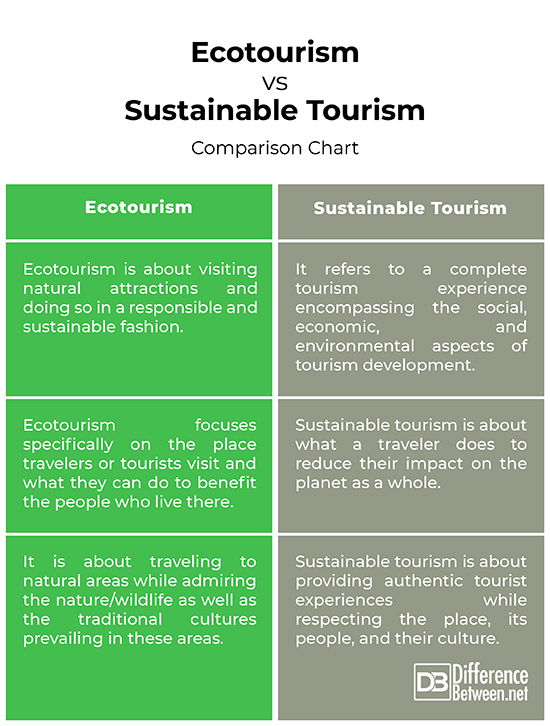
Both ecotourism and sustainable tourism refer to responsible travel practices with a goal to have a sustainable impact or a positive impact on the communities that you’re visiting. You can do that by respecting and supporting local communities in ways that affect their lives, their livelihood, and their ecology. The government and the local bodies should equally contribute to the conservation of their cultural heritage and the natural surroundings of the place. Sustainable tourism is about what a traveler does to reduce their impact on the planet as a whole whereas ecotourism refers to a niche tourism segment focusing on ecological conservation and educating visitors on local environments.
What is the difference between ecotourism and tourism?
Ecotourism is a more responsible form of tourism that is concerned with preserving the environment and respecting the cultural heritage of local communities. Tourism, in a general sense, is not much concerned about the well being of the local communities.
What are similarities between ecotourism and sustainable tourism?
Well, both refer to responsible travel practices with a goal to have a sustainable impact or a positive impact on the communities that you’re visiting. Ecotourism is one of the best examples of sustainable tourism.
Is ecotourism part of sustainable tourism?
Ecotourism is a niche area in tourism is about visiting natural attractions or natural places, and doing so in a responsible and sustainable fashion. Like sustainable tourism, ecotourism helps in community development and protecting natural environment.
What are sustainable tourism examples?
One of the best examples of sustainable tourism is the eco-friendly Six Senses Fiji resort, which is completely solar powered and runs on a low-waste model, and uses locally sourced products. Another great example is the Feynan Ecolodge in Jordan, which is the first of its kind in Jordan and offers its visitors a plethora of authentic experiences engrained in nature.
Why is ecotourism not sustainable?
While ecotourism is a sustainable tourism practice, it may endanger the environments and wildlife it is supposed to protect. There is also risk of negative environmental impacts from tourism. So, ecotourism is not always sustainable.
- Recent Posts
- Difference Between HTML and Text - April 19, 2024
- Difference Between FTP and SFTP - April 16, 2024
- Difference Between El Nino and La Nina - April 13, 2024
Sharing is caring!
- Pinterest 3
Search DifferenceBetween.net :
- Difference Between Sustainable and Renewable
- Difference Between Cultural Relativism and Ethnocentrism
- Difference Between FSC and SFI
- Difference Between First Name and Last Name
- Difference Between Sustainable Agriculture and Modern Agriculture
Cite APA 7 Khillar, S. (2022, December 6). Difference Between Ecotourism and Sustainable Tourism. Difference Between Similar Terms and Objects. http://www.differencebetween.net/business/difference-between-ecotourism-and-sustainable-tourism/. MLA 8 Khillar, Sagar. "Difference Between Ecotourism and Sustainable Tourism." Difference Between Similar Terms and Objects, 6 December, 2022, http://www.differencebetween.net/business/difference-between-ecotourism-and-sustainable-tourism/.
Leave a Response
Name ( required )
Email ( required )
Please note: comment moderation is enabled and may delay your comment. There is no need to resubmit your comment.
Notify me of followup comments via e-mail
References :
Advertisments, more in 'business'.
- Difference Between LLC and INC
- Difference Between DJIA and NASDAQ
- Difference Between BPO and Call Center
- Difference Between Advertising and Marketing
- Difference Between Accounting and Bookkeeping
Top Difference Betweens
Get new comparisons in your inbox:, most emailed comparisons, editor's picks.
- Difference Between MAC and IP Address
- Difference Between Platinum and White Gold
- Difference Between Civil and Criminal Law
- Difference Between GRE and GMAT
- Difference Between Immigrants and Refugees
- Difference Between DNS and DHCP
- Difference Between Computer Engineering and Computer Science
- Difference Between Men and Women
- Difference Between Book value and Market value
- Difference Between Red and White wine
- Difference Between Depreciation and Amortization
- Difference Between Bank and Credit Union
- Difference Between White Eggs and Brown Eggs
Thank you for visiting nature.com. You are using a browser version with limited support for CSS. To obtain the best experience, we recommend you use a more up to date browser (or turn off compatibility mode in Internet Explorer). In the meantime, to ensure continued support, we are displaying the site without styles and JavaScript.
- View all journals
- My Account Login
- Explore content
- About the journal
- Publish with us
- Sign up for alerts
- Open access
- Published: 31 May 2023
Eco-tourism, climate change, and environmental policies: empirical evidence from developing economies
- Yunfeng Shang 1 ,
- Chunyu Bi 2 ,
- Xinyu Wei 2 ,
- Dayang Jiang 2 ,
- Farhad Taghizadeh-Hesary ORCID: orcid.org/0000-0001-5446-7093 3 , 4 &
- Ehsan Rasoulinezhad ORCID: orcid.org/0000-0002-7726-1757 5
Humanities and Social Sciences Communications volume 10 , Article number: 275 ( 2023 ) Cite this article
8286 Accesses
7 Citations
1 Altmetric
Metrics details
- Environmental studies
Developing ecotourism services is a suitable solution to help developing countries improve the status of sustainable development indicators and protect their environment. The primary purpose of this paper is to find out the effects of green governance variables and carbon dioxide emissions on ecotourism for 40 developing economies from 2010 to 2021. The results confirmed a uni-directional causal relationship between the green governance indicator and the inflation rate of the ecotourism indicator. In addition, with a 1% improvement in the green governance index of developing countries, the ecotourism of these countries will increase by 0.43%. In comparison, with a 1% increase in the globalization index of these countries, ecotourism will increase by 0.32%. Moreover, ecotourism in developing countries is more sensitive to macroeconomic variables changes than in developed economies. Geopolitical risk is an influential factor in the developing process of ecotourism. The practical policies recommended by this research are developing the green financing market, establishing virtual tourism, granting green loans to small and medium enterprises, and government incentives to motivate active businesses.
Similar content being viewed by others
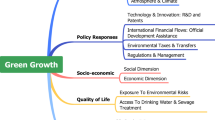
Comprehensive green growth indicators across countries and territories

Role of foreign direct Investment and political openness in boosting the eco-tourism sector for achieving sustainability

Ways to bring private investment to the tourism industry for green growth
Introduction.
The challenge of climate change has become a primary threat to living on the Earth in the last centuries (Rasoulinzhad and Taghizadeh-Hesary, 2022 ). Many meetings of the countries at the regional and international level are held on the topics of environment and climate change. Regardless of environmental issues, population growth, and the lack of control of greenhouse gas emissions, industrialization has been the most crucial cause of the climate change crisis. Chao and Feng ( 2018 ) address human activity as the leading cause of climate change and express that this challenge is a potential threat to living on Earth. Woodward ( 2019 ) argued that climate change threats include the rise in global temperature, the melting of polar ice caps, and unprecedented disease outbreaks. Therefore, urgent policies and solutions are essential to control and lower the risk of global change. One of the signs of climate change is the increase in the average temperature of the Earth’s surface. Figure 1 shows the temperature data from 1910 to 2021 for the four continents of Asia, Europe, Africa, and North America.
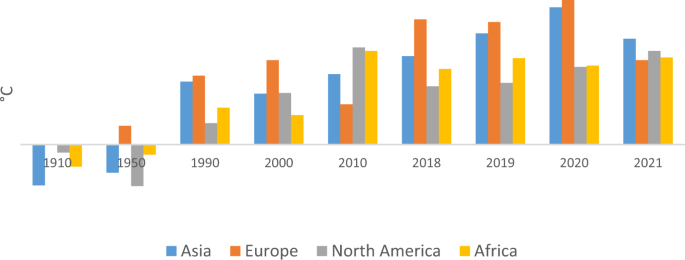
Source: Authors from NOAA ( https://www.ncei.noaa.gov/access/monitoring/climate-at-a-glance/global/time-series ).
The data in Fig. 1 shows that the air temperature has increased significantly over the past century, which has been more prominent in Asia and Europe. In 2021, we saw a decrease in temperature changes due to the spread of the Corona disease and a decrease in the rate of greenhouse gas emissions. However, the role of the Asian continent in increasing the global temperature has been more than other continents due to its large population and excessive consumption of fossil fuels.
During the past decades, the world’s countries have tried to formulate and implement various environmental policies collectively in the form of agreements or separately to fight environmental threats. Regarding international agreements, such things as the Paris Agreement of 2015, the Kyoto Protocol of 1997, the Montreal Protocol of 1987, and the Vienna Convention on the Protection of the Ozone Layer in 1985 can be addressed whose primary purpose is to integrate the goals and motivation of the international community to the world’s environmental threats. However, a group of earlier studies, such as Zheng et al. ( 2017 ), Takashima ( 2018 ), and Roelfsema et al. ( 2022 ), emphasized the inefficiency of these global agreements, especially after the left the USA from the Paris Agreement on 1 June 2017. The most important cause of this inefficiency has been the need for more motivation of countries to fulfill their international obligations towards environmental issues. However, many governments consider the threat of climate change only within their geographical boundaries and have tried to formulate and implement green policies to advance their environmental protection goals. These policies include green financial policies (green taxes, green subsidies), monetary policies (such as green loans and green financing), and cultural and social policies in line with sustainable development. The ultimate goal of these green policies is a green economy, an environmentally friendly economy, a zero carbon economy, or a sustainable economy. Lee et al. ( 2022 ) define the green economy as a broad concept comprising green industry, agriculture, and services. Centobelli et al. ( 2022 ) express that environmental sustainability should be more attention in the service sector owing to its penetration into social life and interactions.
Tourism and travel-related services are among countries’ main parts of the service sector. By creating the flow of tourists, tourism services can lead to capital transfer, job creation, cultural exchange (globalization), and increasing welfare in the country hosting the tours. According to the Yearbook of Tourism Statistics published by the World Tourism Organization, international tourism has increased from 522.2 billion US dollars in 1995 to nearly 1.86 trillion US dollars in 2019. This increase shows the importance of tourism services in generating income for countries, especially in the era of Corona and post-corona. Casado-Aranda et al. ( 2021 ) express that tourism services can be a central driver of economic growth recovery in post COVID era. Jeyacheya and Hampton ( 2022 ) argue that tourism can make high incomes for host countries leading to job creation and economic flourishing in destination cities for tourists.
An important issue mentioned in the corona era and relies on the post-corona era is the revitalizing of green economic growth. An important issue mentioned in the corona era and relying on the post-corona era is the revitalizing green economic growth (Bai et al., 2022 ; Werikhe, 2022 ), an opportunity that countries should pay more attention to in order to rebuild their economic activities. In other words, countries should plan their return to economic prosperity with environmental issues in mind. To this end, the issue of tourism finds a branch called Ecotourism or sustainable tourism which has environmental concerns and tries to help countries to improve environmental protection policies. Ecotourism is an approach based on environmental criteria, which is opposed to over-tourism (a type of tourism that disrupts the protection of the environment and destroys natural resources). The International Ecotourism Society defines Ecotourism as an efficient way to conserve the environment and improve local people’s well-being. It can be said that Ecotourism, along with various economic advantages (income generation, job creation, globalization, poverty alleviation), will bring environmental protection to the world’s countries, achieving the goals of green economic growth recovery and sustainable development. Xu et al. ( 2022 ) consider Ecotourism as one of the essential components of achieving sustainable development in the post-corona era.
Ecotourism in developing countries has more priorities compared to developed economies. Firstly, developing countries are often countries with financial problems of the government, and the governments in these countries need more capital to advance sustainable development goals. Therefore, developing ecotourism services can be a suitable solution to help these countries improve the status of sustainable development indicators and protect their environment. Second, due to the spread of the Corona disease, developing countries have experienced numerous bankruptcy in the tourism services sector. Therefore, promoting ecotourism in these countries is of great importance in the post-corona era. Third, developing countries have a high share in the emission of greenhouse gases in the world due to their high dependence on fossil fuels and the lack of advanced green technologies. Fourth, due to bureaucratic processes, high cost, and lack of market transparency, greenwashing may happen in developing economies’ ecotourism industry, meaning that a company serving ecotourism services makes its activities seem more sustainable and ethical than they are. The term “greenwashing” can harshly impact the future development path of the ecotourism industry in developing economies. According to the reasons mentioned above, developing ecotourism in developing countries can be an essential factor in controlling and reducing greenhouse gas emissions in these countries.
This paper tries to contribute to the existing literature from the following aspects:
Calculating the ecotourism index for selected countries based on the criteria for measuring sustainable tourism stated by the World Tourism Organization in the United Nations. Considering that there is no specific index for ecotourism, the calculation of ecotourism in this article will be innovative.
Measuring the green governance index as a proxy for environmental policies for selected countries based on the Environment Social and Governance (ESG) data.
Selecting a sample of 40 developing countries from different geographical regions to calculate the interconnections between ecotourism, green governance, and climate change
Making a further discussion to address the role of uncertainty and the developing level of countries in the relationship between ecotourism and explanatory variables.
The main results confirm the existence of a uni-directional causal relationship running from the green governance indicator and inflation rate to the ecotourism indicator. In addition, with a 1% improvement in the green governance index of developing countries, the ecotourism of these countries will increase by 0.43%. A 1% increase in the globalization index of these countries accelerates ecotourism by 0.32%.
Moreover, ecotourism in developing countries is more sensitive to macroeconomic variables changes than in developed economies. Geopolitical risk is an influential factor in the developing process of ecotourism. The practical policies recommended by this research are developing the green financing market, establishing virtual tourism, granting green loans to small and medium enterprises, and government incentives to motivate active businesses.
The paper in continue is organized as follows: section “Literature review” provides a short literature review to determine the gaps this research seeks to fill. Section “Data and model specification” argues data and model specification. The following section represents empirical results. Section “Discussion” expresses discussion, whereas the last section provides conclusions, policy implications, research limitations, and recommendations to research further.
Literature review
This part of the article analyzes and classifies the previous literature on ecotourism and sustainable development in a rational and structured way. The importance of tourism in economic growth and development has been discussed in previous studies. However, the study of the effect of tourism on climate change has received little attention. Especially the relationship between sustainable tourism, climate change, and environmental policies is a problem that has yet to receive the attention of academic experts.
A group of previous studies has focused on the place of tourism in economic development and growth. Holzner ( 2011 ) focused on the consequences of tourism development on the economic performance of 134 countries from 1970 to 2007. They found out that excessive dependence on tourism income leads to Dutch disease in the economy, and other economic sectors need to develop to the extent of the tourism sector. In another study, Sokhanvar et al. ( 2018 ) investigated the causal link between tourism and economic growth in emerging economies from 1995 to 2014. The main results confirmed that the linkage is country-dependent. Brida et al. ( 2020 ) studied 80 economies from 1995 to 2016 to determine how tourism and economic development are related. The paper’s conclusions highlighted tourism’s-positive role in economic activities.
Another group of previous studies has linked tourism to sustainability targets. Sorensen and Grindsted ( 2021 ) expressed that nature tourism development has a positive and direct impact on achieving sustainable development goals of countries. In a new study, Li et al. ( 2022 ) studied the impacts of tourism development on life quality (as one of the sustainable development goals defined by the UN in 2015) in the case of Japan. They found that tourism development positively impacts the quality of life of age groups in the country. Ahmad et al. ( 2022 ) explored the role of tourism in the sustainability of G7 economies from 2000–2019. The primary findings revealed the positive impact of tourism arrivals on sustainable economic development. Zekan et al. ( 2022 ) investigated the impact of tourism on regional sustainability in Europe. They concluded that tourism development increases transport, leading to increased carbon dioxide emissions. Therefore, tourism development causes environmental pollution.
Tourism that can pay attention to environmental issues is called “ecotourism.” Many new studies have studied different dimensions of ecotourism. Lu et al. ( 2021 ) expanded the concept of the ecotourism industry. The significant results expressed that smart tourist cities are essential for efficient ecotourism in countries. Thompson ( 2022 ) expressed the characteristics of ecotourism development through survey methodology. The results confirmed the importance of transparent regulations, government support, and social intention to promote ecotourism. In another study, Heshmati et al. ( 2022 ) employed the SWOT analysis method to explore the critical success factors of ecotourism development in Iran. They found that legal documentation and private participation are major influential factors in promoting ecotourism in Iran. In line with the previous research, Hosseini et al. ( 2021 ) tried to explore the influential factors in promoting ecotourism in Iran by employing a SWOT analysis. They depicted that attracting investors is essential to enhance ecotourism projects in Iran. Hasana et al. ( 2022 ) reviewed research to analyze the earlier studies about ecotourism. The conclusions expressed that ecotourism is necessary for environmental protection. However, it is a challenging plan for the government, and they should carry out various policies toward ecotourism development. Kunjuraman et al. ( 2022 ) studied the role of ecotourism on rural community development in Malaysia. The significant results confirmed that ecotourism could transfer-positive impacts.
Several earlier studies have concentrated on the characteristics of ecotourism in different developed and developing economies. For example, Ruhanen ( 2019 ) investigated the ecotourism status in Australia. The paper concluded that the country could potentially make a larger share of ecotourism to the entire local tourism industry. Jin et al. ( 2022 ) studied the role of local community power on green tourism in Japan. They concluded that the concept of agricultural village activity and regional support positively influences the development of green tourism in Japan as a developed economy. Choi et al. ( 2022 ) sought to find aspects of ecotourism development in South Korea. The preliminary results confirmed the importance of green governance and efficient regulation to promote a sustainable tourism industry. Baloch et al. ( 2022 ) explored the ecotourism specifications in the developing economy of Pakistan. They found that Pakistan’s ecotourism needs government support and the social well-being of the visited cities. Sun et al. ( 2022 ) studied ecotourism in China. They concluded that there is imbalanced development of ecotourism among Chinese provinces due to the need for more capital to invest in all ecotourism projects throughout the Chinese cities. Tajer and Demir ( 2022 ) analyzed the ecotourism strategy in Iran. They concluded that despite various potentials in the country, insufficient capital, lack of social awareness, and political tension are the major obstacles to promoting a sustainable tourism industry in Iran.
Another group of earlier studies has drawn attention to promoting eco-tourism in the post COVID era. They believe that the corona disease has created an excellent opportunity to pay more attention to environmental issues and that countries should move towards sustainable development concepts such as sustainable (eco) tourism in the post-corona era. Soliku et al. ( 2021 ) studied eco-tourism in Ghana during the pandemic. The findings depicted the vague impacts of a pandemic on eco-tourism. Despite the short-term negative consequence of the pandemic on eco-tourism, it provides various opportunities for developing this sector in Ghana. Hosseini et al. ( 2021 ) employed the Fuzzy Dematel technique to find solutions for promoting eco-tourism during COVID-19. They found out that planning to increase the capacity of eco-tourism and incentive policies by governments can help promote the eco-tourism aspect under the pandemic’s consequences. Abedin et al. ( 2022 ) studied the consequence of COVID-19 on coastal eco-tourism development. The primary findings confirmed the negative impacts of a pandemic on the development of eco-tourism.
A review of previous studies shows that tourism can positively impact green growth and sustainable development. Sustainable tourism can be used as a policy to deal with the threat of climate change. This issue needs more attention in the corona and post-corona eras. Because in the post-corona era, many countries have sought to revive green economic growth, and ecotourism can be one of the tools to achieve it. As observed, a detailed study of the relationship between climate change, ecotourism, and environmental policies has yet to be done. Therefore, this research will address and fill this literature gap.
Data and model specification
Data description.
The paper seeks to find the relationship between climate change, ecotourism, and environmental policy for the panel of 40 developing economies from different regions from 2010 to 2021 (480 observations). The sample size could have been more extensive due to the lack of information on some variables. However, there are 480 observations in the data analysis of the data panel; therefore, the number of samples selected is acceptable.
To determine the proxies for main variables, CO2 emissions per capita are selected as the proxy for climate change. Many earlier studies (e.g., Espoir et al., 2022 ) have employed this variable as an appropriate variable representing the status of climate change. Regarding ecotourism, the World Tourism Organization proposed some measurements of sustainable tourism, and also following Yusef et al. ( 2014 ), the entropy weight method is employed to calculate a multi-dimensional ecotourism indicator comprising per capita green park area (square meters), gross domestic tourism revenue (US dollars), the ratio of good air quality (%), green transport, renewable water resources (km3) and deforestation rate (%). It is a novel ecotourism indicator that can show the ecotourism status in countries.
In addition, the green governance index is calculated as a proxy for environmental policy. Principally, the Environment, Social, and Governance (ESG) data from World Bank are gathered to calculate this variable. With the improvement of the Green Governance Index, the quality of environmental policies will also increase, and vice versa. With the adverseness of the Green Governance Index, the efficiency of environmental policies will decrease.
Regarding control variables, the inflation rate as an influential factor in tourism flows is selected. The importance of this variable to promoting/declining tourism flows has been drawn to attention by some earlier studies, such as Liu et al. ( 2022 ). The inflation rate can raise the total cost of travel, causing a reduction in tourism flows, while any reduction in the inflation rate can increase the intention of tourists to travel. In addition, the KOF globalization index provided by the KOF Swiss Economic Institute is another control variable. A country with a higher degree of globalization means more readiness to accept tourists from countries with different cultures and religions.
Model specification
According to the variables mentioned above, 40 examined developing countries from 2010 to 2021, the panel co-integration model can be written as Eq. 1 :
ETOR indicates the ecotourism index, while CO2, GGI, INF, and GLOB denote Carbon dioxide emissions per capita, green governance index, inflation rate, and globalization index, respectively. i is 1,2,…,40 and shows examined developing economies, while t is time and contains 2010, 2011,..,2021.
Prior to the estimation of coefficients of Eq. 1 , the panel unit root tests are employed to find out whether the series is stationary. To this end, three tests of LLC (Levin et al., 2002 ), Breitung’s test ( 2000 ), and the PP-Fisher test (Philips and Perron, 1988 ). If all the variables are stationary at the first level of difference (I(1)), a panel co-integration test can be conducted to explore whether the model is spurious. To this end, Kao’s co-integration test ( 1999 ) and Pedroni’s residual co-integration test ( 2004 ) are conducted. If the co-integration relationship exists among variables, the panel causality test can be run to determine the causal linkages among variables. In this paper, the two steps of Engle and Granger (1987)‘s test, which is based on the error correction model (ECM) is used as Eqs. 2 – 6 :
In the above Equations, Δ is the first differences of variables, while θ and ECT represent the fixed country effect and error correction term.
The next step is the long-run panel co-integration estimations. To this end, Fully Modified OLS (FMOLS) and Dynamic OLS (DOLS) as robustness checks are conducted, which are two famous panel co-integration estimators (Rasoulinezhad, 2018 ). The FMOLS estimator has various advantages. It allows serial correlation, endogeneity, and cross-sectional heterogeneity (Erdal and Erdal, 2020 ).
Empirical results
In this section, we will implement the experimental research model. The purpose of implementing an econometric model based on panel data is to find the effects of green governance variables and carbon dioxide emissions on ecotourism. As the first step, the panel unit root tests are conducted. The results are reported in Table 1 as follows:
According to Table 1 , all three-panel unit root tests depict that all series are non-stationary at the level and become stationary after a first difference. Next, the panel co-integration tests are conducted, and their results are represented in Tables 2 and 3 :
The two-panel co-integration tests’ findings confirm the presence of co-integration linkages among variables.
The panel causality test studies the short-term and long-term causal relationship among variables. Table 4 reports the results of the panel causality check as follows:
According to Table 4 , there is a uni-directional causal relationship between the green governance indicator and the inflation rate of the ecotourism indicator. At the same time, there is a bi-directional causal relationship between carbon dioxide emissions and ecotourism indicators, confirming the existence of the feedback effect. In addition, there is only short-term causality from the green governance indicator to carbon dioxide emissions. In contrast, ecotourism and the globalization index have a uni-directional causal linkage. In the short term, improving ecotourism can cause globalization and reduce carbon emissions in developing economies. Regarding the long-term causality, it can be concluded that the ECT of ecotourism, green governance index, and globalization index are statistically significant. These three variables are major adjustment variables when the system departs from equilibrium.
In the last stage, the long-run estimations are done through FMOLS and DOLS estimators. Table 5 lists the results of the estimations by these two-panel co-integration estimators:
Based on FMOLS estimation, it can be concluded that the Green Governance index has a positive and significant coefficient in such a way that with a 1% improvement in the green governance index of developing countries, the ecotourism of these countries will increase by 0.43%. By improving the state of green governance, the quality of formulated and implemented green policies in these countries will increase, improving the conditions of ecotourism development. This finding aligns with Agrawal et al. ( 2022 ) and Debbarma and Choi ( 2022 ), who believe that green governance is essential to sustainable development. In the case of carbon dioxide emissions, the coefficient of this variable is not statistically significant. In other words, the variable of carbon dioxide emissions per capita has no significant effect on ecotourism in developing countries. The inflation rate has a significant negative effect on ecotourism. With a 1% increase in the general prices of goods and services in developing countries, ecotourism will decrease by 0.34%. This finding aligns with Rahman ( 2022 ), who showed a negative relationship between inflation and sustainable development in their research. An increase in inflation means an increase in the total cost of a tourist’s trip to the destination country, inhibiting the growth of tourist services.
Regarding the globalization variable, this variable has a significant positive effect on the ecotourism of developing countries. With a 1% increase in the globalization index of these countries, ecotourism will increase by 0.32%. Globalization means more interaction with the world’s countries, acceptance of different cultures and customs, more language learning in society, more acceptance of tourism, and development of tourist services in the country. This finding is consistent with the results of Akadiri et al. ( 2019 ), who confirmed that globalization is one of the crucial components in tourism development.
The DOLS estimator was also used to ensure the obtained findings’ validity. The results of this method are shown in Table 5 . The signs of the coefficients are consistent with the results obtained by the FMOLS method. Therefore, the validity and reliability of the obtained coefficients are confirmed.
In this section, we will briefly discuss the relationship between ecotourism and climate change and the environmental policy considering the uncertainty and the relationship between variables in developed and developing countries.
Consideration of uncertainty
Uncertainty as a primary reason for risk has become a research issue in recent decades. Uncertainty can make the future unpredictable and uncontrollable, affecting economic decision-making. Regarding tourism, the impacts of uncertainty have been drawn to attention by several earlier studies (e.g., Dutta et al., 2020 ; Das et al., 2020 ; and Balli et al., 2019 ; Balli et al., 2018 ). In general, uncertainty in the tourism industry reflects tourists’ concerns and consumption habits in the way that by increasing uncertainty, it is expected that tourists make sense of risks and postpone their tourism activities, and vice versa; in the sphere of certainties, the various risks are clear, and tourists can make rational decisions for their tourism plans and activities. In order to explore the impacts of uncertainties on eco-tourism of the examined developing economies, the geopolitical risk index (GPR) as a proxy for economic policy uncertainty index is gathered and added as a control variable to Eq. 1 . The estimations results by FMOLS are reported in Table 6 as follows.
According to Table 6 , the uncertainty (geopolitical risk) has a negative coefficient meaning that with a 1% increase in geopolitical risk, the eco-tourism industry in the examined developing countries decreases by approximately 0.69%. The signs of coefficients of other variables align with the earlier findings, represented in Table 5 . In addition, the magnitude of the impact of geopolitical risk is larger than the impacts of other variables highlighting the importance of lower geopolitical risk in these economies to reach sustainable tourism targets.
Difference in developed and developing economies
Considering the different structures and financial power of these two groups of countries, the relationship between the variables mentioned in these two groups is expected to be different. In the previous section, the results for the group of developing countries showed that the Green Governance index has a positive and significant coefficient. In the case of carbon dioxide emissions, the coefficient of this variable is not statistically significant. The inflation rate has a significant negative effect on ecotourism. Regarding the globalization variable, it can be mentioned that this variable has a significant positive effect on the ecotourism of developing countries. In order to analyze the relationship between variables in the developed countries, the top 10 countries with the highest HDI in 2021 are selected (Switzerland (0.962), Norway (0.961), Iceland (0.959), Hong Kong (0.952), Australia (0.951), Denmark (0.948), Sweden (0.947) and Ireland (0.945)). The selected variables, explained in section “Data and model specification”, are collected from 2010 to 2021. The panel unit root tests confirmed that all series are non-stationary at the level and become stationary after a first difference. In addition, the presence of co-integration linkages among variables is revealed by the panel co-integration test. The panel co-integration estimator of FMOLS is employed to study the long-term relationship among variables. The findings are reported in Table 7 as follows:
According to the estimated coefficients, the green governance indicator positively and statistically significantly impacts ecotourism in the examined developed economies. However, the magnitude of the impact of this variable is more considerable for developing countries because these countries have more imbalances in markets and regulations. Therefore, the presence of good green tourism can have a more positive effect on advancing the goal of ecotourism. Contrary to the findings of developing countries, carbon dioxide emission in developed countries has a negative and significant effect, meaning that with an increase of 1% in carbon dioxide in developed countries, the level of ecotourism becomes more unfavorable by 0.034%. Moreover, inflation and globalization variables have significant negative and positive coefficients, respectively. However, the magnitudes of these two variables’ coefficients are also higher in developing countries. Ecotourism in developing countries is more sensitive to changes in macroeconomic variables such as green governance, globalization, and inflation.
Another difference between eco-tourism in developed and developing economies may be interpreted through the term “greenwashing,” introduced by Westerveld in 1986 (Maichum et al., 2016 ). In developing countries, due to the economic structure, limited knowledge, bureaucratic process, lack of legal eco-certification, and imperfect competition, a company involved in the eco-tourism industry makes an unsubstantiated claim to deceive consumers into accepting the company’s services are in line with environmental protection policies. Hence, green governance in developing countries should have another role in regulating the eco-tourism market to lower the threat of greenwashing in eco-tourism services.
Conclusions and policy recommendations
Concluding remarks.
The findings of econometric modeling revealed the relationship between environmental policies, climate change, and ecotourism. Based on the findings of the econometric model, the following conclusions can be presented:
A uni-directional causal relationship runs from the green governance indicator and inflation rate to the ecotourism indicator, which means that any changes in green governance and inflation rate cause changes in ecotourism, which is vital for developing economies where governance and inflation rate are two crucial issues.
There is a bi-directional causal relationship between carbon dioxide emissions and ecotourism indicators, confirming the existence of the feedback hypothesis, expressing that in developing economies, any policies related to ecotourism cause changes in CO2 emissions and vice versa.
There is only short-term causality from the green governance indicator to carbon dioxide emissions, whereas there is a uni-directional causal linkage from ecotourism to the globalization index. In other words, in the short term, improving ecotourism can cause globalization and reduce carbon emissions in developing economies.
By improving green governance in developing economies, the quality of formulated and implemented green policies in these countries will increase, improving the conditions of ecotourism development.
An increase in the inflation rate raises the total cost of a tourist’s trip to developing economies, inhibiting the growth of eco-tourist services.
Globalization means more interaction with the world’s countries, acceptance of different cultures and customs, more language learning in society, more acceptance of tourism, and development of tourist services in developing countries.
Policy implications
In order to achieve the promotion of ecotourism in developing countries, the implementation of integrated and effective strategic and practical policies is of great importance. According to the concluding remarks mentioned, practical policies are presented as follows for enhancing ecotourism in developed countries. The development of ecotourism requires the improvement of various infrastructures and mechanisms, which depends on the implementation of projects related to ecotourism in developing countries. Because most countries do not have enough financial power to invest in such projects, developing the green financing market can be one of the critical practical solutions. The green financing tool can increase the investment risk and return on investment in such projects, and as a result, the participation of the private sector in these projects will increase. With information and communication technology development, virtual tourism can solve many environmental issues related to human physical presence. Virtual tourism is one of the branches of tourism services that provide people with destinations, places of interest, and tourist attractions with full quality but in virtual form. Another practical policy is granting green loans to small and medium enterprises active in ecotourism. Despite the organizational agility, these companies do not have the significant financial power to develop different sectors of ecotourism; therefore, the cooperation of the banking industry of developing countries by providing green loans (with low-interest rates) can motivate small and medium-sized companies in the field of activities related to ecotourism. Government incentives to motivate businesses active in ecotourism and government deterrent policies (green tax) from businesses active in the field of tourism to lead them to increase the share of ecotourism in their activities can be a proper operational strategy. In developing countries, the role of government and green governance is vital in advancing the goals of ecotourism. By improving the level of its green governance, the government can create efficient policies, regulations, and social tools to create motivation and desire to accept ecotourism, an essential and undeniable issue in developing societies. Creating a guarantee fund for ecotourism companies in developing countries is another practical policy to support these companies financially. Guarantee funds can be established with the participation of the people of ecotourism destinations in order to strengthen the financial strength of ecotourism companies in these destinations.
Limitations and recommendations to further research
This research had a practical and innovative contribution to the literature on ecotourism in developing countries. The findings obtained from the econometric model analysis provided appropriate practical and strategic policies to the policymakers of countries interested in the development of ecotourism. However, access to data related to the ecotourism index and sustainable development of developing countries due to the lack of community in a specific database is considered one of the critical limitations of this research. This limitation caused many developing countries to be excluded from the research sample, which may have created a deviation in the research. Adding more countries to the test sample in future research is suggested to obtain complete and accurate results. Also, due to the outbreak of the Corona pandemic at the end of 2019 and the Russia-Ukraine war since the beginning of 2022, it is suggested that these two variables be included in the econometric model as an illusion in order to analyze their effects on the ecotourism of the countries of the world. Using other econometric methods, such as artificial neural networks, is suggested to model ecotourism in different countries. Complex modeling by taking into account trends and trends to predict the relationship between variables in the future will be an essential step in formulating effective programs in ecotourism.
Data availability
The datasets generated during and/or analyzed during the current study are available from the corresponding author on reasonable request.
Abedin Z, Handayani W, Zaky E, Faturrahman A (2022) Perceived risk and attitude’s mediating role between tourism knowledge and visit intention during the COVID-19 pandemic: implementation for coastal-ecotourism management. Heliyon 8(10):e10724. https://doi.org/10.1016/j.heliyon.2022.e10724
Article Google Scholar
Agrawal A, Brandhorst S, Jain M, Liao C, Pradhan N, Solomon D (2022) From environmental governance to governance for sustainability. One Earth 5(6):615–621
Article ADS Google Scholar
Ahmad N, Youjin L, Hdia M (2022) The role of innovation and tourism in sustainability: why is environment-friendly tourism necessary for entrepreneurship? J Clean Prod 379(Part 2):134799. https://doi.org/10.1016/j.jclepro.2022.134799
Akadiri S, Alola A, Akadiri A (2019) The role of globalization, real income, tourism in environmental sustainability target. Evidence from Turkey. Sci Total Environ 687:423–432
Article ADS CAS PubMed Google Scholar
Bai X, Wang K, Tran T, Sadiq M, Trung L, Khudoykulov K (2022) Measuring China’s green economic recovery and energy environment sustainability: econometric analysis of sustainable development goals. Econ Anal Policy 75:768–779
Balli F, Shahzad SJH, Uddin GS (2018) A tale of two shocks: what do we learn from the impacts of economic policy uncertainties on tourism? Tour Manag68:470–475
Balli F, Uddin GS, Shahzad SJH (2019) Geopolitical risk and tourism demand in emerging economies. Tour Econ 25(6):997–1005
Baloch Q, Shah S, Iqbal N, Sheeraz M, Asadullah M, Mahar S, Khan A (2022) Impact of tourism development upon environmental sustainability: a suggested framework for sustainable ecotourism. Environ Sci Pollut Res https://doi.org/10.1007/s11356-022-22496-w
Breitung J (2000) The local power of some unit root tests for panel data. In: Baltagi B (ed.). Nonstationary panels, panel cointegration, and dynamic panels, advances in econometrics. vol. 15. JAI Press, Amsterdam. pp. 161–178
Brida J, Gomez D, Segarra V (2020) On the empirical relationship between tourism and economic growth. Tour Manag 81:104131. https://doi.org/10.1016/j.tourman.2020.104131
Casado-Aranda L, Fernandez J, Bastidas-Manzano A (2021) Tourism research after the COVID-19 outbreak: insights for more sustainable, local and smart cities. Sustain Cities Soc 73:103126. https://doi.org/10.1016/j.scs.2021.103126
Article PubMed PubMed Central Google Scholar
Centobelli P, Cerchione R, Esposito E (2022) Environmental sustainability in the service industry of transportation and logistics service providers: systematic literature review and research directions. Transp Res Part D Trans Environ 53:454–470
Chao Q, Feng A (2018) Scientific basis of climate change and its response. Glob Energy Interconnect 1(4):420–427
Google Scholar
Choi Y, Oh C, Chon J (2022) Applying the resilience principles for sustainable ecotourism development: a case study of the Nakdong Estuary, South Korea. Tour Manag 83:104237. https://doi.org/10.1016/j.tourman.2020.104237
Das D, Dutta A, Bhadra A, Uddin GS (2020) Role of presidential uncertainties on the hotel industry. Ann Tour Res 81:102762
Debbarma J, Choi Y (2022) A taxonomy of green governance: a qualitative and quantitative analysis towards sustainable development. Sustain Cities Soc 79:103693. https://doi.org/10.1016/j.scs.2022.103693
Dutta A, Mishra T, Uddin GS, Yang Y (2020) Brexit uncertainty and volatility persistence in tourism demand. Curr Issue Tour 24(16):2225–2232
Erdal H, Erdal G (2020) Panel FMOLS model analysis of the effects of livestock support policies on sustainable animal presence in Turkey. Sustainability 12:3444. https://doi.org/10.3390/su12083444
Espoir D, Mudiangombe B, Bannor F, Sunge R, Tshitaka J (2022) CO2 emissions and economic growth: Assessing the heterogeneous effects across climate regimes in Africa. Sci Total Environ 804:150089. https://doi.org/10.1016/j.scitotenv.2021.150089
Hasana U, Swain S, George B (2022) A bibliometric analysis of ecotourism: a safeguard strategy in protected areas. Region Sustain 3(1):27–40
Heshmati M, Gheitury M, Shadfar S (2022) Factors affecting possibility of ecotourism development and sustaining natural resources using SWOT approach in west Iran. Int J Geoheritage Parks 10(2):173–183
Holzner M (2011) Tourism and economic development: the beach disease. Tour Manag32(4):922–933
Hosseini S, Paydar M, Keshteli M (2021) Recovery solutions for ecotourism centers during the Covid-19 pandemic: utilizing Fuzzy DEMATEL and Fuzzy VIKOR methods. Exp Syst Appl 185:115594. https://doi.org/10.1016/j.eswa.2021.115594
Hosseini S, Paydar M, Triki C (2021) Implementing sustainable ecotourism in Lafour region, Iran: applying a clustering method based on SWOT analysis. J Clean Prod 329:129716. https://doi.org/10.1016/j.jclepro.2021.129716
Jeyacheya J, Hampton M (2022) Pathway choice and post-Covid tourism: Inclusive growth or business as usual? World Dev Sustain 1:100024. https://doi.org/10.1016/j.wds.2022.100024
Jin C, Takao M, Yobuta M(2022) Impact of Japan’s local community power on green tourism. Asia Pacific J Region Sci 6:571–591
Kao C (1999) Spurious regression and residual-based tests for cointegration in panel data. J Economet 90(1):1–44
Article MathSciNet MATH Google Scholar
Kunjuraman V, Hussin R, Aziz R (2022) Community-based ecotourism as a social transformation tool for rural community: a victory or a quagmire. J Outdoor Recreat Tour 39:100524. https://doi.org/10.1016/j.jort.2022.100524
Lee C, Wang C, Ho S (2022) The dimension of green economy: Culture viewpoint. Econ Anal Policy 74:122–138
Levin A, Lin CF, Chu CS (2002) Unit root tests in panel data: asymptotic and finite-sample properties. J Economet 108(1):1–24
Li J, Ridderstaat J, Yost E (2022) Tourism development and quality of life interdependence with evolving age-cohort-based population. Tour Manag 93:104621. https://doi.org/10.1016/j.tourman.2022.104621
Liu A, Kim Y, Song H (2022) Toward an accurate assessment of tourism economic impact: a systematic literature review. Ann Tour Res Empirical Insight 3(2):100054. https://doi.org/10.1016/j.annale.2022.100054
Lu C, Huang J, Chen C, Shu M, Hsu C, Bapu T (2021) An energy-efficient smart city for sustainable green tourism industry. Sustain Energy Technol Assess 47:101494. https://doi.org/10.1016/j.seta.2021.101494
Maichum K, Parichatnon S, Peng KC (2016) Application of the extended theory of planned behavior model to investigate purchase intention of green products among Thai consumers. Sustainability 8:1077
Pedroni P (2004) Panel cointegration: asymptotic and finite sample properties of pooled time series tests with an application to the PPP hypothesis. Economet Theory 20(3):597–625
Phillips PCB, Perron P (1988) Testing for a unit root in time series regressions. Biometrika. 75(2):335–346
Rahman M (2022) The effect of taxation on sustainable development goals: evidence from emerging countries. Heliyon 8(9):e10512. https://doi.org/10.1016/j.heliyon.2022.e10512
Rasoulinezhad E (2018) A new evidence from the effects of Russia’s WTO accession on its foreign trade. Eur Econ Rev 8(1):73–92
Rasoulinezhad E, Taghizadeh-Hesary F (2022) Role of green finance in improving energy efficiency and renewable energy development. Energy Efficiency 15(2):14. https://doi.org/10.1007/s12053-022-10021-4
Roelfsema M, Soest H, Elzen M, Coninck HH, Kuramochi T, Harmsen M, Dagnomilis I, Hohne N, Vuuren D (2022) Developing scenarios in the context of the Paris Agreement and application in the integrated assessment model IMAGE: a framework for bridging the policy-modelling divide. Environ Sci Policy 135:104–116
Article CAS Google Scholar
Ruhanan L (2019) The prominence of eco in ecotourism experiences: an analysis of post-purchase online reviews. J Hosp Tour Manag 39:110–116
Sokhanvar A, Ciftcioglu S, Javid E (2018) Another look at tourism-economic development nexus. Tour Manag Perspect 26:97–106
Soliku O, Kyiire B, Mahama A, Kubio C (2021) Tourism amid COVID-19 pandemic: impacts and implications for building resilience in the eco-tourism sector in Ghana’s Savannah region. Heliyon 7(9):e07892. https://doi.org/10.1016/j.heliyon.2021.e07892
Article CAS PubMed PubMed Central Google Scholar
Sorensen F, Grindsted T (2021) Sustainability approaches and nature tourism development. Ann Tour Res 91:103307. https://doi.org/10.1016/j.annals.2021.103307
Sun Y, Ding W, Yang G (2022) Green innovation efficiency of China’s tourism industry from the perspective of shared inputs: Dynamic evolution and combination improvement paths. Ecol Indica 138:108824. https://doi.org/10.1016/j.ecolind.2022.108824
Tajer E, Demir S (2022) Ecotourism strategy of UNESCO city in Iran: applying a new quantitative method integrated with BWM. J Clean Prod 376:134284. https://doi.org/10.1016/j.jclepro.2022.134284
Takashima N (2018) International environmental agreements between asymmetric countries: a repeated game analysis. Jpn World Econ 48:38–44
Thompson B (2022) Ecotourism anywhere? The lure of ecotourism and the need to scrutinize the potential competitiveness of ecotourism developments. Tour Manag 92:104568. https://doi.org/10.1016/j.tourman.2022.104568
Werikhe A (2022) Towards a green and sustainable recovery from COVID-19. Curr Res Environ Sustain 4:100124. https://doi.org/10.1016/j.crsust.2022.100124
Woodward A (2019) Climate change: disruption, risk and opportunity. Glob Trans 1:44–49
Xu L, Ao C, Liu B, Cai Z (2022) Cotourism and sustainable development: a scientometric review of global research trends. Environ Dev Sustain https://doi.org/10.1007/s10668-022-02190-0
Yusef N, Rahman F, Jamil M, Iranmanesh M (2014) Measuring the quality of ecotourism services: case study–based model validation. Sage Open, https://doi.org/10.1177/2158244014538270
Zekan B, Weismayer C, Gunter U, Schuh B, Sedlacek S (2022) Regional sustainability and tourism carrying capacities. J Clean Prod 339:130624. https://doi.org/10.1016/j.jclepro.2022.130624
Zheng H, Dai H, Lai H, Wang W (2017) U.S. withdrawal from the Paris agreement: reasons, impacts, and China’s response. Adv Clim Change Rese 8(4):220–225
Download references
Author information
Authors and affiliations.
School of Hospitality Administration, Zhejiang Yuexiu University, Zhejiang, China
- Yunfeng Shang
School of Economics, Tianjin University of Commerce, Tianjin, China
Chunyu Bi, Xinyu Wei & Dayang Jiang
School of Global Studies, Tokai University, Tokyo, Japan
Farhad Taghizadeh-Hesary
TOKAI Research Institute for Environment and Sustainability (TRIES), Tokai University, Tokyo, Japan
Faculty of World Studies, University of Tehran, Tehran, Iran
Ehsan Rasoulinezhad
You can also search for this author in PubMed Google Scholar
Corresponding authors
Correspondence to Yunfeng Shang , Dayang Jiang or Ehsan Rasoulinezhad .
Ethics declarations
Competing interests.
The authors declare no competing interests.
Ethical approval
This article does not contain any studies with human participants performed by any of the authors.
Informed consent
Additional information.
Publisher’s note Springer Nature remains neutral with regard to jurisdictional claims in published maps and institutional affiliations.
Rights and permissions
Open Access This article is licensed under a Creative Commons Attribution 4.0 International License, which permits use, sharing, adaptation, distribution and reproduction in any medium or format, as long as you give appropriate credit to the original author(s) and the source, provide a link to the Creative Commons license, and indicate if changes were made. The images or other third party material in this article are included in the article’s Creative Commons license, unless indicated otherwise in a credit line to the material. If material is not included in the article’s Creative Commons license and your intended use is not permitted by statutory regulation or exceeds the permitted use, you will need to obtain permission directly from the copyright holder. To view a copy of this license, visit http://creativecommons.org/licenses/by/4.0/ .
Reprints and permissions
About this article
Cite this article.
Shang, Y., Bi, C., Wei, X. et al. Eco-tourism, climate change, and environmental policies: empirical evidence from developing economies. Humanit Soc Sci Commun 10 , 275 (2023). https://doi.org/10.1057/s41599-023-01777-w
Download citation
Received : 11 November 2022
Accepted : 18 May 2023
Published : 31 May 2023
DOI : https://doi.org/10.1057/s41599-023-01777-w
Share this article
Anyone you share the following link with will be able to read this content:
Sorry, a shareable link is not currently available for this article.
Provided by the Springer Nature SharedIt content-sharing initiative
This article is cited by
Spatial effects of green finance development in chinese provinces under the context of high-quality energy development.
- Fangbin Qian
Economic Change and Restructuring (2024)
Quick links
- Explore articles by subject
- Guide to authors
- Editorial policies

Making destructive tourism sustainable
Tourism accounts for around 8% of global greehouse gas emissions, with around half coming from flying to and from destinations.
As airlines and hotels out-compete each other on price, post-pandemic tourist numbers are breaking records , with one million people arriving in Greece per week in the summer of 2022 — despite high inflation and an energy crises driven by the war on Ukraine, and intense wildfires linked to climate change .
The ecological and climate impact of this overtourism is forcing the industry to act, and to follow in the footsteps of some sustainable tourism pioneers.
'The Beach': Thailand's Maya Bay closes for restoration
Maya Bay , an an idyllic beach on an uninhabited island in Thailand's Phi Phi archipelago, become globally famous when it was the location for "The Beach," the 2000 film starring Leonardo DiCaprio.
Flanked by vast limestone cliffs, the secluded cove with its white sand and turquoise water became jammed with flotillas of boats and cruisers as thousands of tourists flocked to the beach daily for nearly two decades.
Tourist traffic led to pollution from discarded trash and damaged coastal vegetation, but the main problem was the boats dropping their anchors onto the coral below.
When "The Beach" was sealed off to the public in 2018, there was only 8% of the coral coverage in the bay, compared to up to 70% some 30 years before.
A restoration team set about replanting the destroyed coral to rehabilitate the reef in five to 10 years. Boats have to dock at a new pier rather than come ashore on the beach, swimming is forbidden, and new boardwalks keep visitors from trampling the delicate coastal ecostyem.
When Maya Bay finally reopened in early 2022, visitor numbers were cut from the previous height of around 7000 to around 400 per day, noted Thon Thamrongnawasawat, head of the restoration team, in an interview with China's State news agency, Xinhua.
"It is one of the most successful marine actions in many years not only for Thailand but for the whole world," he said.
Bhutan adapts to climate change via tourism fee
The tiny Himalayan kingdom of Bhutan, known for its philosophy of promoting " gross national happiness ," introduced a Sustainable Development Fee (SDF) of $65 (€61) around three decades ago to limit mass tourism in the mountainous nation.
Under the mantra of "high-value, low-volume" tourism, the tax revenue has been invested into conservation and sustainability through planting trees, clean and maintain trails and to electrify transport. The fee has helped Bhutan become South Asia's only carbon-negative country as its protected forests continue to store more carbon than the country emits.
The money also addresses high vulnerability to climate change , with impacts ranging from severe drought to melting glaciers.
In 2022, the Bhutan government raised the daily fee to $200 dollars per person when it reopened following the pandemic, saying the cash would be used to offset tourism emissions.
But the fee hike hit tourist numbers and resulted in losses across the sector. In August, Bhutan halved the amount to US$100 to stimulate tourism as it strikes a balance between climate protection and the local economy.
Costa Rica fights deforestation with ecotourism
In 1997, Costa Rica implemented a Certification for Sustainable Tourism that became a pioneering blueprint for a climate- and environment-friendly travel industry.
The reform was in line with an attempt to reverse decades of deforestation, with around half the forest that once covered 75% of Costa Rica lost between the 1940s and 1980s.
Small ecotourism entrepreneurs soon created low impact resorts and ecolodges aimed at more affluent travellers wanting to explore the country's rich biodiversity and natural beauty.
Sustainable tourism is integral to the fact that over half the nation is again covered in forest. Meanwhile, more than 98% of the Latin American nation's energy comes from renewable sources.
As part of its strict ecotourism certification, Costa Rica has continued to prove the fact that some visitors will pay more for a genuine sustainable travel experience.
Mallorca: Can sustainability tax offset overtourism?
During peak tourist season, an airplane lands or takes off in the Balaeric Sea island of Mallorca every 90 seconds.
"There are few places in the world that contribute as much to global warming as Mallorca," Jaume Adrover, a spokesperson for the Mallorca-based environmental group Terraferida, told DW in 2022 of the tourist mecca. "And this is due to only one activity: tourism."
During its 2019 peak, 12 million visitors descended on an island whose population is a little over 900,000 people. The sheer weight of numbers has forced the government to limit the ecological and climate impact of the industry.
A new 2022 tourism law addresses issues of energy efficiency and CO2 reduction in the hotels sector. Hotels need to eliminate fuel oil or diesel boilers to reduce CO2 emissions, and also install water-saving devices while banning single-use plastics. A moratorium on any new tourist accommodation until 2026 aims to reduce the explosion in tourism numbers.
This follows the introduction in 2016 of a daily eco tourism tax, currently as high as €4 euros per day, that is being reinvested in sustainability, including the restoration of Posidonia seagrass meadows.
Dubbed the "lungs of the Mediterranean," the seagrass produces oxygen, absorbs carbon, provide habitat and shelter for a variety of species, yet has receded around Mallorca due to pollution, and like in Maya Bay, boat anchors.
But without significantly reducing the number of tourists, and therefore flights, local ecologists like Jaume Adrover still fear that not enough is being done to transform the tourist hotspot into a model of sustainability.
Edited by: Tamsin Walker
Author: Stuart Braun
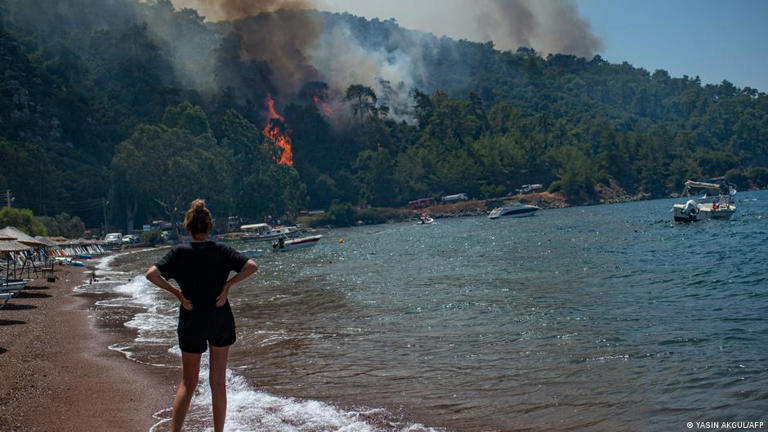

Discover CALS
See how our current work and research is bringing new thinking and new solutions to some of today's biggest challenges.
- Agriculture
- Applied Economics
- Climate Change
- Communication
- Environment
- Global Development
- Health + Nutrition
A tale of two parks: Revitalizing the bond between protected areas

The Humphrey PACT (Practitioner - Assistant - Collaborative - Training) Program pairs undergraduate students in Global Development with Hubert H. Humphrey Fellows to work on a research endeavor in the fields of agriculture, rural development, and natural resource management. In this bilateral exchange, each undergrad is assigned as a research assistant, contributing to the Humphrey Fellow’s work from their home countries. Humphrey Fellows, who are mid-career professionals from around the world, gain support from students, while students get direct experiences with real-world development projects.
In their PACT partnership, Maia Tsignadze (Humphrey Fellow from Georgia) and Lucy Cao ‘26 (Global Development), explored how two sister parks — in South Dakota, USA and the country of Georgia in eastern Europe — could forge a renewed partnership. In this article, they explore the similarities, common goals, and shared challenges that these two remarkable parks face, and discuss the potential for a revitalized collaboration that could create lasting positive change.
Many miles apart, many similarities
In the vast expanse of South Dakota, USA, lies Badlands National Park, a stunning display of nature's artistry. Across the globe, in the eastern European nation of Georgia, the Vashlovani Protected Areas stand as a haven for diverse flora and fauna. These two parks, though separated by continents, share an undeniable connection: their designation as sister parks since 1999. However, despite this bond, the potential for collaboration between them remains largely untapped.
Both Badlands National Park and Vashlovani Protected Areas are dedicated to preserving their unique ecosystems and promoting biodiversity. They face similar challenges in terms of habitat conservation, species protection, and managing the impact of human activities. By working together and sharing knowledge, these two parks can enhance their conservation efforts and develop innovative solutions to these common challenges.
Despite their geographical separation, Vashlovani Protected Areas and Badlands National Park exhibit intriguing similarities in their landscape and environmental characteristics. Firstly, both parks showcase captivating geological formations sculpted over time by erosion, visible through distinctive badlands features of both parks. Moreover, they share similar characteristics in terms of natural features and management demands. The distinctive badlands features and the large prairie expanses present in both parks require specialized management strategies.
In Badlands National Park, the summers are hot and mostly clear and the winters are freezing, snowy, windy, and partly cloudy. Vashlovani Protected Areas are characterized by a hot, arid climate, which is facilitated by the complete absence of freshwater reservoirs and minimal annual precipitation.
Both Badlands National Park and Vashlovani Protected Areas have made remarkable progress in reintroducing key species to their natural environments. Badlands has successfully reestablished the black-footed ferret, bighorn sheep, bison, and swift fox, while Vashlovani has witnessed the return of gazelles through the WWF-Caucasus Gazelle Programme. These efforts symbolize the potential for collaboration between the sister parks, as they share experiences and expertise to support each other's conservation goals and ensure the long-term survival of these iconic species.
Leaders in biodiversity
Badlands National Park is a geological wonderland renowned for its stunning landscapes and unique ecosystems. The park is characterized by its rugged terrain, deep canyons, and iconic eroded buttes. Beyond its mesmerizing geological features, Badlands National Park is home to a diverse array of flora and fauna, showcasing a remarkable biodiversity of over 700 species. The park's ecosystem includes hardy prairie grasses, colorful wildflowers, and resilient shrubs adapted to the harsh climate and arid conditions. Common fauna species include bighorn sheep , bison , black-billed magpie , black-tailed prairie dog , coyote , elk , mule deer , pronghorn , prairie rattlesnake , porcupine , whooping crane , and white-tailed deer . Badlands is also home to several most endangered species in the US, including American Bison, Black-footed Ferret, and Pronghorn. The intricate relationship between the geological formations and the living organisms in Badlands National Park underscores the interconnectedness of the natural world, making it a captivating destination for those interested in exploring the dynamic intersection of geology and ecology.
Vashlovani Protected Areas, on the other hand, are characterized by their unique ecosystems, which support a wide range of flora and fauna. The protected areas are home to numerous bird species, as well as mammals like jackals, foxes, rabbits, lynx, and even wolves. The region also serves as a vital habitat for several rare and endangered species, including the Persian leopard. Conservation efforts in the area aim to preserve this rich biodiversity for future generations to enjoy. In Vashlovani steep clay precipices the colonies of swallow nests, which are called “Town of swallows”. There are many water birds – herons, cormorants, teals, wild ducks, red ducks, ospreys, and white-tailed eagles.
Vashlovani National Park also boasts abundant avian diversity, hosting numerous species such as starlings, rose-colored pastors, sparrows, wheatears, red-gold finches, and more. During winter, sightings of little bustards and the occasional Great bustard are possible. Birds of prey including Imperial eagles, black vultures, Marsh harriers, and buzzards soar the skies, while partridges and occasionally francolins inhabit the area. Pheasants thrive in the Alazani groves. Additionally, the park harbors a significant reptilian population, with 25 recorded species. Moreover, Vashlovani Protected Areas are inhabited by a myriad of insects, including 109 species of butterflies, contributing to its rich biodiversity.
Avenues for collaboration
The impacts of climate change, habitat loss, and invasive species are the shared concerns that create a unique opportunity for collaboration, enabling the parks to exchange ideas and best practices for addressing these threats and promoting sustainable conservation.
To forge a stronger partnership between Badlands National Park and Vashlovani Protected Areas, joint projects should be explored. There are several potential areas of collaboration between Badlands National Park and Vashlovani Protected Areas. One such area is the exchange of best practices in habitat management and species conservation. Joint research projects on shared species or similar ecosystems can also yield valuable insights. Additionally, collaboration in the field of environmental education and eco-tourism can help both parks raise awareness about the importance of preserving biodiversity and promoting sustainable tourism.
Furthermore, a renewed bond between these sister parks could serve as a powerful example for other parks worldwide. By demonstrating the benefits of unity in conservation efforts, Badlands and Vashlovani can inspire others to forge similar partnerships, multiplying the positive impact on our planet's invaluable ecosystems.
In conclusion, the potential for a renewed collaboration between Badlands National Park and Vashlovani Protected Areas is immense. By recognizing their shared traits and common objectives, we can foster a partnership that not only celebrates their commonalities but also leverages their combined strengths to tackle the challenges they face. Together, these two remarkable parks can make a lasting difference in preserving our planet's natural heritage and inspiring future generations to do the same.
About the authors

Humphrey Fellow, 2023-24 (Georgia)

Global Development major
Keep Exploring
Professors Peng Chen, Mariana Wolfner ’74 and Timothy A. Ryan, M.S. ’86, Ph.D. ’89, have been elected to the American Academy of Arts and Sciences, the academy announced on April 24.
- Molecular Biology and Genetics

- Cornell Cooperative Extension
- Animal Science

We openly share valuable knowledge.
Sign up for more insights, discoveries and solutions.
More From Forbes
Bucket-list travel: why you need to go to the galapagos now.
- Share to Facebook
- Share to Twitter
- Share to Linkedin
Galapagos Blue-footed Boobies
The Galapagos is an enchanted place, and it has stayed that way largely because it has been protected. Several islands in the remote volcanic archipelago remain as pristine as they were well before Charles Darwin first visited in 1835.
But for how long? With nature tourism surging since the pandemic, it’s not surprising that the Galapagos, 600 miles off the coast of Ecuador, is now at the top of everyone’s bucket list. According to the World Travel and Tourism Council (WTCC), wildlife is now the primary motivator for travelers who want to experience nature. Where better to see it than the Galapagos Islands?
A Fragile Ecosystem
However, the rise in tourism in the Galapagos is putting a strain on resources the Islands can provide such as fresh water, electricity (provided by diesel-run generators), food and transportation. With so many travelers wanting to visit the Galapagos—and they should—how is this sustainable? What needs to happen right now to protect the people and wildlife of the Galapagos, so that we can all enjoy it for years to come?
According to Dolores Gangotena, co-founder of Quasar Expeditions , a pioneer in responsible and regenerative tourism with her husband, Eduardo Diez, “The number of tourists the Galapagos receives–300,000 in 2023–is not sustainable,” she says. “Every year I see more people living in the Islands, more hotels being built, more cars, more motorcycles, and even more dogs, which also pose a threat to the fragile ecoystem,” she continues.
Apple iPhone 16: Unique All-New Design Promised In New Report
Huawei s pura 70 ultra beats iphone with pioneering new feature, meet the fintech billionaire making a fortune rewarding home renters.
Landscape View of Darwin's Arch near Darwin Island of Galapagos.
The Galapagos is a UNESCO World Heritage Site and National Park managed by the Galapagos National Park Service, the Charles Darwin Research Center and the Ecuadorian government. For the past 12 years, the Charles Darwin Foundation has warned about the need to monitor the human capacity of the islands. If strained much further, it could cause an extreme threat to everything that makes Galapagos such a draw to begin with, according to Gangotena. “Change needs to happen, and it needs to happen now,” she says.
Ecotourism and Sustainable Tourism
Gangotena first visited the Galapagos in 1969 on a school trip, and the experience was life-changing. Her love of nature and passion to preserve it inspired her to launch Quasar Expeditions in 1986. The mission was simple: “to share nature with the world in order to protect it, and keep the destinations as pristine as we found them,” she says. When Gangotena and Diez founded Quasar—now a family business, with their sons—they were the first small-boat luxury cruise company in the Islands, and they have been leaders in sustainable tourism ever since.
A family business: Quasar Expeditions founders Dolores Gangotena and husband Eduardo Diez with sons, ... [+] in the Galapagos
An outspoken advocate for conservation in the Galapagos, Gangotena says that unless oversight tightens up and the footprint slows down, she is worried for the future of the Islands. “People using the resources of any natural area need to understand the impact of their actions and know how to protect, prevent damage, and learn love for the destination,” she says.
According to Gangotena, stronger regulation for fishing boats is needed to prevent over-fishing. (Global warming is already posing a threat to wildlife by diminishing food sources like fish.) Education about “proper garbage disposal, recycling, and using state of the art engines and generators that consume less fossil fuels” is important. Small boats for day trips and artisanal fishing need to be better regulated to protect wildlife. And policymakers need to work closely with conservationist groups like the Charles Darwin Foundation to monitor and manage the impact on resources in the Galapagos, which can have a ripple effect on people and wildlife.
Environmental and Community Impact
Over the years, Quasar has been involved with supporting the Galapagos community as well as the environment. The company has funded a project to educate teachers and students on how to become stewards of the environment. The company sources locally and Gangotena supports local craftspeople and nonprofits throughout Ecuador. She has created an organic vegetable farm project and a hospitality training school on the islands, and offers students a chance to spend time on board the Quasar yachts in order to observe firsthand what may become an employment opportunity for the future.
By keeping the Quasar expeditions small–two elegant yachts that house 16 and 32 guests onboard–guests not only have a richer more intimate experience, but the environmental impact is significantly lower than it would be on one of the larger boats that tour the area. “Smaller is always better,” she says. “Every guest is given individual attention by the naturalists and personal interactions with the wildlife, in order to enjoy every single moment nature offers us when there.”
In the Galapagos Islands, off of Floreana Island a Galapagos sea turtle (Chelonia mydas agassisi) ... [+] swims in Champion Islet
When travelers snorkel off the coast of Santiago Island with Quasar, they share the sea with an underwater world: giant sea tortoises in suspended animation; juvenile sea lions, curious enough to paddle just inches away from your mask; schools of electric-hued tropical fish; tiny but speedy penguins. As the sun slices through a tranquil mangrove lagoon at Bahia Elizabeth off Isabela Island, kayakers scour the waters for rays and sea lions, which are plentiful and easy to spot. A hike up to Darwin’s Lake reveals unobstructed views of sea and sky that extend for many miles. Pelicans and cormorants crisscross the sky. Marine iguanas build nests in the sand or sun themselves on the lava rocks. Nearly half of all life on the Galapagos–marine and land iguanas, Darwin's finches, Galapagos giant tortoises, Galapagos sea lions, blue- and red-footed boobies, Galapagos penguins, for example–is found nowhere else on the planet.
Because the Galapagos is on the equator, every constellation is clearly visible, and the night sky is thick with stars. Schools of dolphin frolic off the sides of Quasar Expeditions’ luxuriously outfitted 12-passenger yacht, the Grace, which once belonged to its royal namesake, Princess Grace. Sea lions chase schools of jumping fish, and frigates swoop into the sea.
Colorful marine iguana
The company has newly expanded routes into Patagonia and Belize. And in 2025, there will be an addition to their Galapagos fleet. The Conservation, outfitted for 18 guests, will be the first yacht in the Galapagos to operate with a hybrid engine system.
Expectations are high when it comes to the Galapagos, and the sheer beauty of these boats, with their knowledgeable naturalist guides, elegant accommodations, skilled and gracious Ecuadorian operations team, ever-evolving and fascinating itinerary, next-level food and wine, make this a superior experience. But the goal is to aspire higher: “We hope we change our guests' view on nature and on how they can make a difference at home,” says Gangotena. “When this happens, we will have achieved something significant.” Something you will also want to protect and share, for years to come.

- Editorial Standards
- Reprints & Permissions

IMAGES
VIDEO
COMMENTS
In reality, ecotourism refers to the sector of low-impact tourism that includes natural areas, whereas sustainable tourism is a broader term describing sustainable practices within and performed by the tourism industry. The environmental damages that can stem from irresponsible tourism have continued to come to light through complications from ...
Focus: Ecotourism primarily focuses on visiting natural and undisturbed areas, with an emphasis on conservation efforts and education about the environment. Sustainable tourism, on the other hand, has a broader scope and considers the interconnectedness of environmental, social, and economic aspects of tourism.
Conclusion. Ecotourism and sustainable tourism are two approaches that share a common goal of minimizing the negative impacts of tourism on the environment and local communities. While ecotourism focuses on nature-based experiences and biodiversity conservation, sustainable tourism takes a broader perspective, considering economic, social, and ...
The key difference between ecotourism and sustainable tourism is that sustainable tourism encompasses social, cultural, and economic sustainability, while ecotourism is a subset of sustainable tourism, specifically focusing on environmental conservation.. Ecotourism and sustainable tourism are two popular forms of tourism in the modern world. Both focus on responsible travel that has a minimal ...
Sustainable tourism and ecotourism are similar concepts and share many of the same principles, but sustainable tourism is broader; it covers all types of travel and destinations, from luxury to backpacking and bustling cities to remote rainforests. Create a world where people and the planet prosper together.
In simpler words, under sustainable tourism, the focus is on the environmental, financial, and socio-cultural aspects of the area that is being visited. The main difference between ecotourism, green tourism, and sustainable tourism is that the latter has much wider scope. A key difference between sustainable tourism and ecotourism is that the ...
Ecotourism. Ecotourism, as defined by the International Ecotourism Society (TIES), is "responsible travel to natural areas that conserves the environment, sustains the well-being of the local people, and involves interpretation and education.". This kind of travel is geared towards conservation and preservation of wildlife.
Ecotourism is a niche segment of tourism in natural areas. The term emerged in the late 1980s, with the raising importance of ecotourism. According to Fennell, "Ecotourism is a sustainable form of natural resource-based tourism that focuses primarily on experiencing and learning about nature, and which is ethically managed to be low-impact, non-consumptive, and locally-oriented (control ...
Sustainable tourism and ecotourism are two of the fastest growing trends in the travel industry, but often we find the two terms lumped in together to mean exactly the same thing. So what exactly is the difference between ecotourism and sustainable tourism?. In this article, we'll outline the key differences between the two concepts, and provide examples of how they are being used on the ...
Sustainable tourism is an umbrella travel concept under which ecotourism and several other subsets can be categorized. It's tourism that encompasses the long-term impacts of travel overall.
Key differences between sustainable tourism and ecotourism . While sustainable tourism represents a holistic and flexible approach that can be adapted to different forms of tourism and contexts, ecotourism has a more focused focus. It focuses exclusively on natural areas and the promotion of a "green" tourism that values environmental ...
These benefits play a crucial role in the development and sustainability of tourism destinations. 1. Economic growth: Tourism is a significant economic driver, generating revenue and employment opportunities. It creates jobs in various sectors, such as hospitality, transportation, food services, retail, and entertainment.
Ironically, ecotourism as travel activity can be much less sustainable than a "normal" city trip, for example. Because eco-lodges and parks are often located in remote areas, getting there and back can leave a much larger environmental footprint. If this is the case, see if you can at least offset the greenhouse gas emissions caused by your ...
It emphasizes the importance of revenue staying within the destination, contributing to the sustainable development of the local economy. Traditional tourism, in contrast, may lead to economic leakage, where a significant portion of the income generated from tourism flows back to external stakeholders. 3. Cultural Impact: Ecotourism prioritizes ...
Sustainable ecotourism engages the 3 pillars of sustainability: environmental, economic, and social benefits. Unsustainable ecotourism neglects 1-2 of the pillars resulting in negative implications for nature or locals. Nature-based tourism is often confused with ecotourism - learn how to spot the difference.
The difference between sustainable tourism and ecotourism. ... It was the first 'pillar' that gained the most attention, highlighting the notion of ecological (aka eco) tourism. The chronological development of the concept of sustainable tourism and ecotourism. Adapted from Swarbrooke (1999)
Difference Between Ecotourism and Sustainable Tourism There's been a steady rise in the demand in ecotourism and sustainable tourism over the last few years. Also, the continuous rise in natural disasters such as quakes, tsunamis, floods, and lethal virus outbreaks as COVID, Ebola, and Swine Flu, have left many countries concerned. In this respect, policymakers have started working on new ...
Ecotourism and sustainable tourism. May 2021. Conference: Maros Pangkep National Geopark Sustainable Tourism Destination Management and Development Webinar. At: Makassar, Sulawesi, Indonesia ...
Regarding ecotourism, the World Tourism Organization proposed some measurements of sustainable tourism, and also following Yusef et al. , the entropy weight method is employed to calculate a multi ...
Indonesia aims to welcome more than 14 million tourists in 2024. Last year, Tourism and Creative Economy Minister Sandiaga Uno announced that Indonesia is targeting 14.3 million foreign travelers ...
Costa Rica fights deforestation with ecotourism. In 1997, Costa Rica implemented a Certification for Sustainable Tourism that became a pioneering blueprint for a climate- and environment-friendly ...
Joint research projects on shared species or similar ecosystems can also yield valuable insights. Additionally, collaboration in the field of environmental education and eco-tourism can help both parks raise awareness about the importance of preserving biodiversity and promoting sustainable tourism.
Ecotourism and Sustainable Tourism Gangotena first visited the Galapagos in 1969 on a school trip, and the experience was life-changing. Her love of nature and passion to preserve it inspired her ...
Time difference between Leicester, United Kingdom and Elektrostal, Moscow Oblast, Russia. Leicester is 2 hours behind Elektrostal. Time in Leicester Time in Elektrostal; 07:07 AM Tuesday, April 16, 2024 Leicester's time zone: UTC+01:00 or BST : 09:07 AM Tuesday, April 16, 2024
Time difference between Anshun, China and Elektrostal, Moscow Oblast, Russia. Anshun is 5 hours ahead of Elektrostal. Time in Anshun Time in Elektrostal; 04:09 AM Monday, September 18, 2023 Anshun's time zone: UTC+08:00 or CST : 11:09 PM Sunday, September 17, 2023
Time difference between Zanzibar, Tanzania and Elektrostal, Moscow Oblast, Russia. Zanzibar is the same time as Elektrostal. Time in Zanzibar Time in Elektrostal; 05:50 AM Sunday, September 17, 2023 Zanzibar's time zone: UTC+03:00 or EAT : 05:50 AM Sunday, September 17, 2023
Time difference between Verona, Italy and Elektrostal, Moscow Oblast, Russia. Verona is 2 hours behind Elektrostal. Time in Verona Time in Elektrostal; 03:04 PM Tuesday, March 19, 2024 Verona's time zone: UTC+01:00 or CET : 05:04 PM Tuesday, March 19, 2024